

What is a Bow of a Boat? Types of Bow Designs
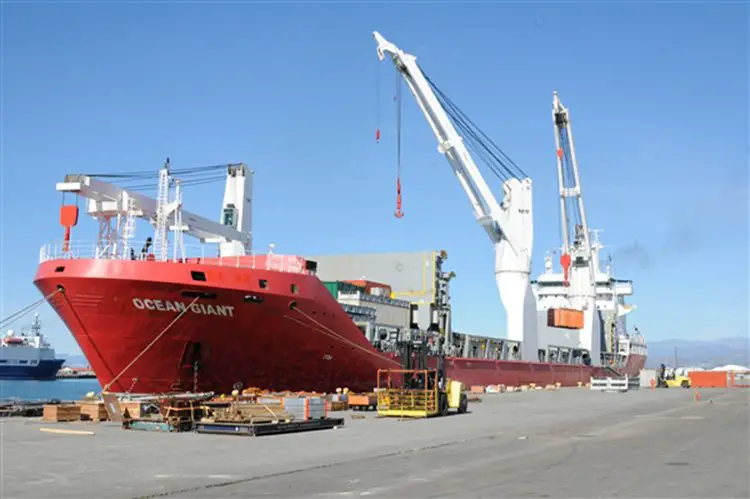
We will discuss a very important part of a ship or a boat – Bow .
Ships and boats face immense resistance on the water for the simple fact that compared to air, water produces more drag when moved through.
Hence the ships need to be designed in such a manner that the resistance is kept to the minimum. While conceptualizing a ship, the bow designs are the main factors.
While ships that are slender and curvier have less Wave Making Resistance while on the other hand, for the fuller ships the components of Wave Breaking Resistance are a more important factor.
What is the Bow of a Boat?
The bow is the name for the forward ends of the hull on boats and ships. It is the opposite end from the stern. The bow is that part of the ship that comes in contact with the water first and can be designed in a manner to control how the waves interact with the ship.
Where is the Bow of a Boat?
The bow is located in the front of a boat or ship. The bow of a boat usually has a pointed shape extending out of the water to cut through waves. This is designed to reduce drag and allow smoother movement through the water.
Types of Bow Designs
Though new designs seem to be dropping in every now and then, they seem to have reached a saturation point as most of them seem to be improvements made on old designs. With all that kept aside, here are some bow design types:
- The bulbous bow
- A normal bow without a bulb
- Other special bows
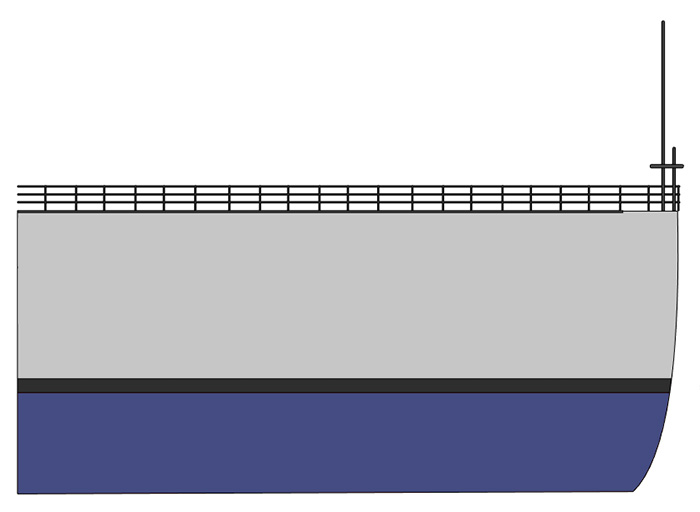
What we today call a normal bow has evolved from what was previously a vertical bow . Rake may be defined as the angle the ship’s stem makes with the waterline. This bow has the maximum waterline length of all.
A straight-edged vertical bow that is perpendicular to the waters is known as a plumb bow . If we don’t include an X-bow or Inverted bow, they happened to have the maximum waterline. This is what enables it to attain greater hull speed.
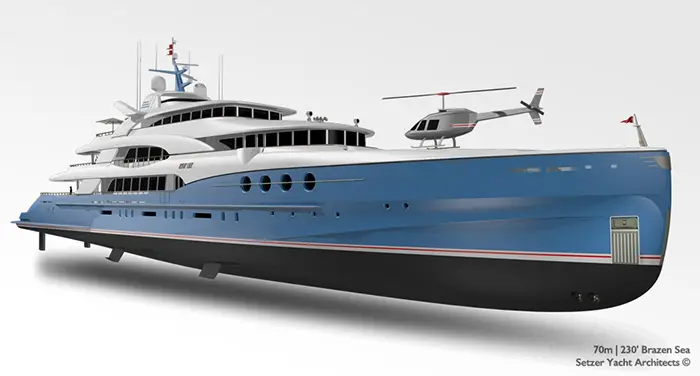
Pic courtesy: http://www.setzerdesign.com/new-concepts/plumb-bow-superyachts
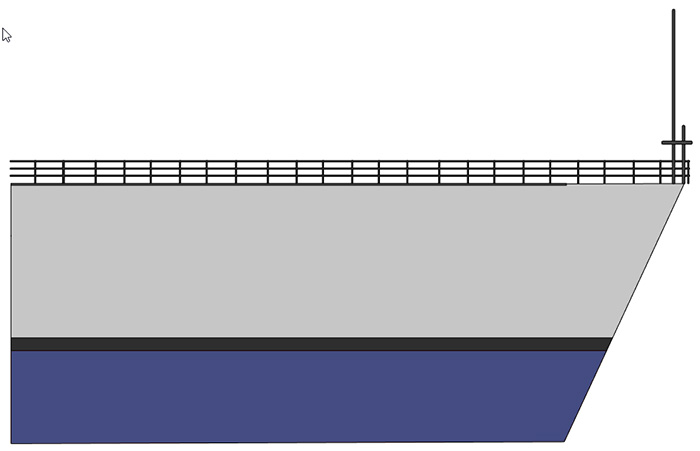
Raked bow designs can be said to be the most commonly used bow. It is also the most popularly used. The line of the bow is flat. It does not have any curves. The acute angle has to be less than 45 degrees. This enables the forward waterline position to allow more accommodations and especially a larger forward stateroom V-berth.
Clipper Bow
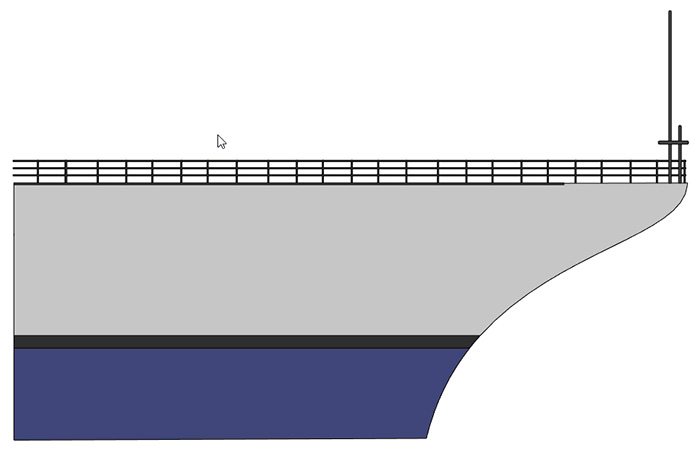
Clipper bow designs are some of the most traditional types of bow designs. The angle at which a ship’s hull plate or planking departs from the vertical in an outward direction with increasing height is known as a flare. They are used in conjunction with rakes.
Apart from easing the pitch motions flaring keeps water off the decks. Sometimes the rake is set up in such a manner that it protects the submerged portion during the collision by taking the impact first. This is known as the ‘crumple zone’.
In general, these types are called clippers . The way the rake is set up here increases the center of buoyancy as well as the stability of the ship. This, in turn, increases the GM which is an important factor for the ship’s stability.
Read more: What is a clipper ship?
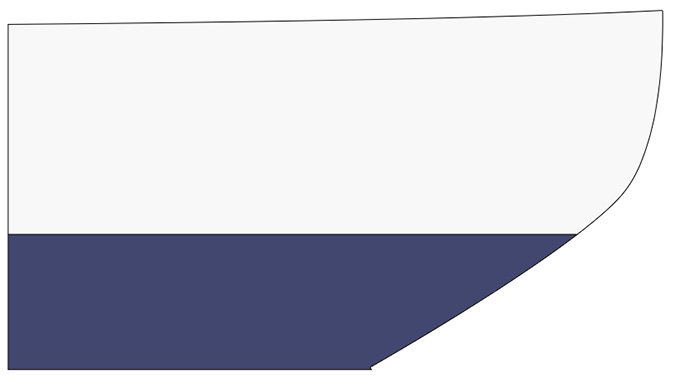
A spoon bow is a kind of bow design that convexes to the deck. It is called so because of its spoon-like appearance. This curve near the waterline is the most gradual. Such bow designs produce wave-making resistance due to the curvature at their cross-section.
Bulbous Bow
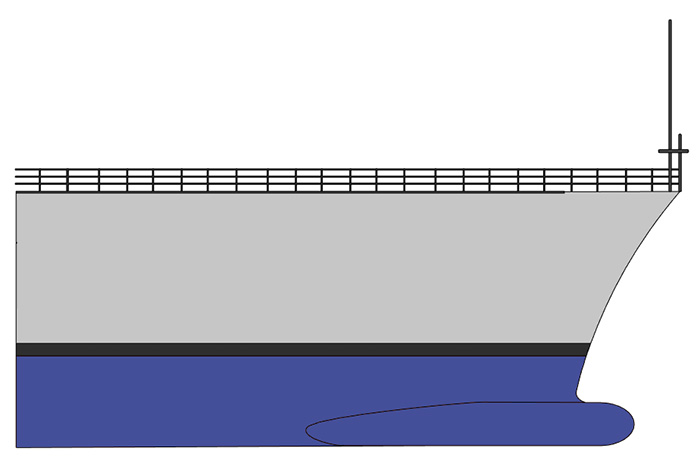
In bulbous bows, there is a protruding bulb at the bow just below the waterline. Here the water flows around the hull such that it reduces drag and increased fuel efficiency (up to 12% to 15% more than those ships that don’t have a bulbous bow), speed, range, and most importantly stability.
A bulbous bow increases the buoyancy of the front part and thereby decreases some of the up and down motion of the ship.
They are especially effective when the waterline length is longer than 15 meters and when the vessel is supposed to operate at its maximum speed most of the time. Such conditions are usually met by naval vessels, cargo ships, passenger ships, tankers, and supertaskers.
A bulbous bow would be detrimental to efficiency if used on smaller watercraft and thereby never used on powerboats, sailing boats , yachts, and other recreational boats.
The bulbous bow does its job by producing what is called the bow wave . The bulb forces the water up forming a trough and when added to a conventional bow in the right manner cancels out the wave produced by it, hence reducing the vessel’s wake.
A bulbous bow is popular in seagoing cargo ships and vessels that are larger in size.
Also read: What is a Hydrofoil Boat?
Parabolic and Cylindrical Bows
Compared to the straight sharp bow section ship designers sometimes tend to design blunt stems, thereby creating a parabolic shape. They are sometimes using in addition to bulbs to tackle the Wave Breaking Resistance. These bow designs are popular in bulk carriers of a fuller build.
Parabolic bows have a close resemblance to cylindrical ship bows since they are also designed keeping a bigger form factor in mind. They have the ability to absolutely minimize the Wave Making Resistance if proper care is taken while designing them. They are ideal for ships in fully loaded conditions.
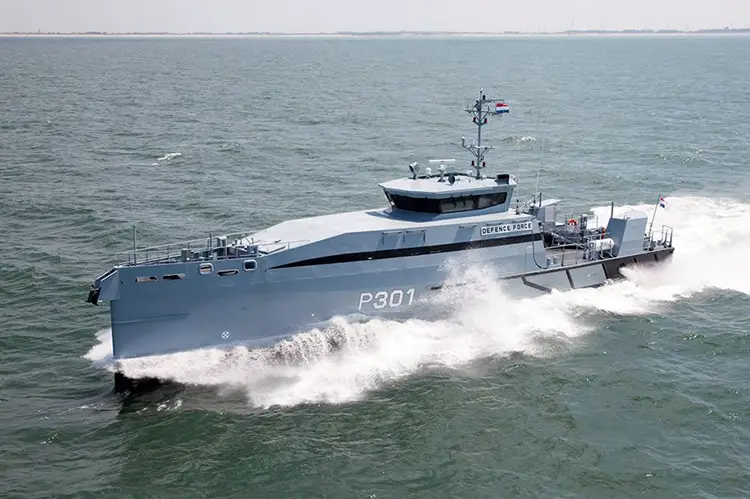
So, what is the job of an axe? To cut trees, right? The axe bow used in ships has a similar task too, that is cutting through the water. The long deep and narrow fore portion of the hull resembles an axe. The design includes a vertical stem line.
This shape allows the ship to easily pass through the waves and keeps the up and down motion of the ship to the minimum when compared to a normal bow. The lower portion of the fore-end of the hull is known as the forefoot. It remains submerged in the water and thus less open to slamming.
This has its disadvantages as well because a ship with an axe bow requires more power from the rudder while maneuvering.
Inverted Bow
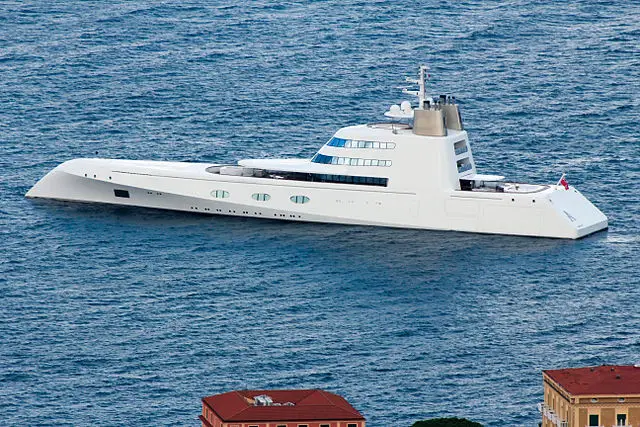
An inverted bow, often known as a reverse bow is referred to those in which the most extended point is not the top, but rather the bottom. They maximize the waterline, thereby resulting in tremendous hull speed and better hydrodynamic drag when compared to normal bows. To achieve that they sacrifice buoyancy and tend to dive under the waves instead of going above.
Just like the axe bow designs the pitching (up and down motion) and slamming are much reduced resulting in a much more enjoyable journey for the crew. They are quite operable in the medium tide and are easily maneuverable.
They are fuel-efficient too. Another positive aspect of the bow is that it doubles up like a deck and can accommodate the personnel.
Previously they were popular on battleships and large cruisers. But they became unpopular when newer designs came about. This was because they were not good at tackling high waves and became wet at high speed.
However, they have re-entered the market with all glory and are used nowadays mostly in AHTS (Anchor Handling Tug Supply) vessels, Seismic Vessels, Offshore and Pipelay Vessels, drillships, etc.
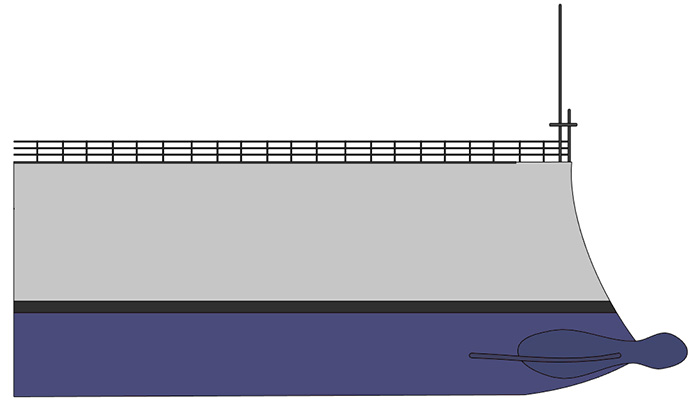
A ram bow is more of an extension that is built underwater below the hull of a ship. It is a kind of weapon which is used to pierce the hull of an enemy ship. It is not used much in today’s time but it was quite popular a few decades ago.
As we came to know earlier almost all possible combinations of bow designs have been attempted and so any bow that you come across must either be present in this list or would be the combination of the ones present here.
Similar Posts

20 Best Graduate Marine Engineering Institutes In India – GME Courses
What is Graduate Marine Engineering (GME)? Graduate Marine Engineering (GME) course is one of the best ways to become a marine engineer in India. A mechanical engineer can pursue a 1-year course of GME and become a marine engineer. GME is offered by around 20 institutes in India and it has become a course of…
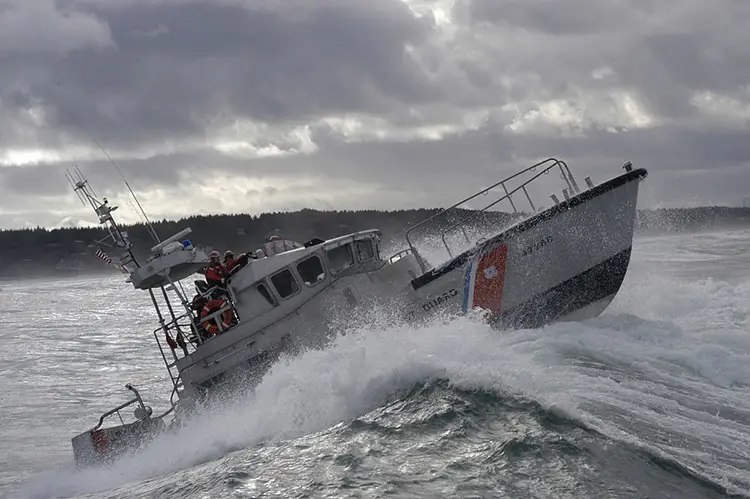
Types Of Ship Vibrations – Hull Vibrations & Machinery Vibrations
Vibration in ships not only causes structural fatigue but also ruins the experience of the passengers as well as the crew due to discomfort. As a result, many of the ships are discarded if they cause too much vibration. It is because vibration in ships may indicate that there is something wrong with the functioning…

What is Baltic Exchange?
The Baltic Exchange is a London-based and world’s only exchange that supplies traders dealing in shipping freight with real-time maritime shipping data for the settlement of physical and derivative shipping contracts. It has around 600 members from all over the world. Singapore, Shanghai, and Athens are among the exchange’s regional offices. For the trading and…
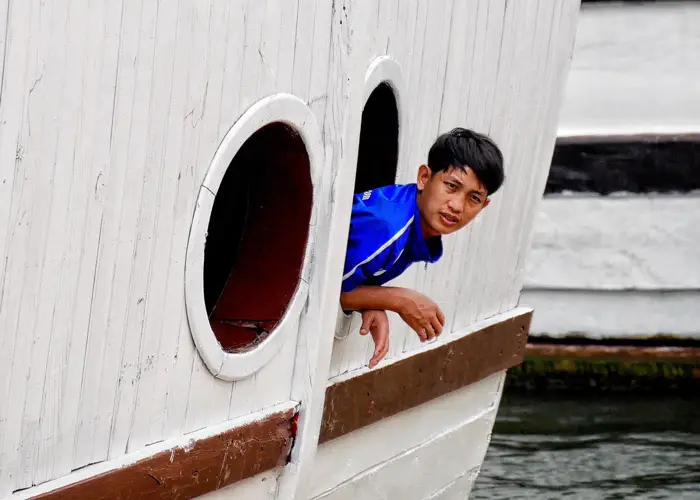
What is a Ship Porthole Window?
Porthole window is a small, often circular or oval-shaped window found on ships and boats. These windows are designed to serve specific functions that are crucial to maritime operations. Porthole windows in ships and other water vessels are one of the most recognizable and striking features. Porthole windows are installed primarily to facilitate natural lighting…
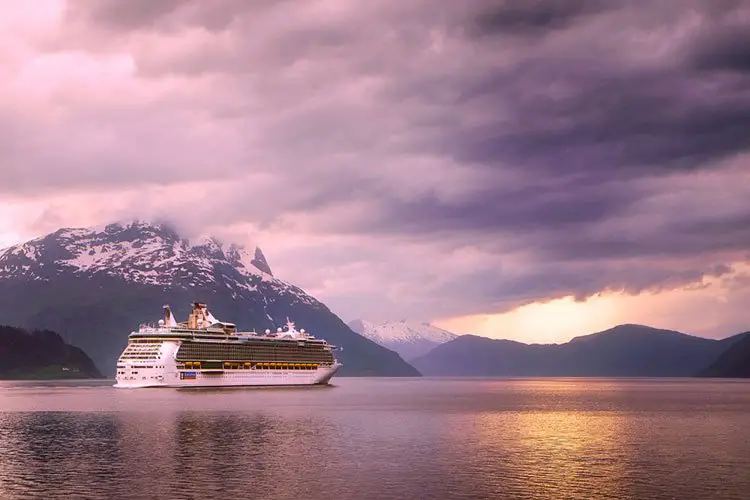
What Is A Cruise Ship?
What Is A Cruise Ship? A cruise ship is a luxurious passenger ship used for recreational and pleasure voyages and has all the amenities, entertainment options, activities, and attractions present only for the purpose of enhancing the passenger’s experience. A cruise ship usually takes a round trip of a particular route that is assigned to…
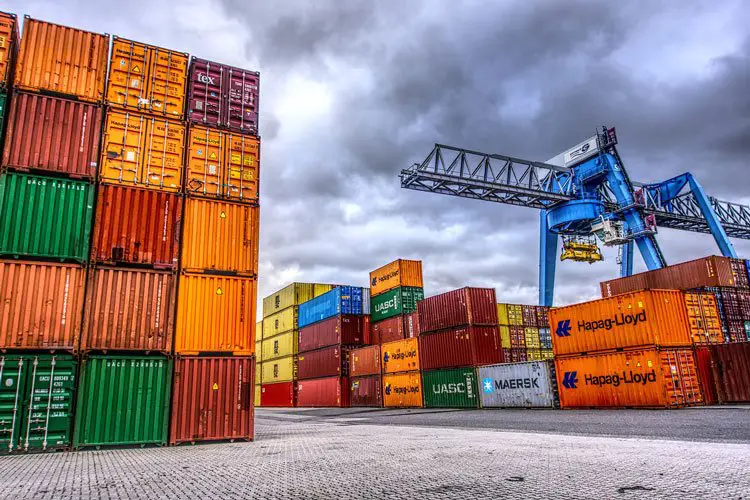
Top Container Terminal Operators in the World
Container terminals are very vital in this maritime industry as many facilities are being provided at the terminals and most of the part of the shipping can be done at the container terminals like packaging, loading-unloading, storing containers for some time and repair. Hence management and operating of these container terminals is a challenging job….
What is the name of a measurement from the bow of the boat to the waterline.
I’d call it overhang
Leave a Reply Cancel reply
Your email address will not be published. Required fields are marked *
Save my name, email, and website in this browser for the next time I comment.
This website uses cookies to improve your experience. We'll assume you're ok with this, but you can opt-out if you wish. Read More

Taking a Bow: The New Faces of the Next Generation of Cruise Ships

The designs of the next generation of cruise ships are taking bows to the past.
The latest announcements of cruise ship orders signal that the blunt prows that were the favored design for ocean liners a century ago are coming back into fashion.
It’s a stark contrast to recent decades, where a sleekly rakish, looming prow was the design favored for new cruise ships.
This year is seeing a flurry of new ships with nearly vertical bows and recent weeks have seen orders for at least half a dozen more.
Here’s why it’s the new fashion trend:
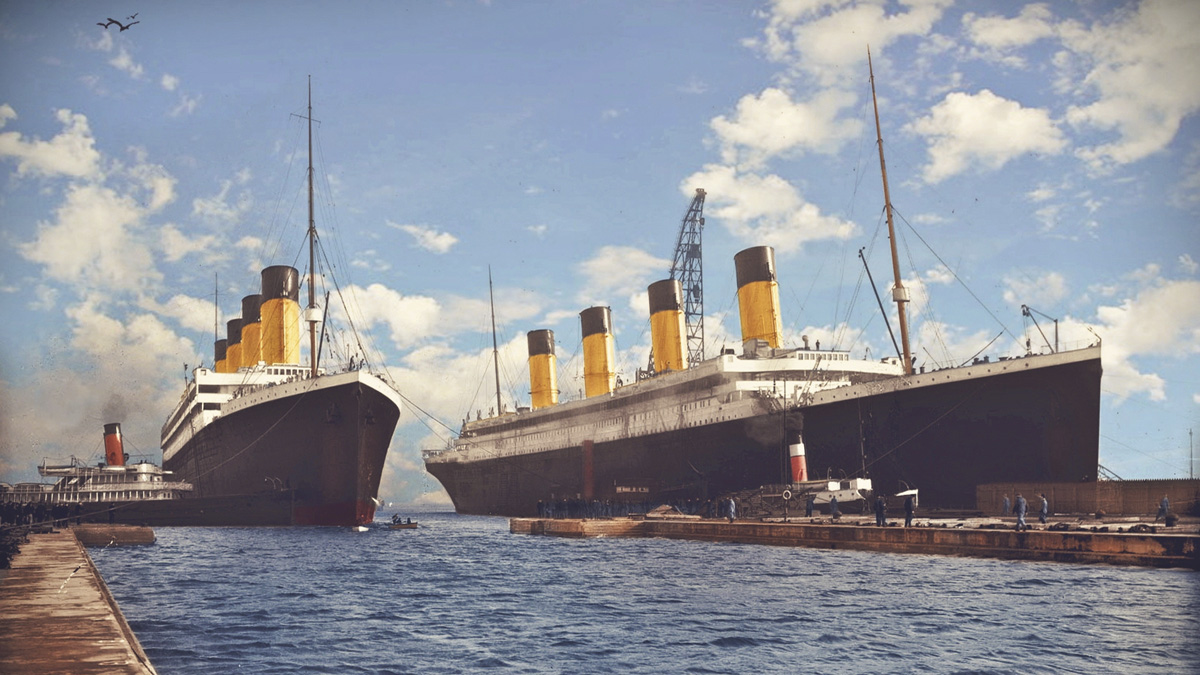
The shape of the front end of a ship today is largely a matter of changing tastes, but a long prow served a practical purpose before the age of engines. On a clipper ship, a long bowsprit was essential for attaching the arrays of ropes and stays that supported masts and raised the sails.
As sail ships got bigger, they got longer and front ends sported a tusk-like bowsprit jutting from the tip, often adorned with carvings of beautiful goddesses or fantastic beasts.
But with the coming of the age of steam around 1880, more knife-like vertical prows came to represent speedy ships– epitomized by White Star Line’s Titanic and her sister ship Olympic — that could slice right through waves.
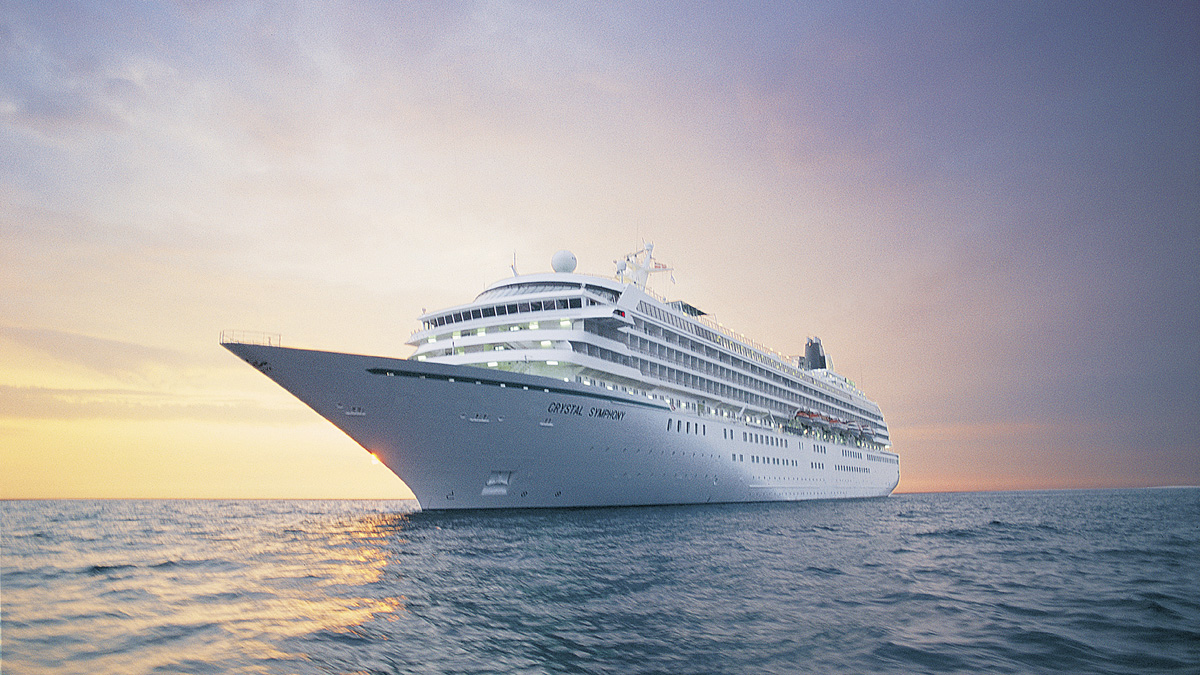
Pointy bows only came back into vogue with the age of streamlining in the 1930s, starting with Cunard Line’s Queen Mary . The fashion probably reached its peak with the dramatically jutting prow of Crystal Cruises’ Crystal Symphony .
Now the tides are turning again.
Cruise designers say a knife-edge bow design is more efficient than a flared bow. It is also said to cause less stress and strain on the vessel as it slices through heavy seas, instead of trying to part them as the usual flared bow does.
There are critics who note that with less ship between the bow and the deck, a vertical prow can make for more water splashing over forward decks. But designers say that’s easily overcome with a higher wall or enclosure around the bow.
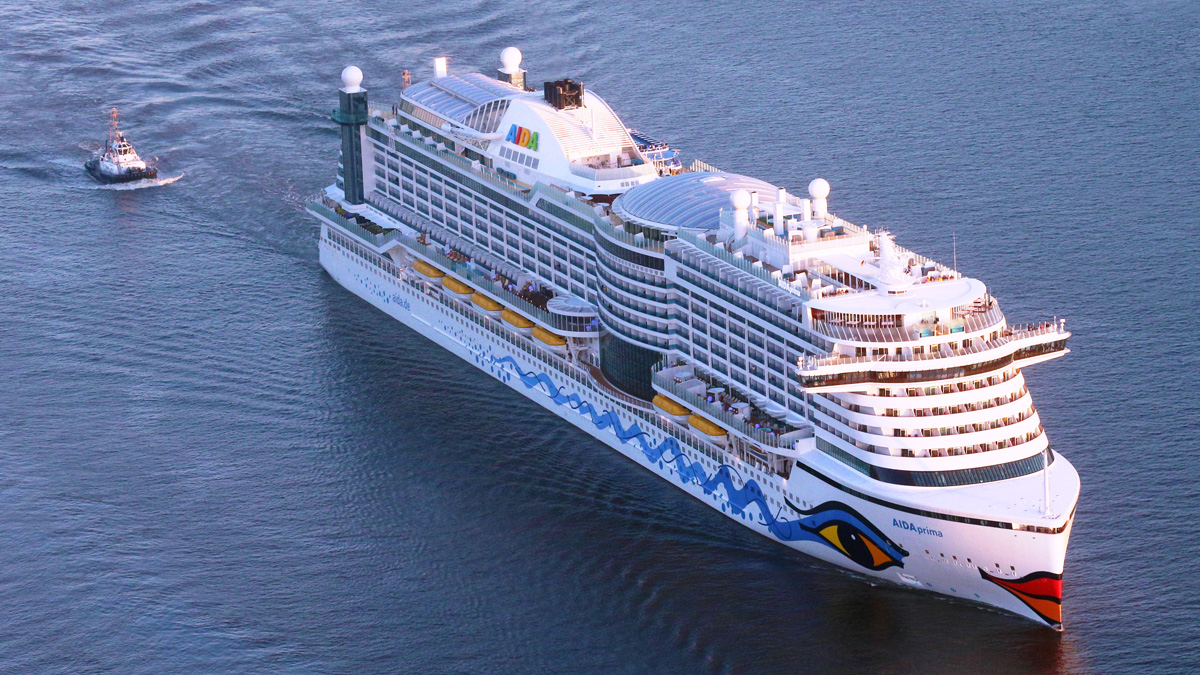
AIDA’s newest leads the trend
The arrival of AIDA Cruises’ AIDAprima in Hamburg in February is the start of a new dynasty. The 3,268-guest ship and a coming sister AIDAperla sport an almost vertical bow design and a covered front deck. The cheeky way AIDA chose to introduce the new look was to paint big puckered red lips around the bow.
Four similar, but larger 5,000-berth ships recently were placed on order by parent company Carnival Corp. for AIDA and sister company Costa Cruises .
Hurtigruten making a big splash
Norwegian exploration travel company Hurtigruten has announced an order of up to four new Arctic-rated ships to meet growing demand. The artist’s sketches show the 600-guest ships will feature very blunt front ends. The first two will debut in 2018 and 2019, and there is an option for two more ships to debut after 2020.
The signing marks the largest investment Hurtigruten has made in its more than 120 years. The new ships will be designed to operate in the Arctic and Antarctic regions as well as along the Norwegian coast. Like the new AIDA ships, they will be equipped with advanced environmental technology to reduce emissions and allow Hurtigruten to meet its sustainability goals.
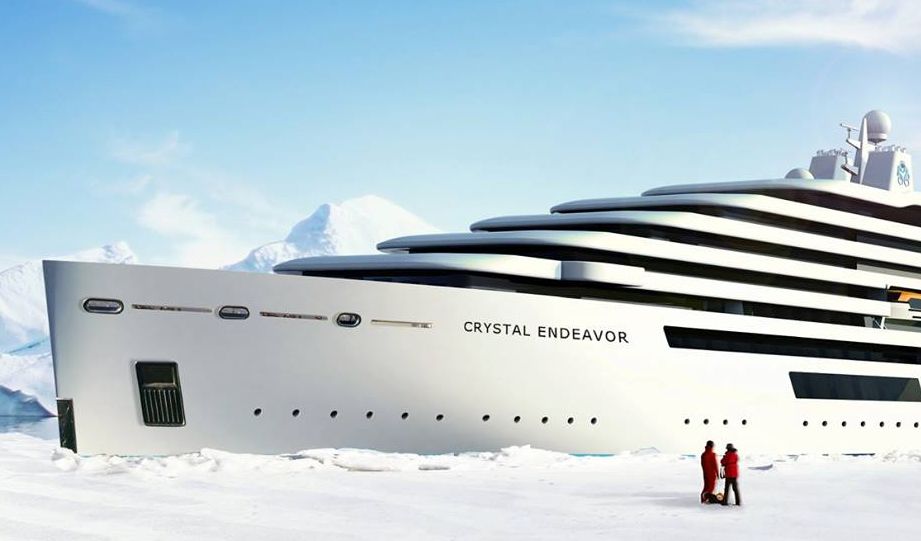
Crystal Cruises chooses the look
The 200-guest polar expedition ship Crystal Endeavor due in 2018 also sports a vertical bow. Being built by Lloyd Werft in Bremerhaven, she will be named for Captain Cook’s ship HMS Endeavor and delivery is scheduled for August, 2018.
Also notable are the new Crystal River Cruises ships that also feature snub noses. While they don’t have to brave rough seas, the design gives them a dramatic appearance. The 106-guest Crystal Bach starts sailing the Rhine in June, to be joined by Crystal Mahler , coming in August. Two more ships arriving in 2018 Crystal Debussy and Crystal Ravel, carry only 78 guests and are designed to sail on the Seine, Garonne, Dordogne and Gironde rivers in France.
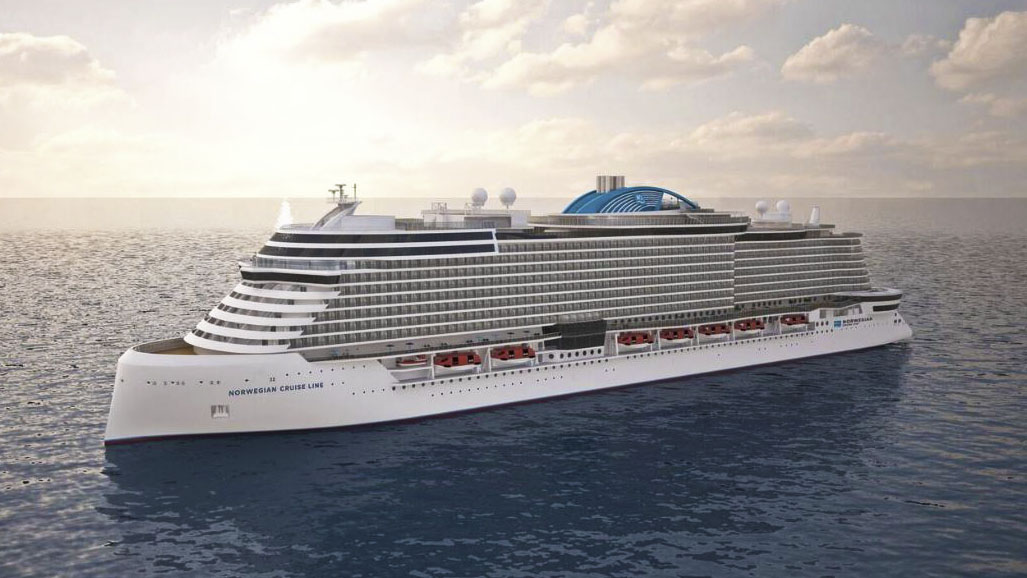
Norwegian’s next generation
Joining the trend, Norwegian Cruise Line signed an agreement in February with Fincantieri S.p.A. shipbuilders to build four next-generation ships to be delivered one a year from 2022 to 2025, with an option for two more to be delivered in 2026 and 2027.
All four ships will be able to carry approximately 3,300 guests and will build on its Breakaway-plus class that includes the cruise line’s latest ship, Norwegian Escape , as well as its next two, Norwegian Joy and Norwegian Bliss.
While few details of the new ships have been released, a preliminary drawing also shows the ships will have nearly vertical bows. While carrying fewer guests than Norwegian’s Breakaway-Plus class, additions will include 12 pools and hot tubs, a “Snow Room” that fills with four inches of snow and a three-story ropes course, the first of its kind at sea, as well as its first Margaritaville restaurant at sea.
This is not a trend to be snubbed.
You might also like:
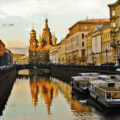
Copyright © 2024 | MH Magazine WordPress Theme by MH Themes
- Find an Expedition
- Voyage Calendar
- Travel Advisors
- Manage My Booking
- Call Now: +1-833-826-5828

Home > The X-BOW®
Have you heard about the ULSTEIN X-BOW ® As one of the core custom-design features of Aurora Expedition’s new Greg Mortimer ship, the X-BOW ® is set to “redefine expedition cruising”.
Although technology is always moving forward, the X-BOW ® is a true game-changer for the industry. In addition to the vast number of environmental benefits, the design makes the cruising experience safer and more enjoyable for all on-board the Greg Mortimer . Regardless of whether it’s navigating the challenging Drake Passage towards Antarctica or the European Arctic, the X-BOW ® is set to make a huge splash in the coming years.
Launched in 2005 by Norwegian ship designer ULSTEIN, Aurora Expeditions is the first to use the X-BOW ® design on an expedition passenger ship, having been of excellent use in over 100 shipping vessels across recent years. So, what makes the X-BOW ® so special? Here’s everything you need to know about this proven, innovative custom design.
How does the X-BOW ® work?
The bow of any ship is the same, right? Wrong! Instead of the traditional bow shape and design that punches through the water, the ULSTEIN X-BOW ® hull is curved in a novel shape which increases the foreship volume. As a result, the bow penetrates the waves in a way where the water gently flows over the bow – reducing impact and slamming loads.
The X-BOW® extends the waterline to full hull height which splits the wave’s energy rather than the traditional design where the water is crushed and creates a spray over the bow.
Here’s a summary of the technical benefits of the X-BOW ® on the Greg Mortimer :
- Reduced bow impact and slamming loads
- Reduced wave-induced vibrations
- Lower acceleration levels
- Lower pitch response due to volume
- Lower speedloss
To summarise, the main advantage of the ULSTEIN X-BOW ® is that it can pierce waves with more stability than a traditional ship bow. Instead of simply rising on the waves and then dropping with tremendous force, the X-BOW ® is able to absorb the force more consistently across its surface – enabling the ship to remain more stable during poor weather conditions, increasing comfort for passengers and crew alike.
How is the X-BOW ® ‘redefining expedition cruising’?
At Aurora Expeditions, our main goal is to provide passengers with a safe, comfortable and enjoyable cruising experience. Of course, as we all know, Mother Nature can often have something to say about this as we venture into some of the most isolated and dangerous waters on the planet.
We can’t change the weather forecast, but what we do have a say in is how our ships are designed and built to take on the roughest parts of the Southern and Arctic Ocean. The X-BOW ® on the Greg Mortimer is a massive part of this endeavour, making even the roughest conditions on the Drake Passage manageable.
Why choose to travel on a ship with an X-BOW ® ?
Thanks to the X-BOW ® , passengers will be able to enjoy more gentle sea crossings, faster transit speeds, reduced vibrations and improved comfort and safety on board. This will make it easier for passengers to take advantage of the dedicated observation areas for photography or to utilise the on-board services, such as the fitness centre and presentation rooms.
As the X-BOW ® allows the Greg Mortimer to absorb the impact of heavy seas, ocean spray is also reduced. This means that during safe conditions, it’s possible for you to venture out to the many observation decks and take a photo of the scenery without being drenched by the spray of a rogue wave. We believe this technology ensures a safer and drier environment regardless of whether you’re close to the shore or out on the Drake Passage!
Expedition cruising is all about seeing nature up close and personal, but is often also associated with long uncomfortable journeys. No longer! With the X-BOW ® changing the way that Aurora Expeditions travels through Antarctica and the European Arctic , we are redefining what it means to experience our fascinating planet for yourself. Relax, enjoy your surroundings and make the most of your time on-board the Greg Mortimer !
How is the X-BOW ® better for the environment?
Climate change and carbon emissions continue to be headline issues for the world and at Aurora Expeditions, we understand our responsibilities in protecting and preserving the environment for generations to come.
Again, this is where the X-BOW ® makes a huge difference. The Greg Mortimer has a higher transit speed through waves and experience fewer vibrations – getting passengers to their destinations in a timelier manner. What this also means is that the ship produces fewer emissions and overall lower fuel consumption. It’s vital that we’re actively working to reduce our footprint on the natural environment and the X-BOW ® marks an important milestone in this effort.
The X-BOW ® is a significant step forward in technology, but also in efforts to preserve and protect the environment for the future.
How safe is the X-BOW ®
Changing something as fundamental as a ship’s bow shape is a concept that has been years in the making. From development plans to on-water testing, through to the adoption on shipping vessels, we’ve taken time and effort to ensure that we got it just right. The X-BOW® design has been proven safer than the traditional bow shape and will certainly become more common in the years ahead. The X-BOW ® hull line design has been tried in all weather conditions and is in its element in the harsher environments such as Antarctica and the Arctic.
Anecdotal evidence of this is now widespread, with captains noting the larger view from the deck, the comfortable speeds possible through heavy seas, the reduced vessel movements during poor conditions and how ships are able to remain floating on top of the water rather than punching through large waves.
Although we time our expeditions for the best polar sea conditions (summer), we do sometimes experience adverse weather – it’s just the part of the world! Of course, with the X-BOW ® on the Greg Mortimer , we provide a more comfortable environment for our passengers.
Over a number of years, the hard-working team at Aurora Expeditions have been planning the launch of the Greg Mortimer . Paying tribute to our founder who brought his passion for exploration to the world, the new custom-built ship honours Greg’s extensive years of experience.
Of course, it’s not just the X-BOW ® that makes this ship stand out from the rest of our fleet. Here are some other features to look out for:
- Observation decks that offer a range of views out to the spectacular panoramic scenery
- Hydraulic platforms bringing you closer to the action from the comfort of the ship
- State-of-the-art lecture rooms for informative talks and briefings
- Dedicated Zodiac docks which make loading and unloading easier than ever
- On-board changing room/mudroom for storing outdoor clothing and gumboots after an adventure
- Restaurant and bar serving up a delicious daily menu
- Relaxed staterooms ranging from porthole to balcony categories
You’ll be able to also enjoy a number of activities during your voyage, using the ship as your base. This includes:
- Sea kayaking
- Diving and snorkelling
- Snowshoeing
- Ski touring
- Photography
If you would like to learn more about the Greg Mortimer , feel free to get in touch with our expert booking team today . We can create a range of travel opportunities for solo and group travellers that allow you to see the beautiful scenery of the polar regions from shore and from our brand-new ship.
Have any questions about the X-BOW ® or the Greg Mortimer ? We look forward to answering your questions, planning your trip and welcoming you into the next generation of expedition cruising!
Request a customised quote
Privacy Overview
Switch language:

Video: Can the X-BOW hull end seasickness on cruise ships?
Norwegian shipbuilding company Ulstein recently unveiled its X-BOW hull design to make navigation through rough waters smoother for passengers and cut emissions. Varsha Saraogi looks at how the technology works.
- Share on Linkedin
- Share on Facebook
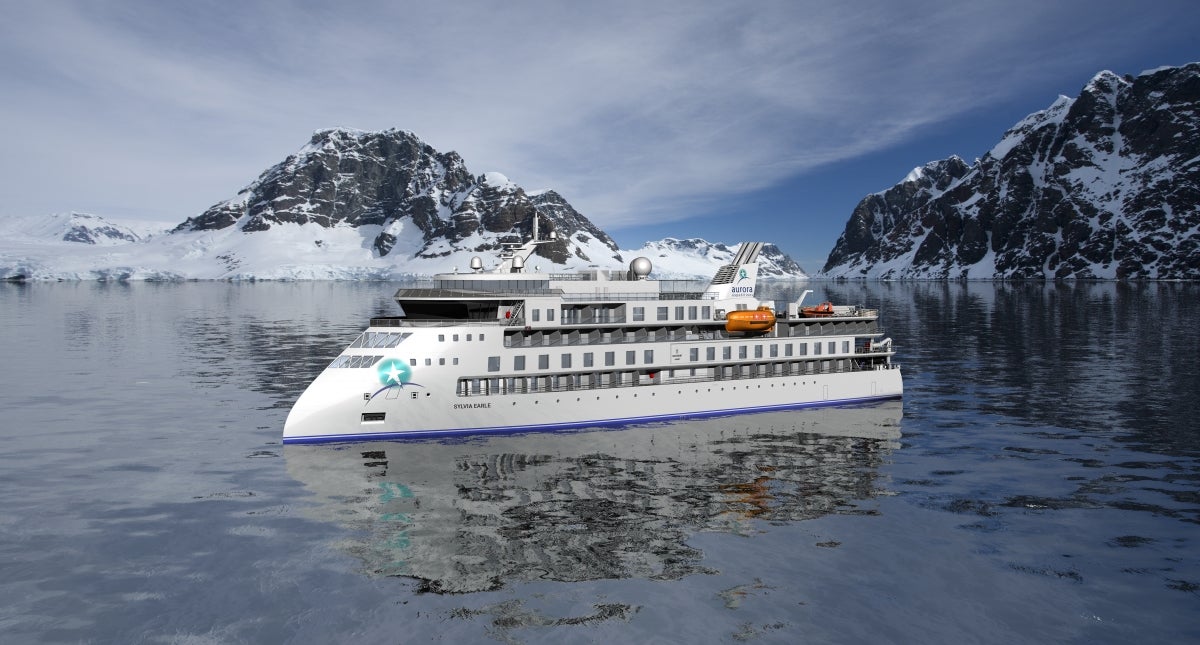
Sailing to Antarctica entails a slew of challenges. In particular, unstable waves are common when cruising through the infamous Drake Passage – the massive body of water situated between the southernmost tip of South America and Antarctica’s Shetland Islands. As a result, nautical engineering companies have been developing technologies and vessel designs to make travel smoother and minimise ‘mal de mer’, or seasickness.
The X-BOW hull design – also dubbed the “inverted bow concept” by creators Ulstein – was trialled in Aurora Expedition’s Greg Mortimer, which was the first passenger cruise ship to use the technology in October 2019 for an expedition to Antarctica.
Go deeper with GlobalData

Innovation in Ship: Anti-fouling Ship Hull Coatings
Environmental sustainability in ship: bio-fuel propulsion marine ve..., data insights.
The gold standard of business intelligence.
Find out more
Related Company Profiles
Aurora expeditions pty ltd, how does the x-bow design work.
The hull of an X-BOW vessel is curved backwards with more volume in the ship’s fore, therefore making it particularly suited to adverse conditions in harsh waters.
The bow slices the waves, preventing them from crushing at the hull and allowing the ship to continue its smooth course so travellers feel softer motion and fewer vibrations and disturbances.
When compared to fore ship volumes with more conventional, bulbous bow shapes, the X-BOW has more displacement volume starting from the waterline.
Greg Mortimer’s captain Ulf-Peter Lindstrøm said that sailing in a ship with the X-BOW design was a different experience. “You don’t feel the sea,” he said in a testimonial on Ulstein’s website. “In big seas, I kept waiting for the slamming, but it never came. Other ships can only keep half the speed.”
How well do you really know your competitors?
Access the most comprehensive Company Profiles on the market, powered by GlobalData. Save hours of research. Gain competitive edge.

Your download email will arrive shortly
Not ready to buy yet? Download a free sample
We are confident about the unique quality of our Company Profiles. However, we want you to make the most beneficial decision for your business, so we offer a free sample that you can download by submitting the below form
After the successful 12-day voyage, in January 2020 Aurora Expeditions announced that it will deploy a second X-BOW ship – Sylvia Earle – in October 2021.
However, this wasn’t the first time the X-BOW design has been used in ships. Initially purposed for the commercial market in the offshore oil and gas industry, the X-BOW ship design was launched in 2005. It was later introduced on vessels in other segments such as the offshore renewables industry and has already been used in more than 100 ships since its launch.
X-BOW: Boosting safety, stability and sustainability
The design is built in a way that it allows for more gentle sea crossings, faster transit speeds, as well as lower fuel consumption and air emissions.
The technology is conducive to being environmental-friendly and saves energy “because it uses less fuel to get through the waves,” the company said.
The key advantage of the X-BOW is that it helps pierce through waves and disperses the force to the sides of the boat as opposed to rising on the waves and slamming it down, therefore reducing the rocking motion.
As explained by Ulstein in a statement, the aim of the X-BOW is to enable ships to be more stable during poor weather conditions, as well as allow them to maintain speed in head seas and protect fore-deck areas from green sea and spray. The ship design is also said to cuts costs on equipment maintenance as it reduces wear and tear.
Since its launch, the X-BOW design has been trialled in extremely harsh conditions. For instance, the Polarcus Alima sailed through the Arctic waters north of Russia and the Esvagt Aurora navigated through the Arctic waters of Barents Sea, with both enduring rough seas during their voyages.
Sign up for our daily news round-up!
Give your business an edge with our leading industry insights.
More Relevant
Over half of Fortune 500 companies consider AI a risk to business
Port of vancouver approves overpass project to improve rail capacity, sas gets shareholder approval for gcc buyout, over half of professionals think esg is ‘just marketing’ – and why that matters, sign up to the newsletter: in brief, your corporate email address, i would also like to subscribe to:.
Ship Technology In Brief
Ship Technology Global : Ship Technology Focus (monthly)
I consent to Verdict Media Limited collecting my details provided via this form in accordance with Privacy Policy
Thank you for subscribing
View all newsletters from across the GlobalData Media network.
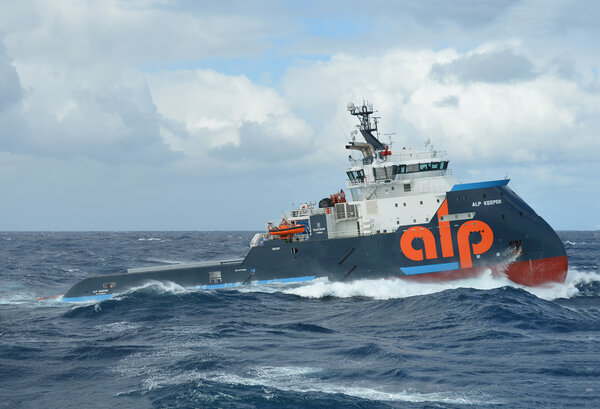
Statements from X-BOW® users
With feedback like ‘amazing experience’ and’ 'I’ll never again work on any other type of vessel in winter’ being stated by crews on X-BOW® vessels, it is hard to ignore the impact this hull innovation has had since it first appeared in 2005.
Versatile and iconic
The X-BOW® not only ranks as one of the most visual representations of forward-thinking in ship design and one of the most functional. The X-BOW vessels in operation or under construction range from expedition cruise vessels for polar voyages to flexible, efficient, agile offshore wind service vessels or powerful workhorses in the offshore oil & gas segment. The X-BOW has recently been implemented in segments such as yachting and fisheries.
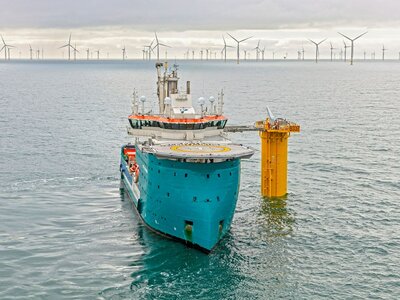
“It is very silent on board and very little vibrations. This is a good and pleasant workplace – also for the onshore technicians we’re transporting.”
The X-BOW is renowned for its seakeeping capabilities in rough seas.
Different vessel operators' feedback praises the X-BOW design's smoothness in heavy seas. It’s even been described as a ride of luxury.
No rolling, no spray, just pure fun! Captain on the PSV 'NAO Prosper'.
The X-BOW® eliminates slamming from head sea, minimising noise and vibrations, and keeping comfort even in harsh conditions. It allows the work to continue undisturbed.
Undisturbed towing
The Captain of the first X-BOW® vessel, the anchor handling tug supply vessel Bourbon Orca , reported that: "We could easily tow without the high dynamic tension variations experienced with traditional bow forms in bad weather conditions. And in transit in head seas, we kept high speed, floating on top of the waves, with a substantial reduction in heave movements and stamping."
Read the captain's story - surfing on top of the waves .
The owners of the seismic research vessels 'Oceanic Sirius' and 'Oceanic Vega' considered Ulstein’s X-BOW® configuration to be particularly suitable for the demands of the seismic industry, offering reduced surging and turbulence, lower added resistance and smoother bow emergence, leading to reduced operational disturbance and involuntary speed reduction.
The ultralong-distance towing vessels for ALP Maritime must endure rugged conditions while still performing precise work. The video below shows the ALP Keeper and ALP Sweeper during their journey from Singapore to Luanda Offshore while towing an FPSO in Q2 2018. Wave height at the time of filming was approx 6-7 metres. Filmed by third engineer Jan Dootjes.
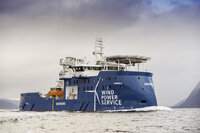
Proven design
The bow concept was launched in 2005, together with the first shipbuilding contract, and gained immediate interest from shipowners. Currently, more than 100 vessels with this bow concept are being constructed or are sailing around the world.
Saving time
Even when going fast, the X-BOW provides comfort and gets the job done. Rough weather is quite normal when working at sea, and this will delay operation and transit time. But not always.
“On my first trip we sailed into full storm with the waves head on - the perfect weather to demonstrate the X-BOW! We could keep full speed, which is not possible with a conventional bow.”
Completed her mission in time
When leaving Esbjerg, DK, in January 2016, the platform supply vessel NAO Guardian was heading for a mission in the North Sea. Wind and waves were tough, up to 40 knots from the west-southwest, but due to the X-BOW® seakeeping characteristics, the vessel could keep up speed, completed its mission in time and returned to base. A conventional bow vessel which left Esbjerg at the same time needed to slow down missed the weather window and had to wait three days before the mission was completed. The crew on this vessel filmed the X-BOW® vessel on their way to the oil field.
I've been Captain on several vessels before. If I were a newly-educated captain planning for a North Sea career, a vessel of this type would be my preferred choice.
X-BOW leads to higher speed
A similar story comes from the captain on NAO Fighter, a platform supply vessel of the PX121 design, stating that the vessel is the best he’s been on:
He continues:
This is a remarkably efficient and comfortable vessel in all weather conditions. Wind and seas have little impact on the vessel’s performance compared to conventional PSVs. We can compare performance directly when steaming on the same tracks to the oil fields: With the same weather conditions and 3-5 metres head sea within 30 degrees of the bow, our ship can easily and comfortably maintain a speed of 12-13 knots, while the other vessels have to reduce their speed to 7-8 knots. The higher speed comes as a result of the ‘X-BOW® effect’.
8-10 metre waves and only 1-knot speed loss
On the expedition cruise vessel, 'Greg Mortimer's, first journey, she came across very bad weather after leaving Cape Town heading for Ushuaia, Argentina. According to the Captain, the waves were 8-10 metres, with some waves reaching above deck 5, and strong winds. The vessel still kept high speed of 12-13 knots, with only 1-knot speed loss.
It’s a totally different experience! In big seas, I kept waiting for the slamming, but it never came. You don’t feel the sea, you have to relearn how to interpret the vessel behaviour. Other ships can only keep half the speed,
says Captain Ulf-Peter Lindstrøm.
Read the full story: In big seas I kept waiting for the slamming – it never came
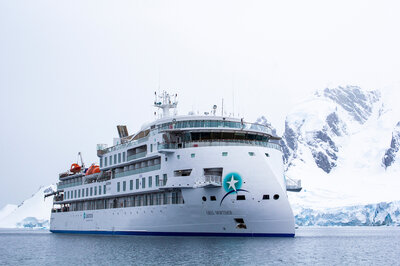
With such excellent sea-keeping capabilities, the vessel can swiftly transit open stretches of water. When transiting, vessel speed can be high even in adverse weather without reducing comfort on board. This means that the transit time in open seas can be reduced and more predictable, and the schedule more easily held.
The overall comfort and quietness of the vessel is another real big plus. The comfort that the X-BOW provides is just incredible: I have not had a single bow slam the entire season! Also, speed is considerably less impacted in head-on seas. The Drake Passage is a much less dreadful place now.

X-BOW® and X-STERN e-book
Learn more about the key benefits of the X-BOW and X-STERN hull lines.
Registration is required to access the e-book.
Read the whole story: ‘National Geographic Resolution’ – ‘A vessel beyond what I thought possible’
Comfort and Safety
Ulstein has a long history of designing for the offshore sector. Offshore vessels often have a complement of technicians, scientists, oil workers or other working passengers, with complicated, intensive tasks to perform. People onboard need a sound, reliable platform to do their work, a vessel that can keep going in some of the hostile environments they could be working in. They do not need to be bounced about in bad weather and be too tired to do their work.
I have never been on board a vessel that is so good to work and live in, both in transit and under operation. Other offshore vessels cannot match the X-BOW in getting quickly to a mission in bad weather.
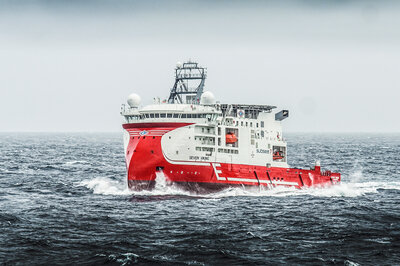
Among the statements by masters on twelve platform supply vessels of Ulstein’s design, originally ordered by Deep Sea Supply and now owned by Tidewater, of which several are operating in the North Sea, is this:
The vessel is extremely quiet when underway and minimal vibrations are felt in heavy seas. It is a ride of luxury.
The absence of slamming means no sea spray. The Captain of the platform supply vessel Bourbon Mistral put it this way:
On ships with conventional bows, the wheelhouse windows get sprayed. Spray is non-existent on this vessel.
For cruise vessels, the lack of spray means that the observation decks stay dry, for the comfort and safety of the passengers.
Here in the words of a representative from Aurora Expeditions, the operator of the first X-BOW® cruise ship:
As the X-BOW® allows the Greg Mortimer to absorb the impact of heavy seas, ocean spray is also reduced. This means that during safe conditions, it's possible for you to venture out to the many observation desks and take a photo of the scenery without being drenched by the spray of a rogue wave.
Getting complete rest
Sleep is a safety factor.
I used to work on a vessel with a conventional bow before signing on the Windea vessels. In harsh weather, the slamming and consequential vibrations made it impossible to sleep,
says Matthias Giebichenstein. He started to work on the Windea La Cour, and later signed on the Windea Leibniz.
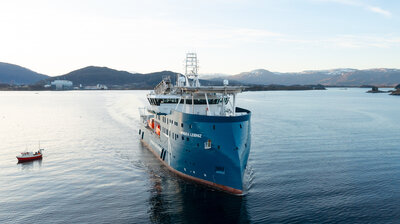
The technicians are not sailors, but they are experienced, they have been on board other vessels and can compare. They highlight the comfort, the cabins with the big windows and the way the vessel behaves in harsh weather conditions. They love it,
states Matthias.
Undisturbed rest is undoubtedly also of high importance to passengers on cruise vessels.
Wide variety of wildlife viewing
Passengers on cruise vessels have additional reasons for being on board a ship, they are paying guests and want to have the optimal experience.
In 2022, the cruise passenger Ming Tappin returned from an Antarctica journey on the 'National Geographic Endurance' and she states:
I chose Endurance specifically for her X-BOW design and the comfort level, and she performed perfectly. It was truly a pleasure to sail on this beautiful ship.
Lindblad Expeditions currently has two X-BOW vessels, the 'Endurance' and the 'Resolution'.
The bow area of a cruise vessel is often a gathering place in the early morning. This is where you can stand to look at whales, penguins and dolphins,
explains Sven Lindblad.
Lindblad elaborates further:
Being on a ship with a traditional bow you will have to lean over the side of the ship and look backwards and down to the waterline. On this vessel, you’ll be able to look straight down into the water. And this is quite a magnificent way of viewing wildlife in the sea! The ship also has plenty of places in the forward part where the passengers can look right down to the waterline in front and observe the ship plough through the water. If there are dolphins there you will see them riding the bow wave of the ship.
Australia-based Aurora Expeditions operates two cruise vessels with the X-BOW feature. Former CEO of Aurora Expeditions, Monique Ponfoort, states:
Our guests have amazing, unmatched water views in the most remote wilderness areas, that’s quite incredible.
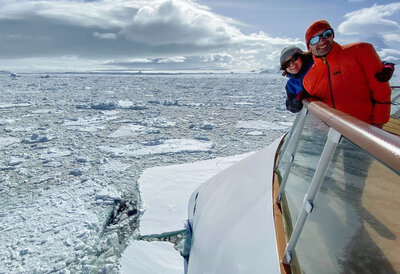
Reduced fuel and emissions
Noteworthy is the positive side effect of less hull resistance, leading to significant fuel reductions. This is a benefit to the owner, and the natural environment, considering the reductions in CO2, NOx, SOx and PM emissions.
The first master of the Bourbon Orca put it this way:
Due to a favourable combination of diesel-electric propulsion, azimuths and the X-BOW®, the Bourbon Orca has a proven record of up to 50% less fuel consumption in typical anchor handling operations compared to conventional anchor handling vessels.
Another statement from the captain of National Geographic Endurance, Leif Skog, confirms a similar experience:
We have now experienced that the fuel consumption of the ‘Endurance’ is even below the estimates, which translates to this being a very environmentally friendly vessel.
According to Albatros Expeditions, the expedition cruise vessel, Ocean Victory, will consume up to 60% lower energy consumption than the sailing fleet, thus, the industry's lowest greenhouse gas (GHG) emissions per passenger. The vessel's unique features create the environmental performance: Tier III compliant engines that limit the emission of nitrous oxides, the fuel is marine gas oil, which emits less CO2 per ton burned compared to heavier bunker fuel, and the X-BOW design.
Read the whole story: Announces record-low cruise ship emissions
Easy on the ice
Lindblad Expeditions’ ‘ National Geographic Endurance ’ and ‘ National Geographic Resolution ’ were the first passenger vessels to meet the Polar Class (5) ice strengthening regulation. Combined with the X-BOW design, this has led to very high shipowner satisfaction.
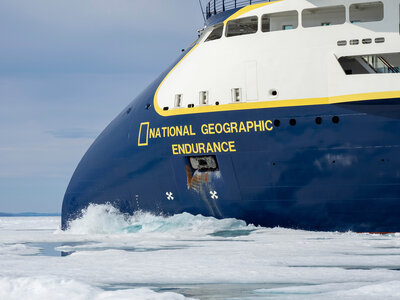
The 'Endurance' commenced her first Antarctica cruises in late 2021, and Leif Skog has now captained several Antarctica trips. His expectations before delivery were sky-high.
The hull is outstanding. I am extremely satisfied with the hull performance in icy waters, it is actually better than I expected. The hull is very strong and suitable for the task. It is folding the ice down and is extremely silent when doing so, which I have not experienced with any hull before,
says Leif Skog, Captain of the National Geographic Endurance.
Redefining maritime efficiency
Experience transformative maritime efficiency with Ulstein's designs. We're setting new benchmarks in sustainable seafaring excellence by bridging fuel optimisation with heightened comfort and safety.
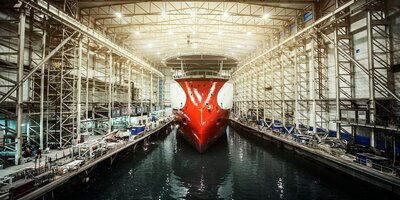
The ULSTEIN X-BOW®, the inverted bow concept, redefined marine engineering. The bow concept was launched in 2005, together with the first shipbuilding contract, and gained immediate interest from shipowners. The X-BOW hull line design has been tried in most weather conditions.
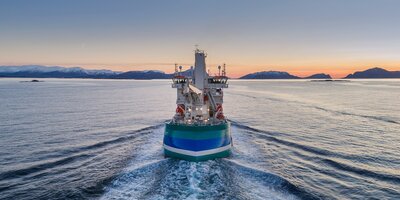
The X-STERN introduces the documented X-BOW® effect to the aft ship, harnessing the benefits of improved safety for crew and equipment, increased flexibility in operations and reduced fuel consumption.
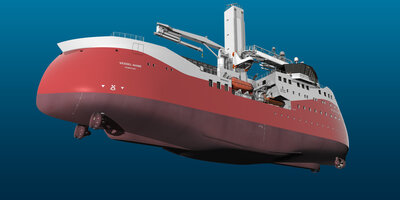
TWIN X-STERN®
The TWIN X-STERN® is the latest addition to the innovative designs of X-BOW® and X-STERN® that enhance fuel efficiency and operability. Its unique features distinguish it from others, and its exceptional quality lies beneath the waterline.
Ulstein Group ASA
[email protected]
+47 7000 8000
SHIP PROFILE
Video: can the x-bow hull end seasickness on cruise ships, norwegian shipbuilding company ulstein recently unveiled its x-bow hull design to make navigation through rough waters smoother for passengers and cut emissions. varsha saraogi looks at how the technology works..
ailing to Antarctica entails a slew of challenges. In particular, unstable waves are common when cruising through the infamous Drake Passage – the massive body of water situated between the southernmost tip of South America and Antarctica’s Shetland Islands. As a result, nautical engineering companies have been developing technologies and vessel designs to make travel smoother and minimise ‘mal de mer’, or seasickness.
The X-BOW hull design - also dubbed the “inverted bow concept” by creators Ulstein – was trialled in Aurora Expedition’s Greg Mortimer, which was the first passenger cruise ship to use the technology in October 2019 for an expedition to Antarctica.
HOW DOES THE X-BOW DESIGN WORK?
Viking Cruises hotel general manager Joachim Scherz.
Video: Ulstein
Image courtesy of msc cruises.
Greg Mortimer’s captain Ulf-Peter Lindstrøm said that sailing in a ship with the X-BOW design was a different experience. “You don’t feel the sea,” he said in a testimonial on Ulstein’s website. “In big seas, I kept waiting for the slamming, but it never came. Other ships can only keep half the speed.”
After the successful 12-day voyage, in January 2020 Aurora Expeditions announced that it will deploy a second X-BOW ship - Sylvia Earle - in October 2021.
However, this wasn’t the first time the X-BOW design has been used in ships. Initially purposed for the commercial market in the offshore oil and gas industry, the X-BOW ship design was launched in 2005. It was later introduced on vessels in other segments such as the offshore renewables industry and has already been used in more than 100 ships since its launch.
X-BOW: BOOSTING SAFETY, STABILITY AND SUSTAINABILITY
The design is built in a way that it allows for more gentle sea crossings, faster transit speeds, as well as lower fuel consumption and air emissions.
The technology is conducive to being environmental-friendly and saves energy “because it uses less fuel to get through the waves,” the company said.
The key advantage of the X-BOW is that it helps pierce through waves and disperses the force to the sides of the boat as opposed to rising on the waves and slamming it down, therefore reducing the rocking motion.
Image: Ulstein/Franz Wusits
As explained by Ulstein in a statement, the aim of the X-BOW is to enable ships to be more stable during poor weather conditions, as well as allow them to maintain speed in head seas and protect fore-deck areas from green sea and spray. The ship design is also said to cuts costs on equipment maintenance as it reduces wear and tear.
Since its launch, the X-BOW design has been trialled in extremely harsh conditions. For instance, the Polarcus Alima sailed through the Arctic waters north of Russia and the Esvagt Aurora navigated through the Arctic waters of Barents Sea, with both enduring rough seas during their voyages.
Looking ahead, the company’s marketing director Trond Myklebust claimed that the X-BOW design will set a “completely new standard for offshore vessels of the future".
Cover image credit: Uniworld
SHARE THIS ARTICLE
- Ask a Cruise Question
Why Do Many New Vessels Have An Inverted Bow?
By Bollinge , March 16, 2017 in Ask a Cruise Question
Recommended Posts

I have noticed that many new ships have an inverted bow, such as USS Zumwalt, Hurtigruten's Roald Amundsen and the new NCL vessel pictured below.
They are reminiscent of WW1 battleships' bows. Why this sea change? (Sorry for the pun...)

Sent from my iPad using Forums
Link to comment
Share on other sites.

Maximizes the length of the waterline and therefore the maximum speed of the ship. Perhaps it makes it easier (possible) to use new locks in Panama Canal. That one, I don't know.

Actually, it has nothing to do with the maximum speed of the ship, it deals with the "hull speed" or the most efficient speed the ship can travel at. As a classic example, the SS United States required 240,000 hp to push her to her maximum speed, while a great deal less power would be required to move her at her hull's "natural" speed. And maximizing the waterline length increases the design hull speed. The reverse bow, however, has less reserve buoyancy than a normal bow, meaning that the ship will not pitch in oncoming seas, but will tend to pierce through them. The flare of the traditional bow (wider at the top), means that as the bow enters a sea, more volume (buoyancy) is under water than before, so there is more force to bring the bow up out of the sea. The reverse bow does not do this, so ships with this bow will not pitch as much, but will be considerably "wetter" forward, taking seas over the bow more often.
It has nothing to do with the new Canal locks, since the new locks use tugs on hawsers fore and aft, not mules on the walls like the old docks, so the longer waterline of the reverse bow creates less space for the tug in the lock.
Please sign in to comment
You will be able to leave a comment after signing in
- Welcome to Cruise Critic
- Hurricane Zone 2024
- Cruise Insurance Q&A w/ Steve Dasseos of Tripinsurancestore.com Summer 2024
- New Cruisers
- Cruise Lines “A – O”
- Cruise Lines “P – Z”
- River Cruising
- Cruise Critic News & Features
- Digital Photography & Cruise Technology
- Special Interest Cruising
- Cruise Discussion Topics
- UK Cruising
- Australia & New Zealand Cruisers
- Canadian Cruisers
- North American Homeports
- Ports of Call
- Cruise Conversations
Announcements
- New to Cruise Critic? Join our Community!
- How To: Follow Topics & Forums (Get Notifications)
Write An Amazing Review !

Click this photo by member XFrancophileX to share your review w/ photos too!
Parliament, Budapest
Features & News

LauraS · Started Wednesday at 08:19 PM
LauraS · Started Wednesday at 04:07 PM
LauraS · Started Tuesday at 05:50 AM
LauraS · Started Monday at 08:40 PM
LauraS · Started August 21

Cruise Planning
Find a cruise, popular ports, member reviews.
© 1995— 2024 , The Independent Traveler, Inc.
- Existing user? Sign in OR Create an Account
- Find Your Roll Call
- Meet & Mingle
- Community Help Center
- All Activity
- Member Photo Albums
- Meet & Mingle Photos
- Favorite Cruise Memories
- Cruise Food Photos
- Cruise Ship Photos
- Ports of Call Photos
- Towel Animal Photos
- Amazing, Funny & Totally Awesome Cruise Photos
- Write a Review
- Live Cruise Reports
- Member Cruise Reviews
- Create New...
- Work & Careers
- Life & Arts

- Subscriptions
Grab a Seat at the Captain’s Table
Essential news coupled with the finest maritime content sourced from across the globe.
Join our crew and become one of the 108,398 members that receive our newsletter.

Five Most Notable X-BOW Vessels
Share this article.
There is no denying that ULSTEIN’s X-BOW® hull design made a splash in the maritime and offshore world when it was introduced with the launching M/V Bourbon Orca in 2005. Since then, over 60 vessels have been built with the patented inverted bow design that is said to improve handling in rough seas and lower fuel consumption.
In fact, Ulstein’s X-BOW® hull design has made such an impact that it has been chosen as one of the eight best Norwegian innovations since 1980 by the Norwegian newspaper, Aftenposten .
With that in mind, here is a look at the top five vessels featuring the patented X-BOW® hull and if you’re impressed, vote for the X-BOW HERE .
Top Five Most Notable X-BOW Vessels
1. Bourbon Orca, Type AX104
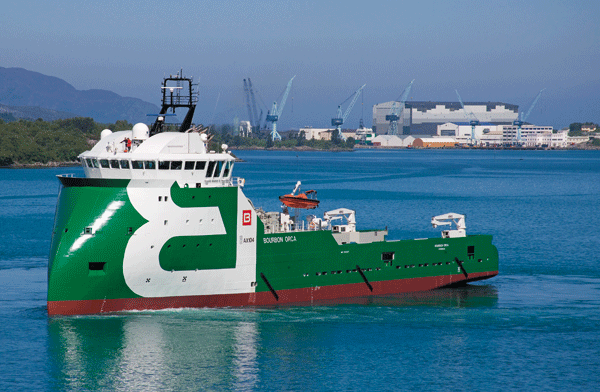
The first vessel to feature the X-BOW hull, the Bourbon Orca is an AHTS that was delivered to Bourbon Offshore Norway in 2006 and received a number of awards, including the Engineering Feat of the Year award from the Norwegian Design Council, and Offshore Support Journal’s and Skipsrevyen’s (otherwise known as SMM) prestigious “Ship of the Year” Awards.
In January 2007, the Bourbon Orca went out from the coast of Norway together with the supply boats Skandi Caledonia and Havila Faith. In head-to-head competition, here is what happened:
2. Bourbon Mistral, Type PX105
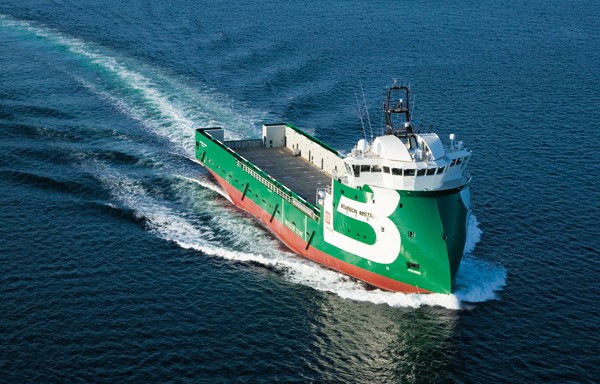
In January 2007, the Bourbon Mistral was delivered to Bourbon Offshore Norway and was the first platform supply vessel to feature the X-BOW.
3. Viking Poseidon, Type SX121
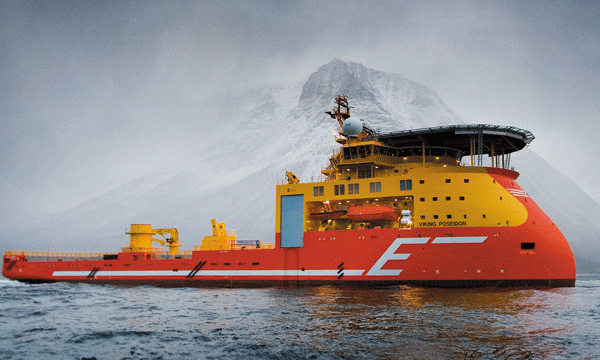
The Viking Poseidon is an Offshore Construction Vessel delivered to Eidesvik Offshore in 2008. The vessel, at 130 meters long by 25 meters wide, was the largest vessel to feature a X-BOW.
A year later, the M/V Island Constructor, also a type SX121, was nominated for the SMM “Ship of the Year” award.
4. Oceanic Vega, Type SX120

Delivered in 2010 to a joint venture between Eidesvik Offshore and the geophysical company, CGGVeritas, the Oceanic Vega was the first of two type SX120 seismic research vessels ordered by the JV. Along with an ice-classed X-BOW hull, the vessel features a towing force of 140 tons during seismic operations and is ideally suited to acquisition of large 3D, 4D or high-resolution projects, utilizing a current streamer configuration of up 16 streamers separated by 100 meters or more. The vessel´s 20 streamer winches are each capable of spooling 9 kilometers of streamers.
In 2010, the M/V Oceanic Vega was nominated for SMM’s “Ship of the Year” award.
5. Seven Viking, Type SX148
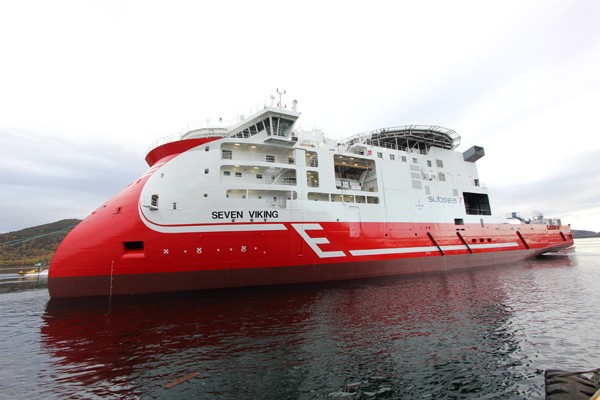
The Seven Viking is a subsea inspection, maintenance and repair (IMR) vessel co-owned by Eidesvik Offshore and Subsea 7. Right now the vessel is perhaps more speculation than all the others, as it was just launched on October 17th, but it is added to the list for good reason.
The compact vessel, measuring 106.5 meters long by 24.5 meters wide vessel, will carry out a multitude of diverse tasks for Statoil, including inspection, maintenance and repair of subsea oil installations, alongside scale treatment and RFO operations. The ship has a crew capacity of 90, a top speed of 16 knots, and has the capacity to carry a number essential subsea tools thanks to a clever hull configuration. The Seven Viking has been developed to meet the highest working environmental standards; meeting comfort class COMF-V (3) for low noise and vibration levels and carries the Clean Design notation. The vessel also features diesel electric propulsion and electrical winches.
If you’re impressed, then don’t forget to VOTE !
Unlock exclusive insights today.
Join the gCaptain Club for curated content, insider opinions, and vibrant community discussions.
Be the First to Know

Join the 108,398 members that receive our newsletter.
Have a news tip? Let us know.
Stay Ahead with Our Weekly ‘Dispatch’ Email
Dive into a sea of curated content with our weekly ‘Dispatch’ email. Your personal maritime briefing awaits!
Related Articles
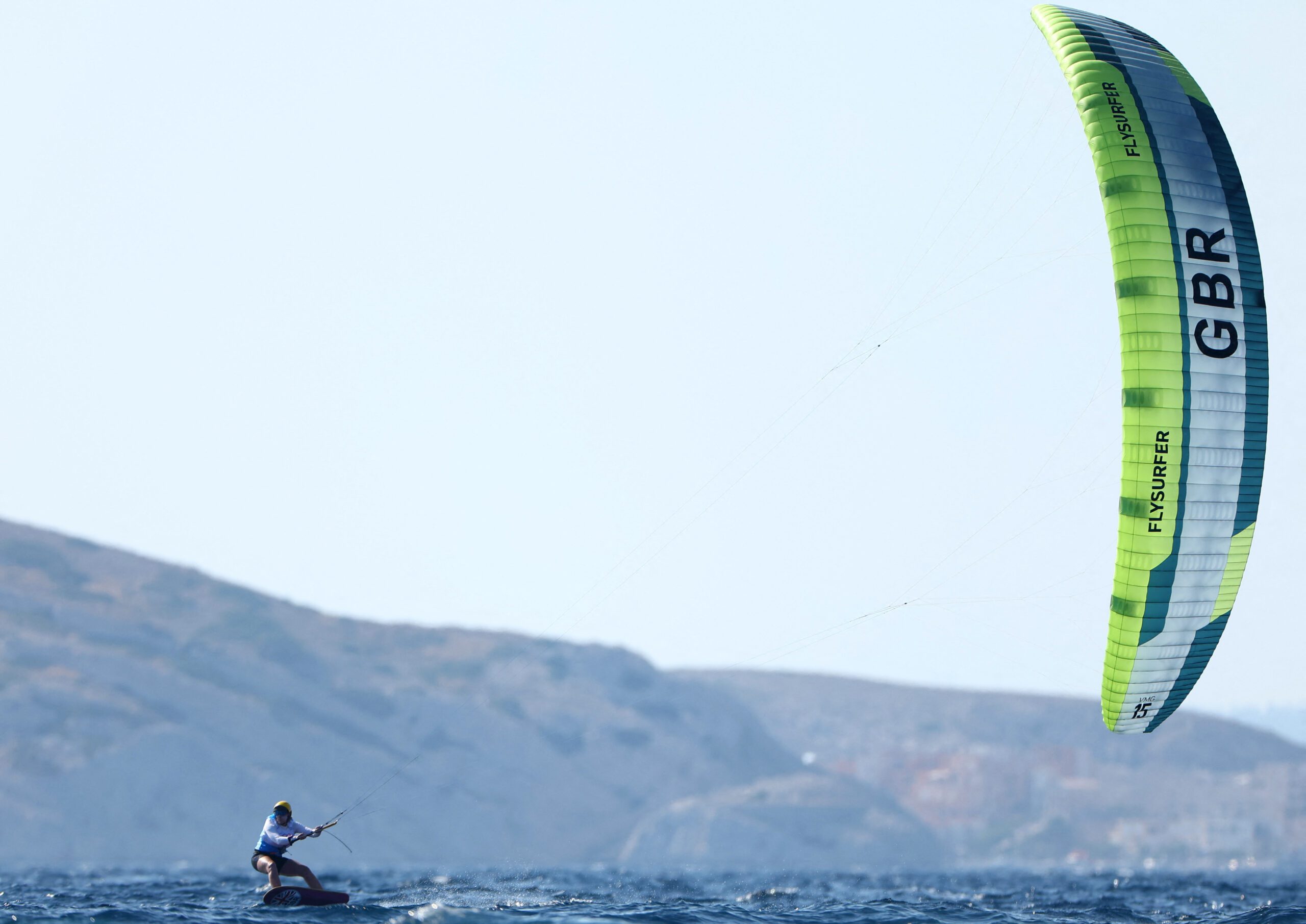
Olympics-Sailing-Drones Deliver Bird’s Eye View For Kite Jury
By Alexander Smith MARSEILLE, France, Aug 9 (Reuters) – In a darkened room below the ship-like “bridge” where race officials look out at the Mediterranean overseeing the Olympic sailing, a team of...
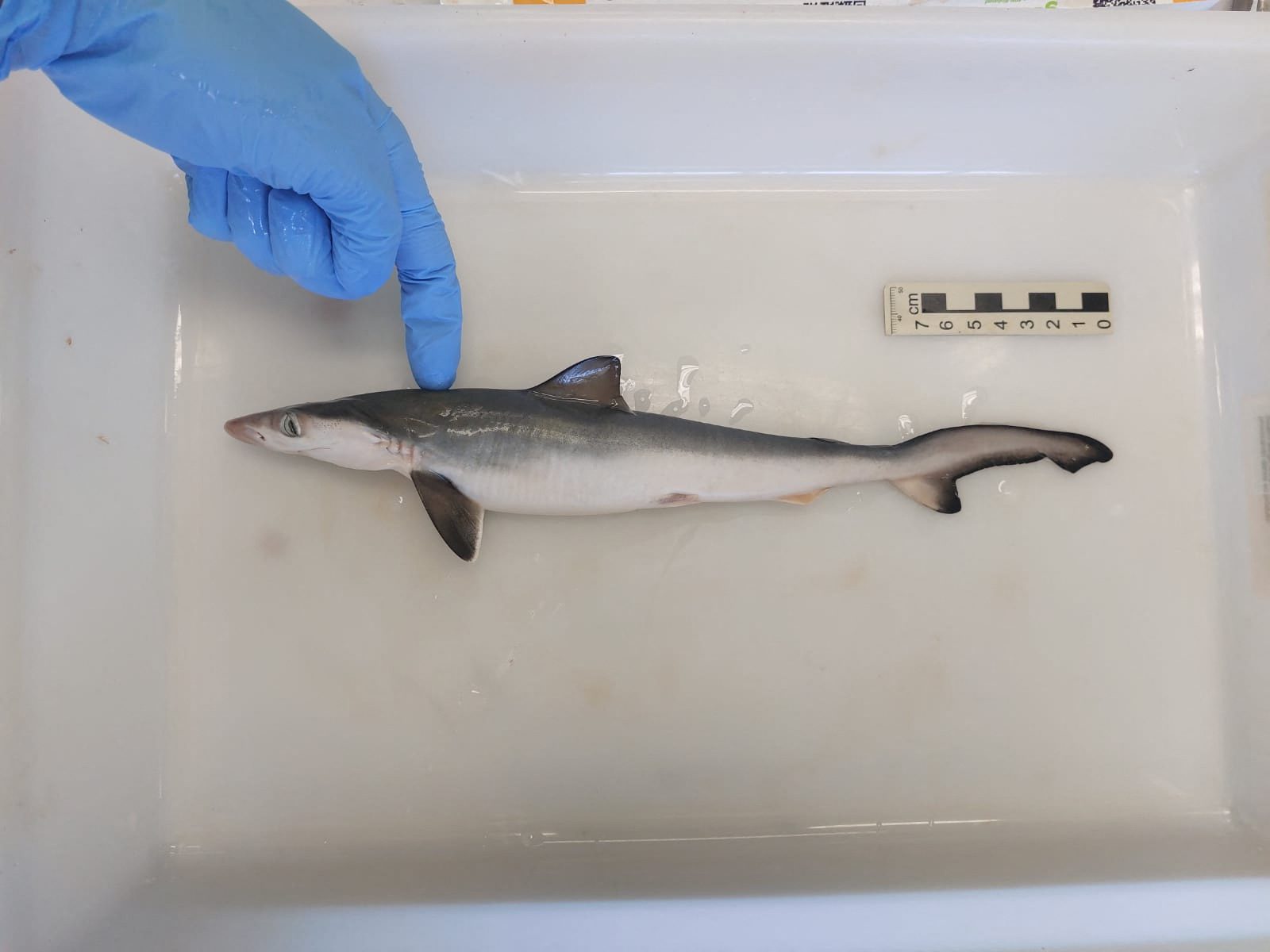
Sharks Off Rio de Janeiro Test Positive For Cocaine
By Dani Morera Trettin SAO PAULO, July 24 (Reuters) – Sharks off the coast of Brazil’s party city Rio de Janeiro have tested positive for cocaine. The predators were consuming the potent...

Olympic Surfers Score With ‘Awesome’ Floating Athlete’s Village
TEAHUPO’O, Tahiti, July 25 (Reuters) – Olympic surfers based in Tahiti will miss out on the spectacle of the Games’ opening ceremony on Friday, but might have trumped their Paris-based peers with...

Why Join the gCaptain Club?
Access exclusive insights, engage in vibrant discussions, and gain perspectives from our CEO.

OUT AT SEA?
We’ve got you covered with trusted maritime and offshore news from wherever you are.
JOIN OUR CREW
Maritime and offshore news trusted by our 108,398 members delivered daily straight to your inbox.
Your Gateway to the Maritime World!
Gcaptain’s full coverage of the maritime shipping industry, including containerships, tankers, dry bulk, lng, breakbulk and more..
Privacy Overview

Royal Navy Ship HMS Trent Seizes Cocaine Worth £40 Million In The Caribbean Sea

Seafarers Hospital Society Launches Pilot Project To Support Women At Sea


Hydrocell Launches The First Hydrogen-Powered Boat

Indian Port Workers Call Off Strike After Agreeing To New Wage Settlement

Types of Bow Designs Used For Ships
Think of the most beautiful ship you might have ever seen, imagined, or let’s say the one which happened to capture your imagination the most.
It goes to say without mention that one feature of ships which never ceases to fascinate is – The Bow.
The foremost part of the ship is part aesthetics and part science. Your ship travels in a medium that provides considerable drag as compared to air.
Now, this requires the design to be such that the components of ship resistance are kept less. Especially, in the case of ships with fuller forms, components of Wave Breaking Resistance become significant, while ships with a slender and a more curved form have less Wave Making Resistance.
Fortunately, these can be controlled by how the water and waves interact with the ship at entry at the fore-end. The ship bow is where the fore part of the ship first comes in contact with the water as far as your design waterline is considered.
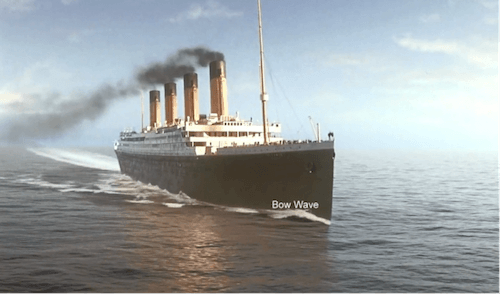
Looking at the different Ship Bow Designs in existence today, it seems that most of the shapes possible and a combination of two or more of them have been tried out.
However, newer designs have emerged and older lesser-used designs have often been tried out with certain changes after extensive analysis.
Still, broadly speaking, some of the bow design types are:
- The Bulbous Bow
- A Normal Bow without a Bulb
- Other Special Bows
The Plumb, the Clipper and the Spoon
A normal bow, as what we would call it, has developed from its predecessor which was a vertical bow. The angle at which the ship stem makes with the waterline is called the rake .
A vertical, or unraked bow having a straight edge is known as a plumb bow . These bows have maximum waterline besides an X-Bow or an Inverted Bow. This length of the waterline allows for a greater hull speed .
Bow rakes are used in conjunction with flares (Remember I mentioned imagining your ship? I guess you won’t forget the outward stretching hull form at the top, this is what we call flaring ).
Flaring has its own benefits like keeping water off the decks and also eases the pitching motions. Some raking also sets up what is called ‘ Crumple Zones ’ allowing safety against collisions before the submerged portion comes in contact with it.
Stability-wise, it raises the Centre of Buoyancy, which in turn increases the GM – one of the pillars of ship stability. Traditionally these have been called the Clippers.
As the name suggests, a Spoon Bow resembles a spoon by giving a concave appearance at the stem and deck line.
These forms often have chining and curvature at the waterline creating their characteristic wake pattern, bringing Wave Making Resistance into the picture.
Bulbous Bow
A very familiar unit in bow sections of almost all seagoing cargo ships and vessels with fuller forms is – The Bulbous Bow .
This staple of ship designs today was said to have been discovered rather than being invented. Military towing tests in the USA showed that for a boat model having a torpedo discharge pipe extending forward also lowered the resistance. The first civil ships were seen in the 1930s.
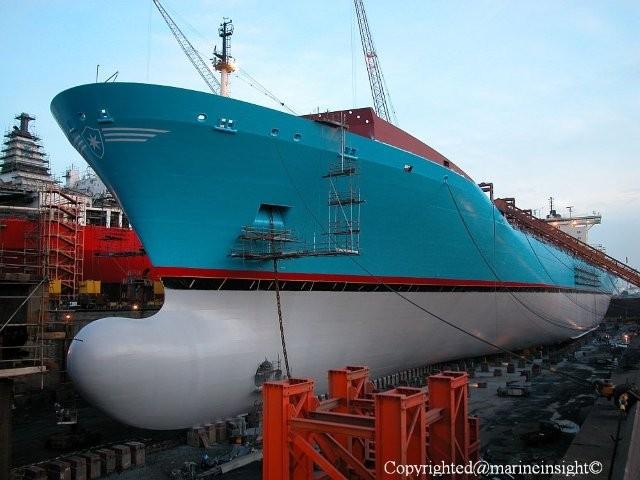
Bulbous Bows are studied using their own form characteristics and these might spring up in your ship resistance and powering calculations so you might want to consider some of them like the shape of the section, area ratios , length of the projection and the like.
The Bulbous Bow can reduce slamming on your ship and have the same effect as a normal bow in a ballasted condition if a sharply tapering bulb section is used.
Depending upon your ship form as mentioned above, the Bulb axis is also important as it affects your wave influence at entry, and if you keep your axis such that it slopes downwards stern, it will allow better flow characteristics.
Ships with fuller forms have high wave breaking resistance, and this element that eats away your propulsive efficiency can be greatly reduced by using a Bulbous Bow with a sharply downward tapering water-plane.
These Bows also allow better recovery of energy by the propeller as energy losses due to vortices at the fore-end is minimised.
Parabolic and Cylindrical Bows
Sometimes designers consider designing vessels with ‘blunt’ stems as opposed to the sharp nature of the bow section. Here is the Parabolic Bow, which resembles the mathematical curve, the Parabola.
Now, recall some high school math, the semi-minor axis of the ellipse is what would be the beam of the ship.
Sometimes only designing a parabolic shape for a ship hull is not enough, you have to see the flow around the hull and for this, give it a typical rounded form like a normal round bilged hull.
Parabolic Bows may be combined with Bulbs to take the Wave Breaking Resistance into account as these are popular in fuller form designs and are being used in Bulk Carriers today.
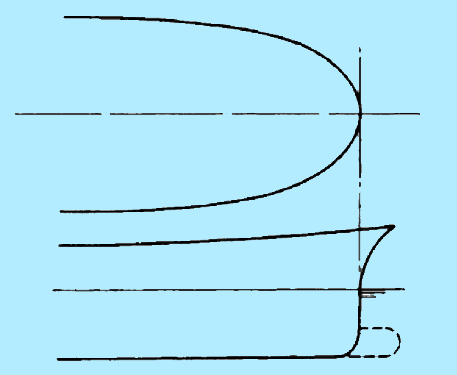
The closest cousin to these is the cylindrical ship bows which are also designed for fuller forms at design waterlines and are ideal for use in fully loaded conditions.
The Cylindrical Bows can have minimal Wave Making Resistance if designed with proper attention to the bluntness of form and stem edge at different drafts.
The Axe Bow
While an axe does its job, cutting wood, or maybe something as obvious, the ship bow bearing resemblance to it has its own characteristic features.
This design usually has a vertical stem line coupled with a long, deep and narrow fore portion of the hull, somewhat like an axe.
This shape allows it to cut through the water, allowing it to pass easily through waves with less pitching as opposed to a normal bow.
The lower portion of the fore-end of the hull, called the forefoot rarely emerges out of the water and hence the vessel is less susceptible to slamming also.
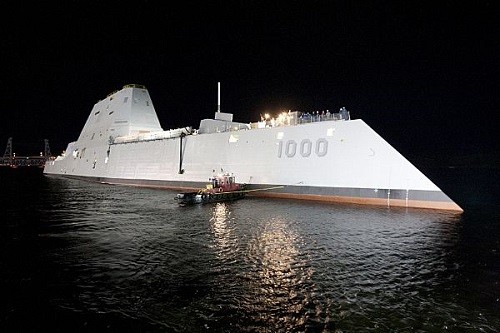
On the other side, certain manoeuvring aspects need to be taken to account, a vessel with an Axe Bow requires more rudder motion as is confirmed by the study of its hydrodynamic parameters.
X-Bow: The Generation of Inverted Bows
How about a design where your ship’s bow and almost a greater part of the hull appears upside down in comparison to a normal round bilge hull or any of the hull shapes you generally see on ships? The inverted bow is a success story among the revival of technologies that became obsolete in a different era.
These hull forms have the advantage of allowing maximum length waterline for ships of comparable sizes which means the highest possible hull speeds .
Like the Axe Bow, these bows have less spray of water at entry and also have less pitching motions and slamming reduction is quite significant. This creates quite a comfortable experience for the crew.
The fuel consumption is also reduced by a significant factor and this bow can operate quite efficiently in medium-sized wave ranges mainly because of the larger part of the ship volume being above and upfront, directly impacted upon by the waves.
These hull forms also double up as decks with accommodation space for the personnel. However, the applicability of these designs for the same level of improvement in speed losses in the roughest of seas must be an area of ongoing work.
Keeping that aside, these vessels have been applied to various applications like the AHTS (Anchor Handling Tug Supply) vessels, Seismic Vessels, Offshore and Pipelay Vessels, drillships and the likes.
These are the most commonly used ship Bow Designs today. Most probably, any vessel you see out there will have any one of the designs you just read about.
Do you know some more salient features of the different Bow Designs in practice today?
Let us know more in the comments below.
Article In Pictures

Disclaimer : The information contained in this website is for general information purposes only. While we endeavour to keep the information up to date and correct, we make no representations or warranties of any kind, express or implied, about the completeness, accuracy, reliability, suitability or availability with respect to the website or the information, products, services, or related graphics contained on the website for any purpose. Any reliance you place on such information is therefore strictly at your own risk.
In no event will we be liable for any loss or damage including without limitation, indirect or consequential loss or damage, or any loss or damage whatsoever arising from loss of data or profits arising out of, or in connection with, the use of this website.

Do you have info to share with us ? Suggest a correction

About Author
Sudripto is pursuing Naval Architecture and Ocean Engineering at IMU, Visakhapatnam, India. He is an aspiring future Naval Architect with an eye for aesthetics and detail and likes to spend his free time writing maritime blogs and reading about maritime innovations which continue to intrigue him. He is also a Senior Editor at Learn Ship Design- A Student Initiative.
Read More Articles By This Author >
Daily Maritime News, Straight To Your Inbox
Sign Up To Get Daily Newsletters
Join over 60k+ people who read our daily newsletters
By subscribing, you agree to our Privacy Policy and may receive occasional deal communications; you can unsubscribe anytime.

BE THE FIRST TO COMMENT
I like the X-BOW, it gives the Bridge Crew better Forward Visibility. Not having to Second-Guess what’s sitting 600 to 900-feet in front of you. It looks Strange, but I can live with Strange…
what is the name for the hood or cover over the foredeck area used to shed water. Not talking about a breakwater, but a large metal roof.
How about Vard’s bows? They are pretty cool i think
“However the applicability of these designs for the same level of improvement in speed losses in the roughest of seas must be an area of ongoing work” -nope it NOT true! -all X-bow’s have higher speed in higher wakes since they do not Pitch very much! -the famous YOUTUBE clip shows Bourbon Orca sails form two conventional designed PV’s!( https://www.youtube.com/watch?v=-YrSi5Pf_l8 ). -So to lower speed and they need more ongoing work at ULSTEIN… -Its pretty perfect design… It breaks the wakes behind the bow and its a stronger structure hull design -can take much higher shear loads! -they have life span expectation of 40 years in the North Sea alone! -and inspirations came from the Oseberg Viking ship and Viking Naval architects likely got their inspirations from watching Sea Birds -like Ducks or Swans -they ride waves pretty good!!
And first REALLY clear designed with a”Torpedo bulbous Bow” was the Japanese Imperial Navy “Yamato class” -and its first of all about reducing the aft wake or drag! -then comes the other benefits, but the first for purpose designed”wake reduction bow” where design just before WW1! by Italians Navy Architects. -But can be seen on European War ship earlier but what is for ramming!
Was the X-BOW design the result of testing models in enclosed water filled test basins ? Is there mathematical hydrodynamics that wouוld predict such energy saving results ?
what should be he bow angle in a canoe made of concrete ?
Please be aware I’m no expert naval architect. Question: How do all of the bow designs handle in a following and beam on sea? By commenting how ell they perform with a head on sea is all good news, but, you do have to turn around and head back. It’s not all about a head sea.
Hey Andy the thing is called a helipad You peanut… what a forehead slapping moment when I read your question. Deeeerrrrrppppp
I should truly be interested in the performance of a dual-hull, smaller faced, longer-keeled ship, with a large, multidecked center structure, similar to the Swath concept. I truly anticipate amazing speed and efficiency for the tonnage.
Leave a Reply
Your email address will not be published. Required fields are marked *
Subscribe to Marine Insight Daily Newsletter
" * " indicates required fields
Marine Engineering
Marine Engine Air Compressor Marine Boiler Oily Water Separator Marine Electrical Ship Generator Ship Stabilizer
Nautical Science
Mooring Bridge Watchkeeping Ship Manoeuvring Nautical Charts Anchoring Nautical Equipment Shipboard Guidelines
Explore
Free Maritime eBooks Premium Maritime eBooks Marine Safety Financial Planning Marine Careers Maritime Law Ship Dry Dock
Shipping News Maritime Reports Videos Maritime Piracy Offshore Safety Of Life At Sea (SOLAS) MARPOL

- DREDGE/CIVILS
- AUSMARINE (OCEANIA)
- MIDDLE EAST/NORTH AFRICA
- LATIN AMERICA
VESSEL REVIEW | National Geographic Resolution – Lindblad Expeditions welcomes second polar ship in series

US-based cruise operator Lindblad Expeditions took delivery of a new polar cruise ship in September of this year.
Designed and built in Norway to DNV class rules, the Bahamas-flagged National Geographic Resolution is the second vessel in a series to be built by the same shipyard for Lindblad. The first vessel, National Geographic Endurance , was delivered in March 2020.
National Geographic Resolution was so named to honour Resolution , one of the ships captained by the famed English explorer Captain James Cook. The 406- by 68-foot (124- by 21-metre), 126-guest newbuild can access deep into polar regions thanks to its PC5 ice class notation. Expanded fuel and water tanks provide for extended operations in remote areas while the zero-speed stabilisers contribute to increased comfort at zero speed when stopped for wildlife observation or embarking/disembarking the ship.

The vessel is equipped with emission reductions technology that meets US EPA Tier IV/IMO Tier III standards. A prominent inverted bow provides improved fuel efficiency and ensures a smoother ride with softer motions in head seas.
The inverted bow serves another key function. On a ship with a traditional bow, the guests will have to lean over the side of the ship and look backwards down towards the waterline. On National Geographic Resolution , they will be able to look straight down into the water. The ship also has numerous other areas in the forward portion where passengers can look right down to the waterline in front and observe the ship as it ploughs through the water.

The ship was designed to connect guests to the outside environment from anywhere onboard. The cabin measurements range from 13-square-metre solo cabins to 40-square-metre suites. Around 77 per cent of the 69 outside-facing cabins feature balconies with floor-to-ceiling sliding doors for unobstructed views of the outside.
The ship's main restaurant boasts panoramic views with floor-to-ceiling windows. There is also an outdoor barbeque and bistro area. A spa area features a yoga room, treatment rooms, saunas, a fitness room, a relaxation area, as well as infinity hot tubs and glass igloos with seating on daybeds. The yoga studio aft on deck eight has large windows to provide passengers with views of the surrounding natural environment.

The ship carries its own remotely operated vehicle (ROV), which is equipped with a video camera and is capable of reaching 305 metres below the water. There are 14 expedition craft for landing in otherwise inaccessible places. Other expeditionary gear and equipment include kayaks, paddle boards, snorkeling gear, wet suits, and cross-country skis.
National Geographic Resolution set off for its inaugural polar voyage in mid-November, exploring Antarctica, South Georgia, and the Falklands.

Click here for the other news, features and reviews comprising this month's Passenger Vessel Week.
Related Stories

Bow of a Ship: Essential Parts and Functions Explained
The bow of a ship refers to the forward part of the hull, which is the part that usually leads the way as the vessel moves through the water. It plays a crucial role in reducing the resistance of the hull as it cuts through the water while also ensuring that water does not easily wash over the deck. There are different types of bow designs, each with its advantages and features that cater to various ship functions and sizes.
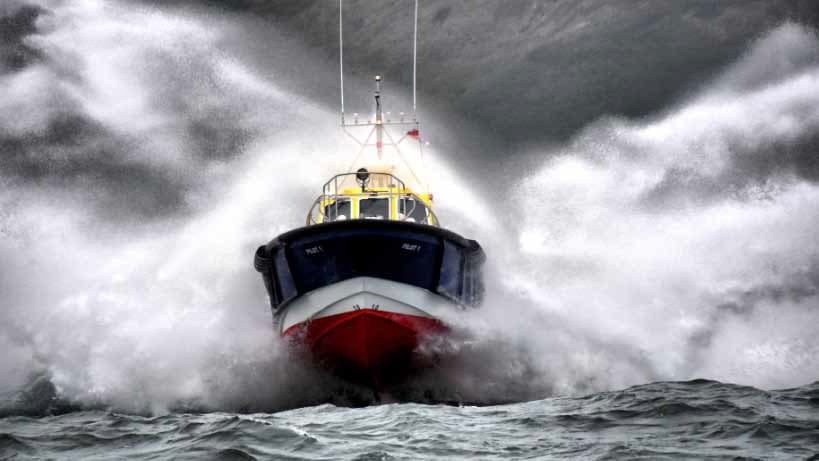
While the design of a ship's bow might seem straightforward, there's actually a lot of science and engineering involved in its formation. The shape of the bow can have a significant impact on the ship's fuel consumption, navigational capabilities, stability, and even the overall performance in different weather conditions. As a result, shipbuilders and naval architects pay close attention to the bow design in order to optimize the vessel's performance and ensure safe and efficient operations at sea.
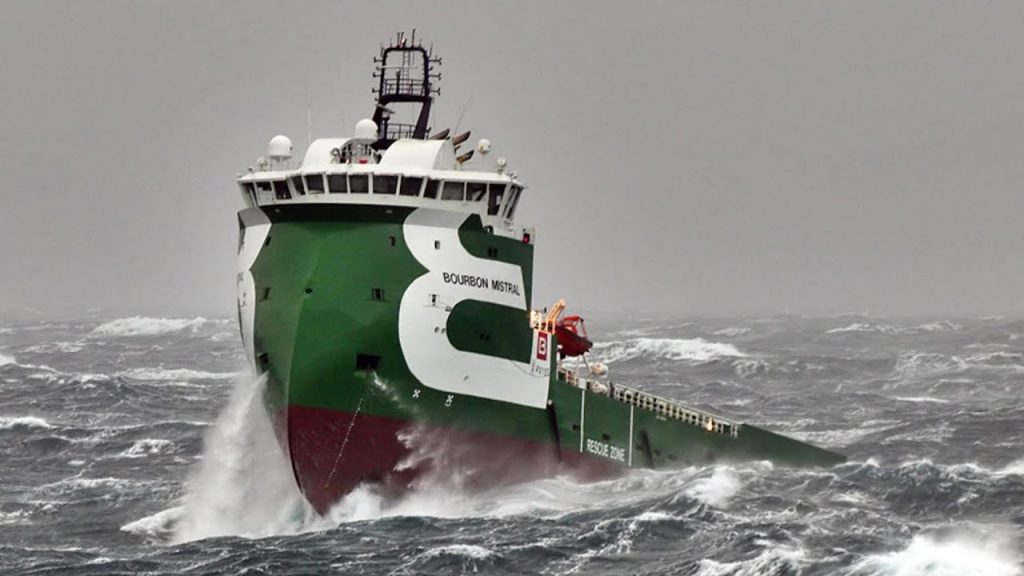
Key Takeaways
- The bow is the forward part of a ship's hull, crucial for reducing water resistance and preventing water from washing over the deck.
- Various bow designs cater to different ship functions, sizes, and navigational requirements.
- The science and engineering behind bow design are essential for optimizing a ship's performance, stability, and fuel efficiency.
Part of a Ship: The Bow
The bow is the forward part of a ship's hull, designed to cut through the water as a vessel moves forward. Being the most forward point of a ship when it is underway, the bow plays a crucial role in reducing resistance and ensuring smooth navigation. In addition, a ship's bow has to maintain sufficient height to prevent water from splashing on top of the vessel easily 1 .
One common feature seen in modern ships is the bulbous bow, a protruding bulb at the bow below the waterline 2 . This unique design alteration significantly enhances the ship's performance by modifying the way water flows around the hull. The benefits of a bulbous bow include reduced drag, increased speed, improved fuel efficiency, and better overall stability.

Apart from the bow's functional aspects, it also serves as an aesthetic feature. Ships often have different bow types, with each design catering to various purposes and operational requirements. Some common types of bows include the flare, clipper, raked, plumb, and inverted bows, among others. Each bow type offers specific advantages, such as increased water displacement or improved hydrodynamic properties.
In conclusion, the bow is an essential part of a ship, playing both an aesthetic and functional role. Being the foremost part of the vessel, it is designed to minimize drag and resistance while maintaining adequate height to keep water from easily washing over the ship. With advancements in ship design, features like the bulbous bow have further improved overall vessel performance, contributing to increased speed, range, and fuel efficiency.
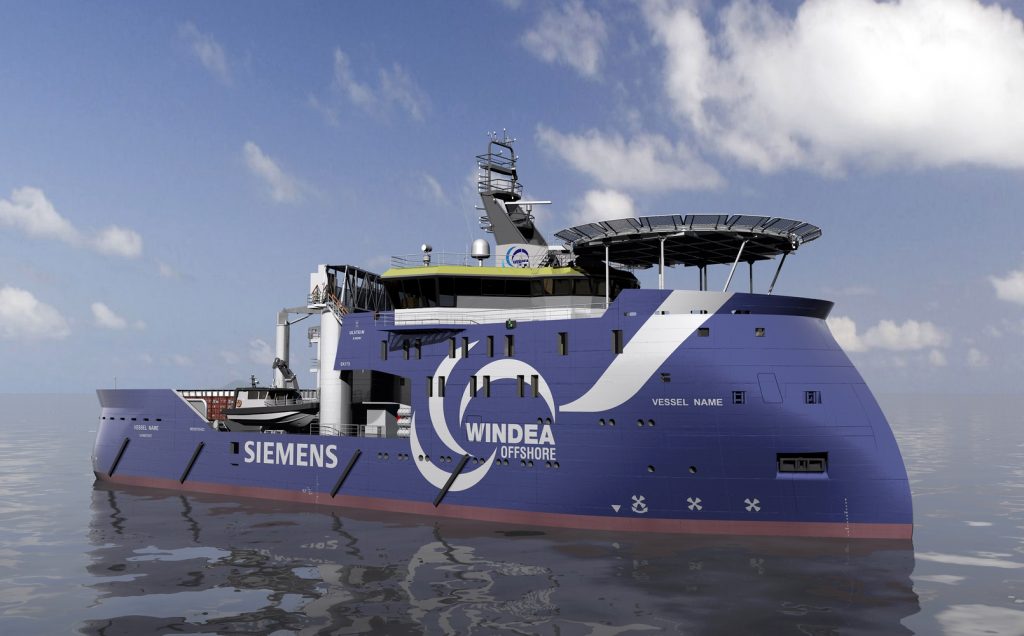
Types of Ship Bows
Ship bows are designed to optimize the vessel's performance for various tasks, keeping in mind factors like speed, stability, and maneuverability. There are several types of bows utilized in modern ship design, each with distinct characteristics.
The bulbous bow is a popular design that features a bulb-like protrusion at the waterline, which helps reduce wave resistance. This innovation improves fuel efficiency and increases the vessel's cruising range, particularly at high speeds and in fully loaded conditions.
Another notable design is the inverted bow , also known as the axe bow . This design is characterized by a backward-slanting stem and is primarily used for high-speed vessels. The shape of the inverted bow reduces water resistance, enhances stability, and provides better control, especially in rough sea conditions.
The raked bow is a classic design featuring a forward-slanting stem, also known as the rake. This design provides increased buoyancy, which is essential for maintaining the ship's stability in rough seas. Raked bows were historically used in sailing ships and are still employed in modern vessels where they serve both functional and aesthetic purposes.
Plumb bows are characterized by a vertical stem, which results in a straight-edged appearance. Plumb bows are mainly used for slow-moving vessels as they offer more cargo space. However, their straight-edge design generates a considerable amount of drag, making them less suitable for high-speed ships.
The spoon bow is a gentle, curving design that smoothly transitions from the stem to the waterline. This elegant shape offers reduced wave resistance and increased stability, making it a popular choice for luxury yachts and passenger ships.
In addition to these, there are several specialized bow designs, such as the parabolic bow and cylindrical bow . These models are tailored for specific purposes, focusing on attributes like stability and fuel efficiency. For example, the parabolic bow is designed to minimize the ship's wave-making resistance, making it highly efficient for higher speeds.
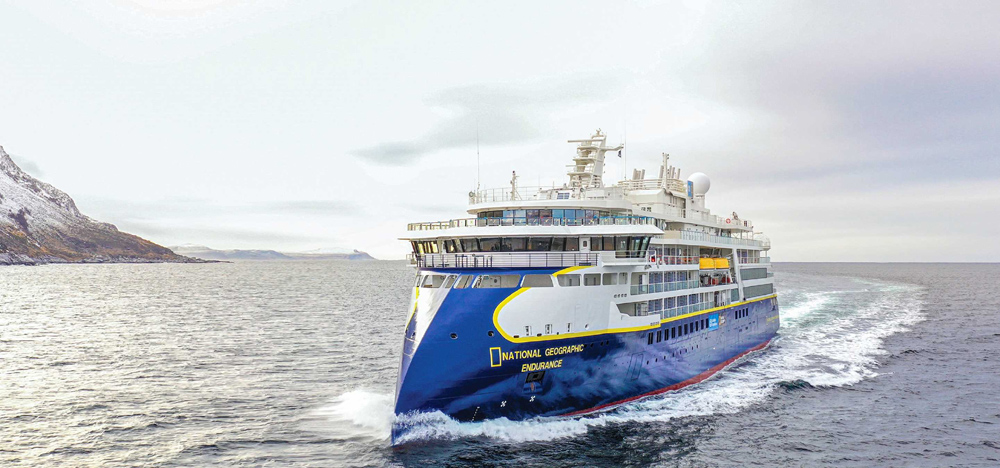
The X-bow is another innovative design that boasts improved fuel efficiency and stability in rough sea conditions. This design is characterized by a steep, sloping stem that extends above the vessel's foredeck, allowing waves to flow smoothly over the bow, minimizing the impact of slamming.
The clipper bow , a historical favorite among sailing ships, is a slender, raked bow with a forward-curving tip. This elegant design prioritizes speed and agility, making it a superb choice for fast sailing vessels.
In conclusion, the diversity of ship bow designs showcases the unique requirements of different types of ships. From the efficiency-focused bulbous bow to the graceful lines of the clipper bow, each design has its merits and challenges, and sailors across the world rely on them to navigate the vast oceans safely.
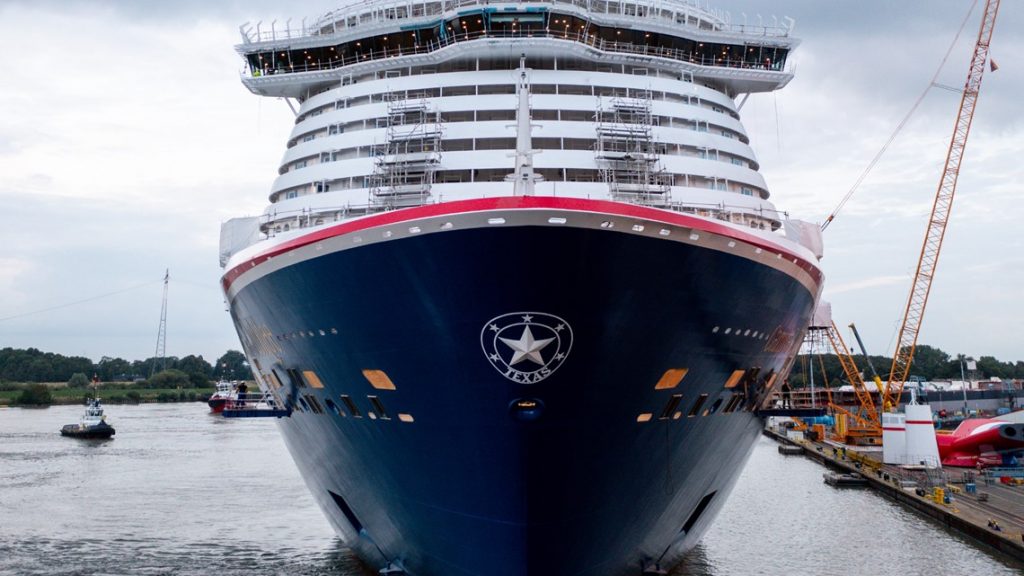
The Science Behind Bow Design
The design of a ship's bow is an essential aspect of maritime engineering, as it directly affects the vessel's performance, efficiency, and safety. Bows are the forward part of a ship's hull, where the stem meets the waterline, and play a significant role in reducing resistance and ensuring buoyancy when the ship is in motion.
One of the primary goals of bow design is to minimize the ship's wave-making resistance. When a ship moves through water, it creates waves at the bow, which increases energy loss and reduces efficiency. An efficient bow design helps to decrease pitching and slamming effects while maintaining a stable freeboard that ensures smooth sailing, even in rough seas.
Bulbous bows consist of a protruding bulb at the bow's stem, designed to enhance the ship's hull speed and reduce wave-making resistance by 12-15% . The bulbous bow works by creating a trough that reduces the wave generated by the bow's edge, leading to less energy lost to the water. These designs are most effective at the ship's normal cruising speed, with little effect at lower speeds.
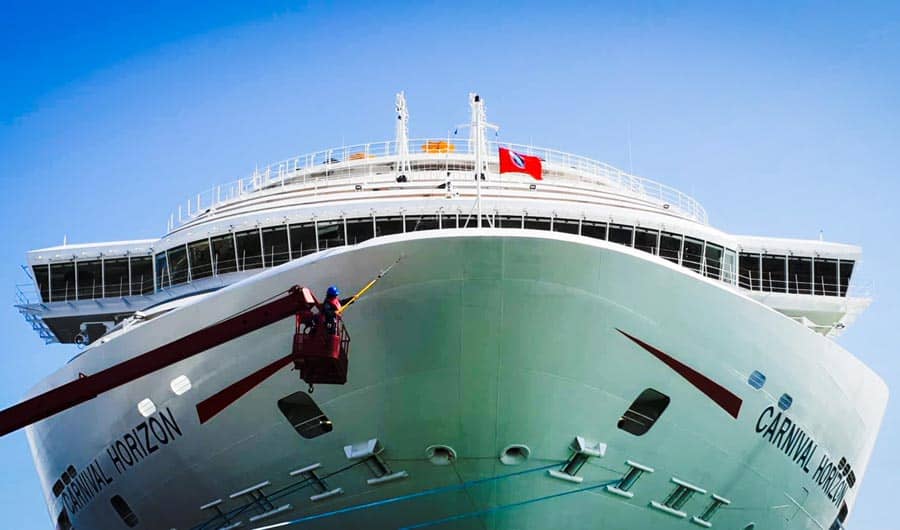
Parabolic and cylindrical bows, along with axe bows, are other types of bow designs developed to optimize hydrodynamic parameters for a ship. Parabolic bows have a curvature that helps maintain the ship's stability and reduce wave-making resistance. Cylindrical bows have a vertical forward face that promotes smooth water flow, whereas axe bows have sharp angles that offer increased speed and fuel efficiency in certain conditions as mentioned here .
The dimensions of a bow design are critical, as they impact both wave-breaking resistance and wave-making resistance, directly affecting the ship's performance. Designers must strike a balance between the vessel's size, weight, and functionality, considering factors such as the ship's purpose, area of operation, and desired efficiency.
In conclusion, the science behind bow design plays a crucial role in the performance and efficiency of a ship. By optimizing factors such as resistance, buoyancy, flare, and freeboard, various bow designs cater to specific needs within the maritime industry. Engineers and naval architects continually strive to develop new and innovative designs that push the boundaries of technology and performance.
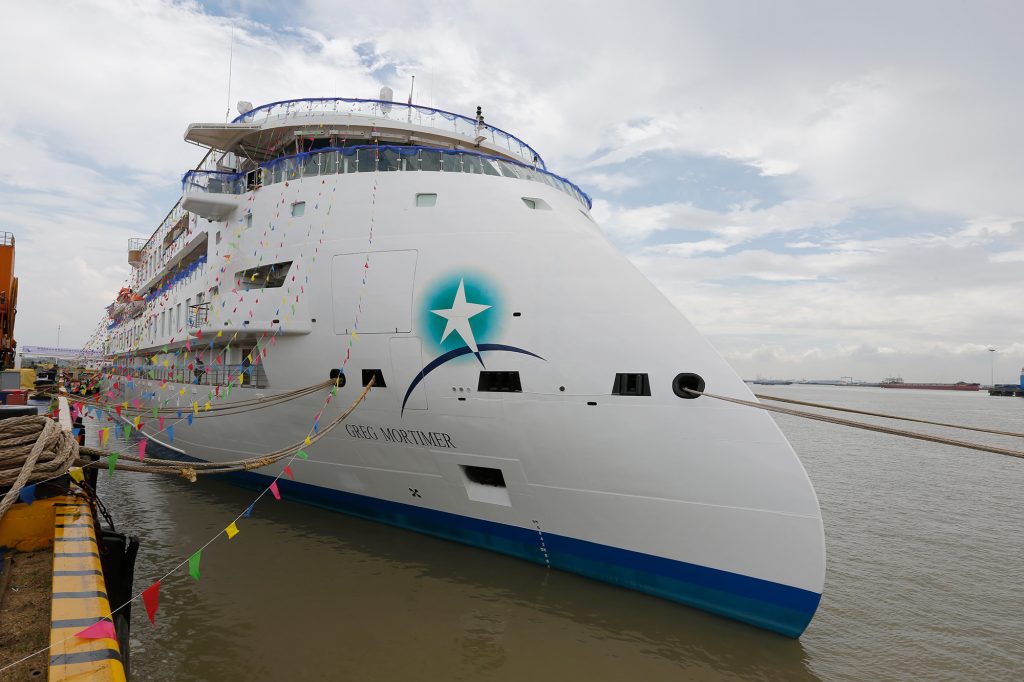
The Role of Bow in Ship Navigation
The bow of a ship plays a crucial role in navigation, as it is the forward-most part of the vessel which comes into contact with the water. The bow's streamlined shape is designed to minimize resistance when cutting through waves, efficiently reducing drag and enhancing fuel efficiency.
A ship's bow is also instrumental in managing a vessel's transit through rough water. The design of the bow allows it to intersect waves effectively, mitigating the resistance components and ensuring a smoother ride. There are different types of bows optimized for specific ship categories, ensuring improved performance in speed, stability, or comfort, depending on the requirement.
The prow is another term used to describe the forward-most part of the bow, specialized to perform optimally in varying conditions. Bows with flared designs help a ship deal with large waves, directing them outwards and minimizing the impact of seawater on the vessel's hull. Flared bows are particularly advantageous in large cruise ships and naval vessels that encounter rough seas.
The bow section also houses essential navigation aids, such as navigation lights that facilitate visibility during nighttime or poor weather conditions. These lights help other vessels to discern ships' direction and orientation, promoting safe navigation and collision avoidance.
In addition to its hydrodynamic functions, the bow of a ship is often equipped with a bow thruster, designed to assist in maneuvering the vessel. Bow thrusters are fitted in ships with high LOA (Length Overall) and GRT (Gross Register Tonnage), using lateral propulsion to enable more precise control in tight spaces or in adverse environmental conditions.
Lastly, it is pertinent to mention that the ship's rudder, although not located at the bow, plays a vital role in conjunction with the bow during navigation. The rudder allows a ship to steer by changing the flow of water around the vessel's hull, controlling its direction.
In summary, the bow is an indispensable component of ship navigation and its design has a tremendous impact on hydrodynamic efficiency, effective wave handling, and overall safety. It also serves as a platform for essential equipment and aids contributing to successful transit and maneuvering.
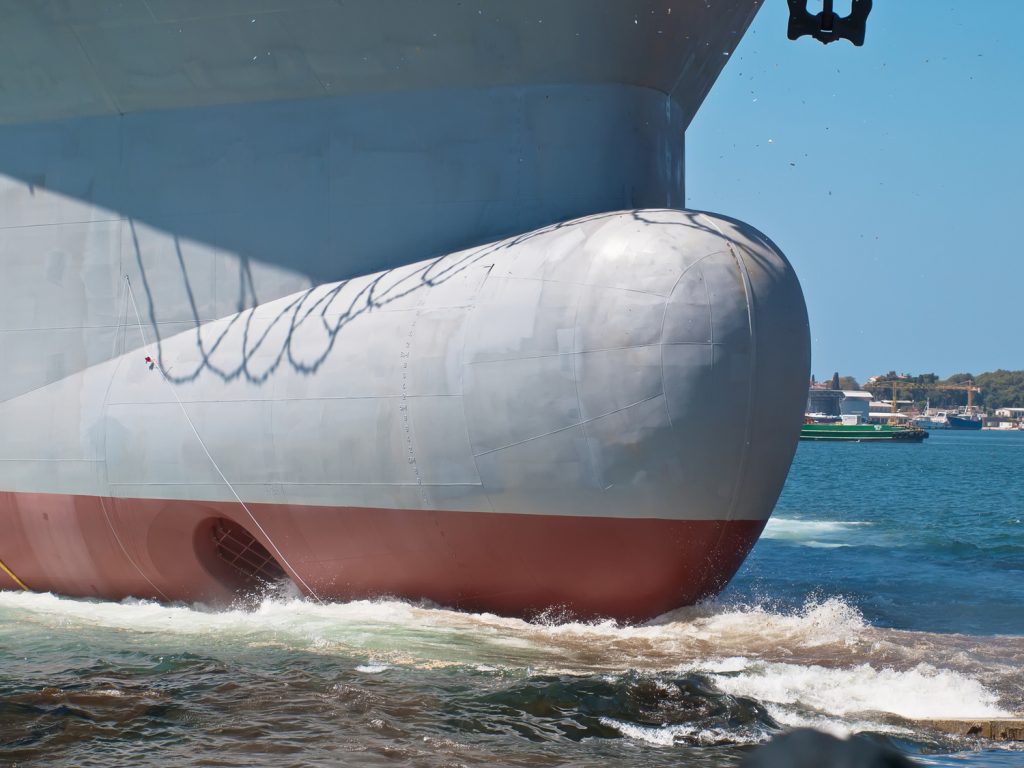
Structural Aspects of Bow
The bow is the forward-most part of a ship that slices through the water as the vessel moves. It is designed with specific dimensions and shape to counteract incoming waves, reducing overall resistance and the power needed to propel the vessel forward 1 . In addition, the bow plays a critical role in the seaworthiness of a ship and affects its buoyancy and stability.
The hull is the main body of the ship where the bow is located. It is constructed of several components, including the keel, girders, and bulkheads, that provide structural integrity and strength to the vessel. The keel is considered the backbone of the ship. It runs from the bow to the stern, and its primary function is to provide stability, strength, and support to the overall structure of the ship [^4^].
The waterline length of a vessel is the length of the boat at its designed waterline, the level where water meets the ship's hull. It is a crucial parameter for defining the hydrodynamic aspects of a ship, including buoyancy, stability, and wetted surface resistance. This measurement is essential for determining the ship's performance and seaworthiness.
The bow's shape and dimensions depend on the type of ship and its function. Some commonly used bow shapes include flared, raked, and inverted bows each, designed for specific performance factors such as enhancing the vessel's speed, reducing spray, or increasing buoyancy 2 .
On either side of the bow, you will find the port and starboard sides, which refer to the left and right side of the vessel, respectively. This distinction is crucial for navigation and communication purposes during a voyage.
The mast, located near the bow on some vessels, is responsible for supporting the sails, rigging, and communication equipment. It plays a significant role in maintaining the ship's forward motion when propelled by wind power.
Lastly, the propeller, situated at the vessel's stern, is responsible for converting the engine's rotational power into thrust, propelling the ship forward. Its efficiency is affected by the bow's design, as the shape of the bow dictates how water flows towards the stern and propeller. This highlights the importance of an optimally designed bow for achieving overall efficiency in a ship's movement.
In conclusion, understanding the structural aspects of the bow in relation to other critical components of a ship is important for achieving the optimal vessel performance. A well-designed bow contributes significantly to the efficiency, stability, and overall performance of a ship, making it an essential aspect of naval architecture.
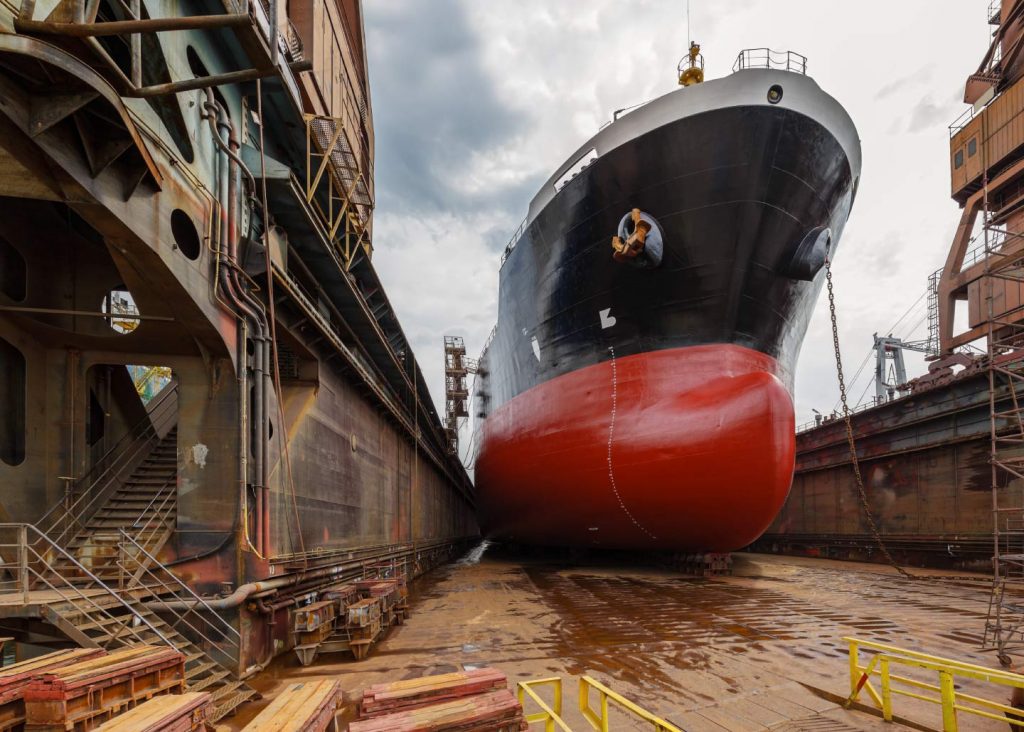
Bow and Shipbuilding Industry
The bow is the forward part of a ship's hull and plays a significant role in the shipbuilding industry, given its importance in a vessel's performance and aesthetics. The design of the bow affects the resistance a vessel faces while moving through water, thereby impacting the vessel's speed and efficiency. Several factors influence the choice of bow design, including the type of vessel, its intended purpose, and industry trends.
Shipbuilding encompasses a wide variety of vessels, ranging from large commercial ships like tankers to smaller leisure crafts such as yachts. The bow designs for these ships vary significantly in order to meet the operational requirements of different vessel types. In the tanker industry, for example, bulbous bows are widely used to reduce the hydrodynamic resistance and improve fuel efficiency. On the other hand, yachts are often designed with raked or clipper bows being aesthetically appealing and suitable for their purpose.
Advancements in technology and machinery have led to the development of innovative bow designs that can address emerging challenges in the shipbuilding industry. For instance, the Axe bow is a wave-piercing design which features a hull with a vertical stem, resulting in a longer and narrower entry. This design has been proven effective in various ship types such as offshore supply vessels, reducing pitching and slamming motions in rough seas.
The choice of bow design is also influenced by the expertise of the ship's master, who must evaluate the vessel's performance based on various factors, including its ability to cut through waves, stability, and fuel consumption. A well-designed bow will not only improve the vessel's performance but also contribute to a safer and more comfortable journey for crew and passengers.
In conclusion, the bow plays a crucial role in the shipbuilding industry, with its design being a major aspect determining a vessel's performance and aesthetics. As the industry continues to evolve and develop, new designs and technologies will be introduced to enhance the capabilities of various types of vessels. Mastering the intricacies of bow design is essential for shipbuilders and masters alike to ensure optimal vessel performance and maintain a competitive edge in a rapidly changing world.

Bow Design Impact on Different Types of Ships
The bow is a prominent structure at the front of a ship, designed to navigate through water efficiently and withstand various forces encountered at sea. Bow designs can significantly impact different types of ships, such as yachts, tankers, and other watercraft. This section will discuss how various bow designs affect these vessels.
Bulbous bows are common on large ships like tankers, cargo ships, and cruise ships. The bulbous protrusion at the waterline reduces drag and improves the hydrodynamic efficiency of the ship, allowing it to travel at higher speeds with less fuel consumption. For tankers specifically, this design reduces their operating costs and makes them more environmentally friendly by decreasing greenhouse gas emissions.
In contrast to the bulbous bow, the axe bow is a wave-piercing design, developed by the Dutch shipbuilding group Damen. This design has been widely adopted by yachts and offshore supply ships, as it is characterized by a sharp, narrow shape that cuts through waves instead of riding over them. The axe bow enables the vessel to maintain higher speeds in rough conditions, improving comfort and safety for those on board.
Clipper bows are another design often found on yachts, as well as traditional sailing vessels. Their upward curvature offers additional buoyancy, helping the ship ride over waves and preventing plunging – the tendency to submerge the bow under the surface of the water. This design is suited for long-distance sailing, as it provides stability and comfort for the crew.
The spoon bow, on the other hand, is designed with a curved shape that smoothly transitions from hull to bow, reducing the disturbance of water flow around the ship. This design is popular for its aesthetic appeal and is prevalent in pleasure crafts and smaller watercraft. While this shape may not provide the same stability as the clipper or axe bows in rough conditions, it offers a combination of aesthetics and practicality for the users.
Lastly, parabolic bows, used in some modern tankers, have a parabolic profile that improves hydrodynamics. With similar characteristics to cylindrical hulls, this bow design can effectively decrease wave resistance, improve sea-keeping, and increase vessel efficiency when combined with a bulb.
In conclusion, bow designs play a crucial role in determining the performance, efficiency, and safety of various types of ships, including yachts, tankers, and watercraft. From bulbous bows for large vessels to clipper and axe bows for yachts, each design delivers its unique set of advantages and disadvantages, depending on the ship's purpose and operating conditions.
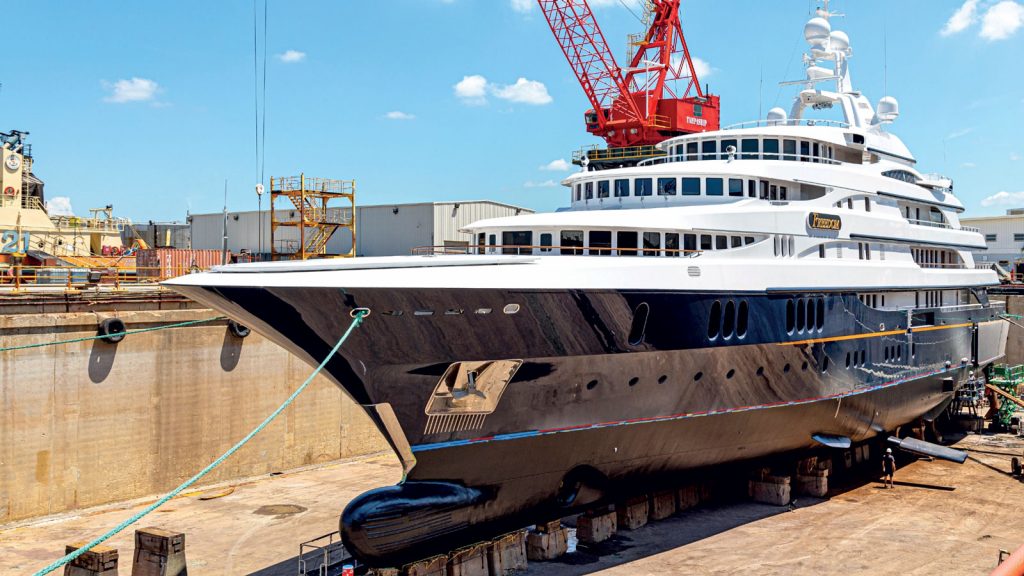
Historical and Modern Significance of Bow
The bow, which is the forward part of a ship's hull, has played a crucial role in the history of maritime technology and design. In ancient times, the bow's primary purpose was to navigate through water efficiently and withstand various forces encountered at sea. One prominent historical feature of the bow is the figurehead , a carved decorative piece typically representing a person, animal, or mythical creature. Figureheads were not only decorative elements but also served as symbols of power, protection, and prestige for the ship and its crew [1] .
In the past, different types of bows were designed for specific purposes. For example, during the Victorian era, the ram bow emerged as an offensive weapon, while bluff bows were common on wooden sailing vessels [2] . As maritime technology advanced, the design of bows evolved to adapt to new challenges and improve ship performance.
In the 20th century, the bulbous bow emerged as a highly effective performance enhancer. This type of bow, characterized by its protruding bulb shape, is now commonly found on modern cruise ships, container ships, LNG carriers, and research vessels. The bulbous bow not only improves hydrodynamic efficiency but also reduces fuel consumption and enhances overall sailing performance [3] .
Today, the bow of a ship continues to be an essential part of its design, combining both form and function. Engineers and naval architects carefully consider the specific requirements of each vessel in designing the bow to suit its intended use. As a result, modern bows can be seen in various shapes and sizes, tailored to each ship's purpose and operating environment.
In conclusion, the bow's historical and modern significance lies in its essential role in navigation, efficiency, and performance at sea. From figureheads to bulbous designs, the evolution of the bow reflects a continual pursuit of improvement in the maritime industry. With ongoing advancements in technology and new challenges in the world of shipping, the bow will undoubtedly continue to be at the forefront of future marine engineering and design innovations.
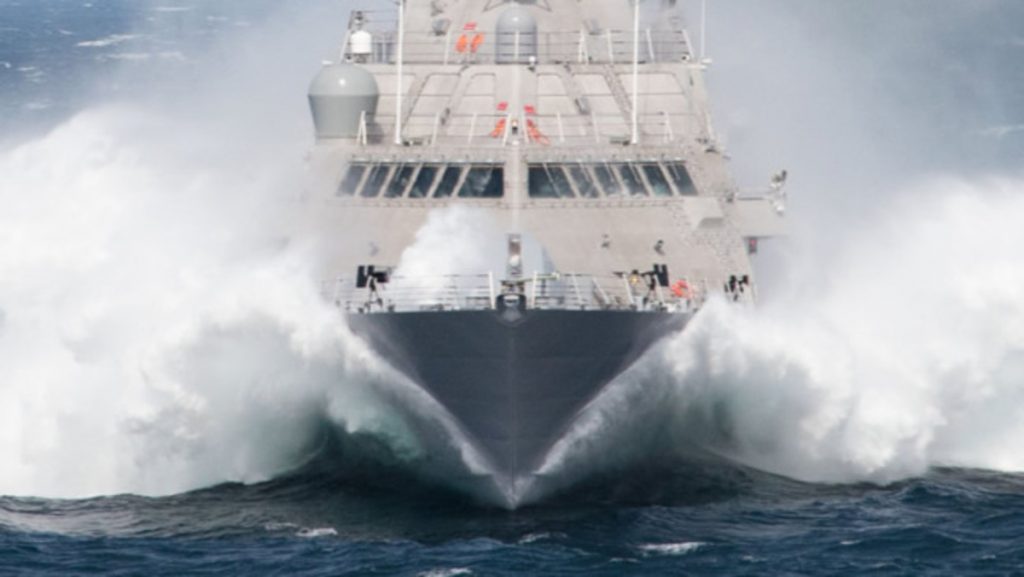
Bow in Different Conditions
In various conditions, especially when a ship is fully loaded, the bow design plays a crucial role in ensuring safety and efficiency. A well-designed bow allows the vessel to cut through the waves, reducing water resistance and resulting in a smoother journey. Different bow designs are tailored for specific situations, both domestic and international.
In fully loaded conditions , the bow's design must account for higher resistance against the water, especially in larger vessels. For instance, the bulbous bow is a common design on large cargo ships and tankers. This type of bow features a protruding bulb below the waterline, which creates a favorable pressure wave ahead of the ship, consequently reducing the drag and enhancing energy efficiency.
Ships navigating in areas with continuous slopes or rough seas require a bow design that can handle the unpredictable wave impacts. The axe bow is a suitable choice in such conditions, with its slender, elongated form allowing the ship to maintain speed and stability while minimizing the slamming effect caused by large waves.
In domestic shipping, vessels are designed to cater to coastal and short-distance routes. These ships may favor a raked bow , which is shaped with a backward leaning angle. This design offers more buoyancy when the ship encounters waves, providing a comfortable journey for passengers and ensuring the safety of the cargo.
International shipping, on the other hand, involves navigating longer distances and diverse water conditions. Vessels engaged in international routes often utilize a more advanced bow design, such as the inverted bow . This innovative design offers improved seakeeping in rough seas, increased speed, and reduced fuel consumption, making it an ideal choice for performing in various sea states and regions.
In summary, the bow design greatly impacts a ship's performance, safety, and efficiency in different conditions. Selecting an appropriate bow design tailored to the vessel's purpose, operating environment, and specific conditions, such as fully loaded scenarios, slopes, and both domestic and international routes, is vital for optimal performance.
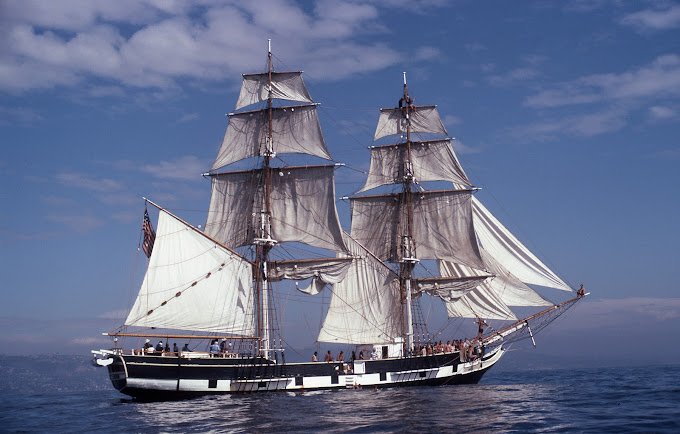
Miscellaneous Components Related to Bow
The bow of a ship plays a crucial role in its overall performance and design. It navigates through water, providing stability and reducing resistance. Besides its shape and design, several other components are related to a ship's bow. In this section, we will discuss some of these components, specifically focusing on the anchor and accommodation areas.
The anchor is an essential part of a ship, responsible for holding it in place when stationary, especially in ports or at sea during unfavorable conditions. Anchors are typically located at the bow, allowing the ship to face the wind or current and maintain stability. Various types of anchors are used, depending on ship size and type, and the conditions under which they operate. Some common types of anchors include the stockless anchor, Danforth anchor, and grapnel anchor.
Another vital aspect related to the bow of a ship is the accommodation area . The accommodation refers to the living quarters for the crew, including cabins, mess rooms, and recreation spaces. This area is generally situated towards the stern or middle of the ship, but in some cases, it may extend towards the bow, especially on smaller vessels or specialized ships, such as research vessels. The accommodation area design also considers safety, providing crew members with an escape route to the bow in case of emergencies, minimizing the risk of encountering hazards such as fires or heavy smoke. Ensuring safety, comfort, and convenience for the crew is crucial in designing and maintaining ship accommodation areas.
In summary, the bow's design and shape contribute significantly to a ship's performance. Various components interact with the bow, such as the anchor and accommodation areas, ensuring secure anchorage and a safe and comfortable living space for the crew. Attention should be given to these components to maintain overall quality and safety standards in maritime operations.
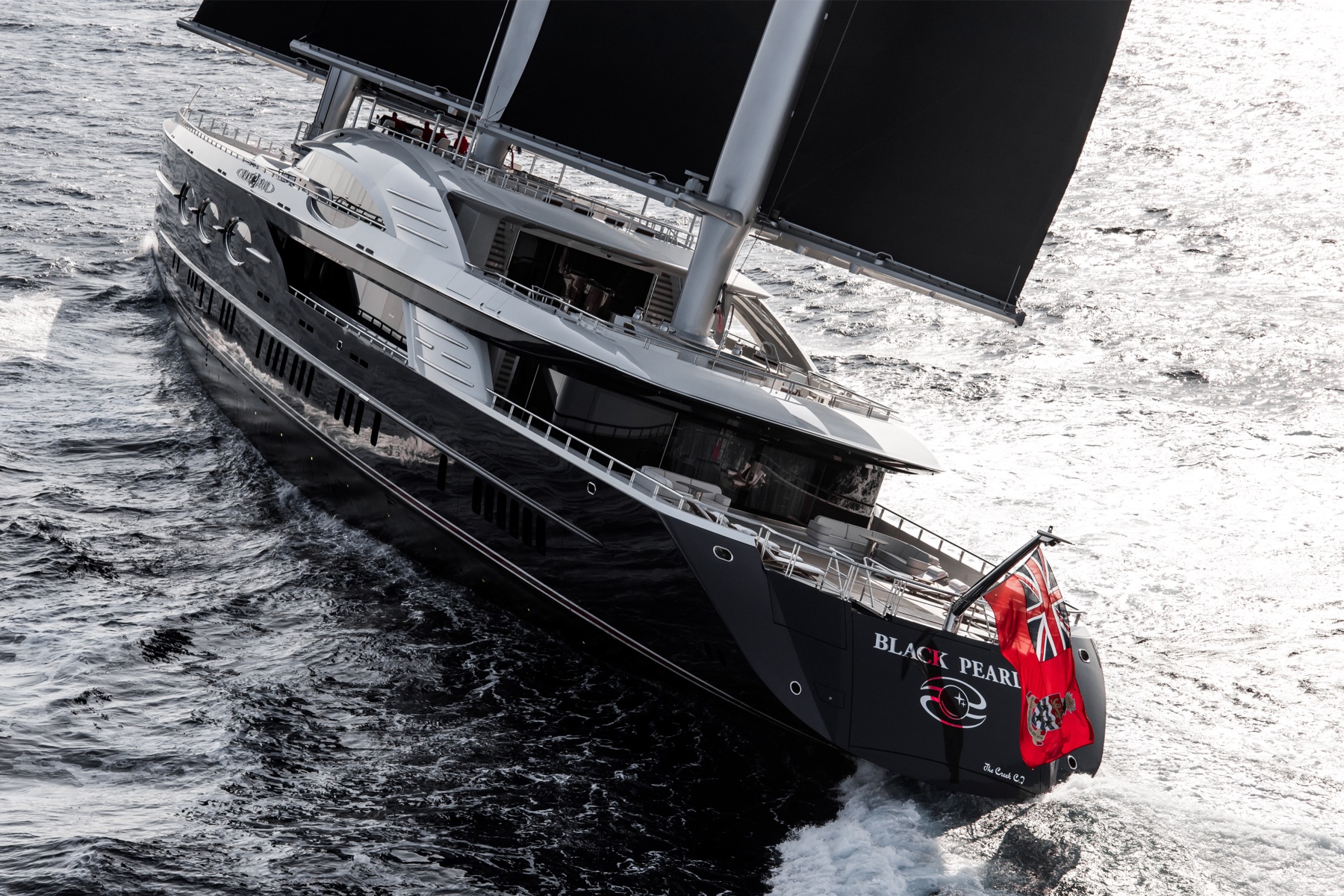
Frequently Asked Questions
What is the purpose of a bulbous bow.
A bulbous bow is a protruding structure at the forward-most part of a ship's hull, designed to improve its hydrodynamic performance by reducing resistance. This innovative bow configuration allows ships to move more efficiently through water, which in turn leads to fuel savings and a reduction in environmental impact. The bulbous bow has proven to be particularly beneficial for larger vessels such as cargo ships and cruise liners.
How does the shape of a ship's bow affect its performance?
The shape of a ship's bow plays a vital role in its overall performance, including speed, stability, and maneuverability. Different bow designs are engineered to optimize specific aspects of a ship's performance, such as reducing drag, cutting through waves efficiently, or providing added stability in rough seas. Ultimately, the choice of bow shape depends on the vessel's intended function and the conditions it is expected to encounter.
What is the difference between the bow and the stern?
The bow refers to the forward part of a ship's hull, while the stern is the aft or rear end of the hull. These two terms are used to describe the orientation of various components and systems on board. The bow typically features a more streamlined and pointed shape to facilitate efficient movement through water, while the stern is often broader and flatter, designed to accommodate propulsion systems and other essential equipment. You can find more information about these terms in this Wikipedia article .
Why is the bow important for ship stability?
A well-designed bow contributes to a ship's overall stability by influencing its motion through water. An optimized bow shape allows the vessel to cut through waves with minimal resistance, enhancing both speed and stability. Furthermore, some advanced bow configurations, like the bulbous bow, can even help to dampen the ship's pitching motion in rough seas, making for a more comfortable and stable experience for those on board. Here's an article that explores different parts of a ship and their importance in stability.
What are the materials commonly used for ship bows?
Materials for ship bows are chosen based on factors such as strength, durability, and resistance to corrosion. Commonly used materials include steel (particularly for larger ships), aluminum (for lighter weight and high-speed vessels), and fiberglass (for smaller recreational boats). Modern composite materials, such as carbon fiber, are also becoming more popular in the marine industry due to their strength-to-weight ratio and resistance to harsh environments.
How has bow design evolved over time?
Bow design has come a long way, from the early vertical or plumb bows to the more modern inverted, bulbous, and axe bows. The evolution of these designs has been driven by a desire for increased efficiency, speed, and stability in varying sea conditions. Additionally, new materials and construction techniques have allowed for the creation of more advanced, lightweight, and durable bows. For a detailed examination of different bow designs and their evolution over time, you can refer to this insightful article from Marine Insight.
- https://en.wikipedia.org/wiki/Bow_(watercraft) ↩ ↩ 2
- https://en.wikipedia.org/wiki/Bulbous_bow ↩ ↩ 2
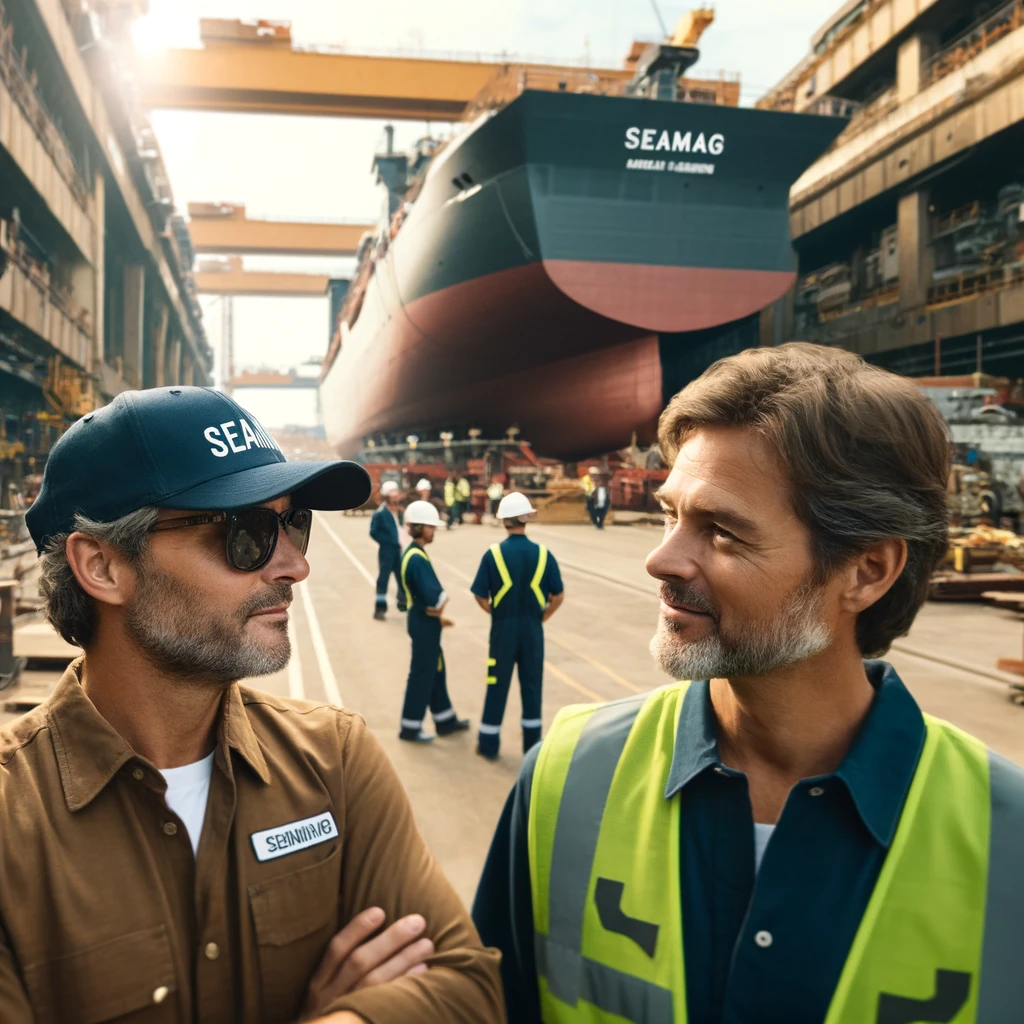
Q&A With Ship Buiders
Charlie: Good afternoon, Art. Thanks for joining me today to talk about your latest ship designs at Heavy Duty Industries.
Art: Hi Charlie, it's great to be here. Thanks for having me.
Charlie: Let's dive right in. Your company has recently launched a new boat called the Ocean Sprinter, and it features an innovative bow design. Can you describe the shape of the bow?
Art: Absolutely. The Ocean Sprinter has a plumb bow, which means it has a more vertical bow than traditional ships. This vertical design is quite pointed or tapered, which helps in cutting through the water smoothly, reducing the bow wave.
Charlie: Interesting. What are the advantages of using a plumb, vertical bow over, say, a flared bow?
Art: A plumb bow, due to its pointed or tapered shape, helps achieve greater hull speed. The vertical alignment allows the boat to displace water more efficiently, which is crucial for high-speed maritime travel. In contrast, a flared bow is more about handling waves and providing more space on deck.
Charlie: Speaking of handling waves, how does the Ocean Sprinter manage that with its boat bow design?
Art: The tapered shape of the bow also plays a critical role in how water interacts with the ship’s hull. By channeling the water smoothly along the port side and starboard, the ship can maintain stability and speed even in rougher seas.
Charlie: That sounds quite innovative. How does this design impact the space available inside the ship?
Art: That’s one of the unique challenges. While a vertical bow doesn’t offer as much space as a flared bow, we’ve optimized the interior design to maximize space. The tapered shape may reduce some potential space forward, but it contributes significantly to the vessel's overall performance and efficiency.
Charlie: It seems like a balanced approach between performance and comfort. How has the market reacted to the new design?
Art: The response has been very positive, especially among clients who value speed and efficiency. They appreciate how the bow cuts through water and the benefits that the design brings to fuel efficiency and speed.
Charlie: It’s fascinating to see how bow designs can influence so many aspects of a ship's performance and utility. Art, thank you for sharing these insights today.
Art: Thank you, Charlie. It was a pleasure discussing our work with you and your readers at Sea Magazine.
Related Articles
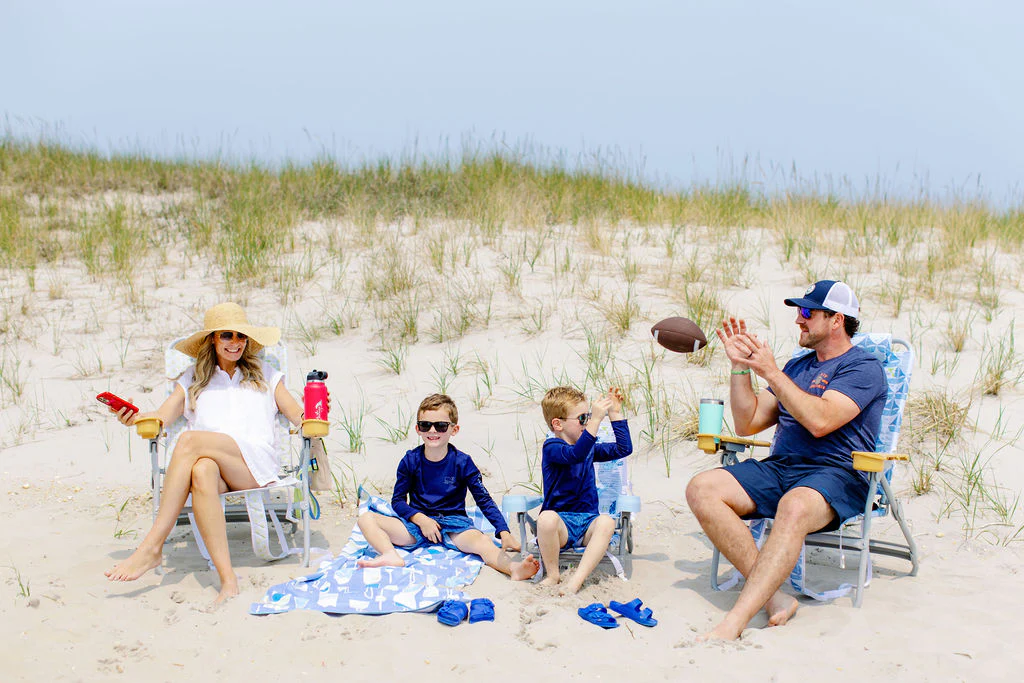
Best Beach Chairs 2024: Top Picks for Ultimate Comfort and Style
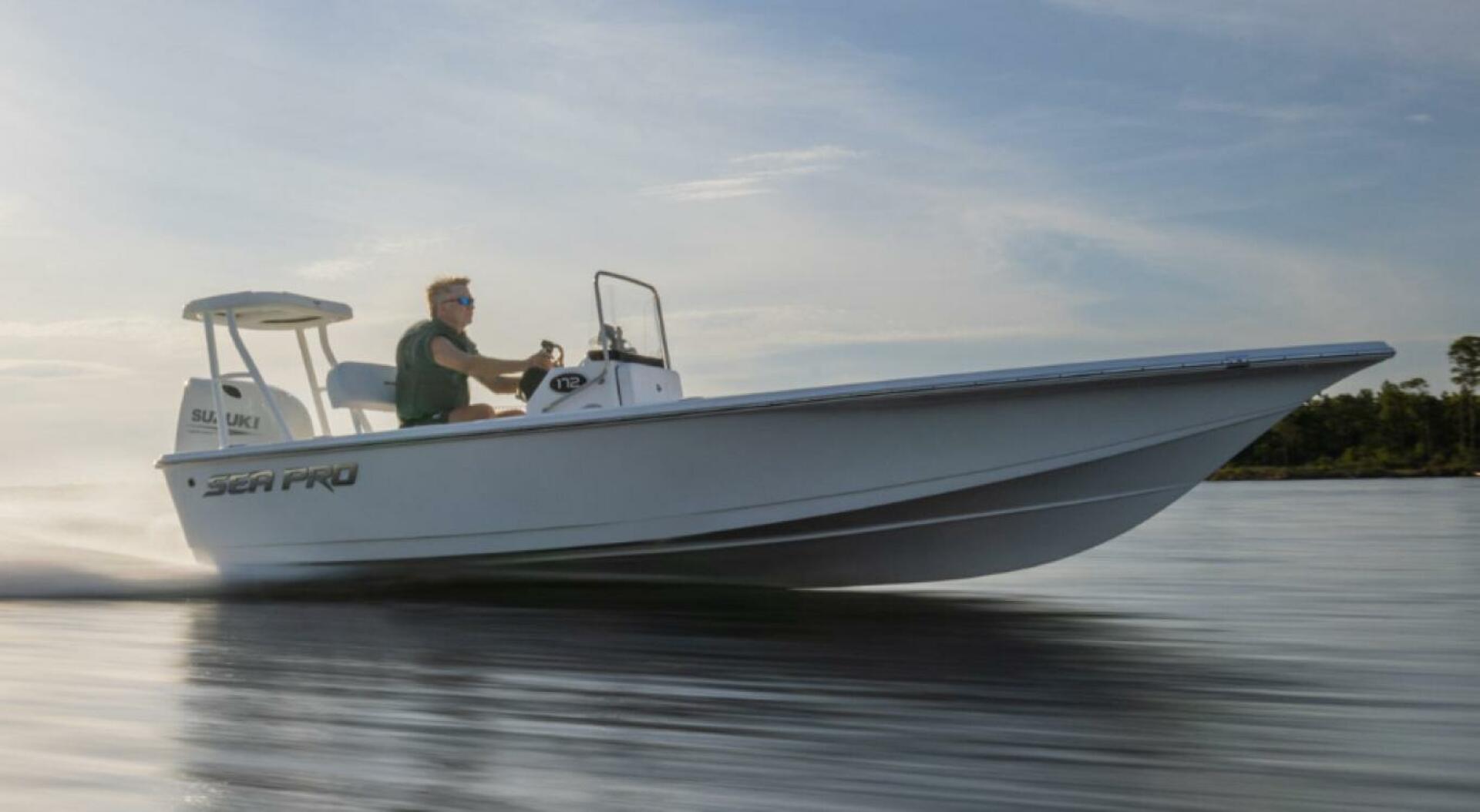
Top 10 Small Boats for Sale 2024: Expert Picks for Every Budget
Iconic Marine Group creates-Iconic Yacht Group

Top 20 Parts of a Boat for Seamless Sailing
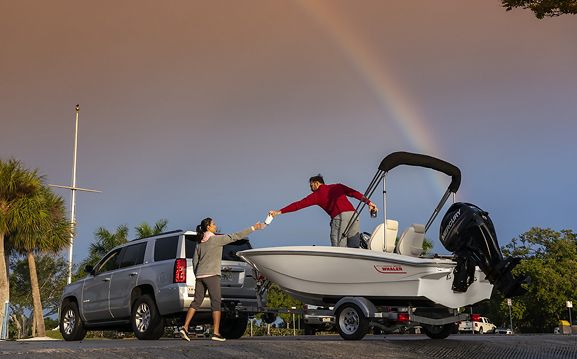
Boston Whaler: Unrivaled Performance and Reliability on the Water
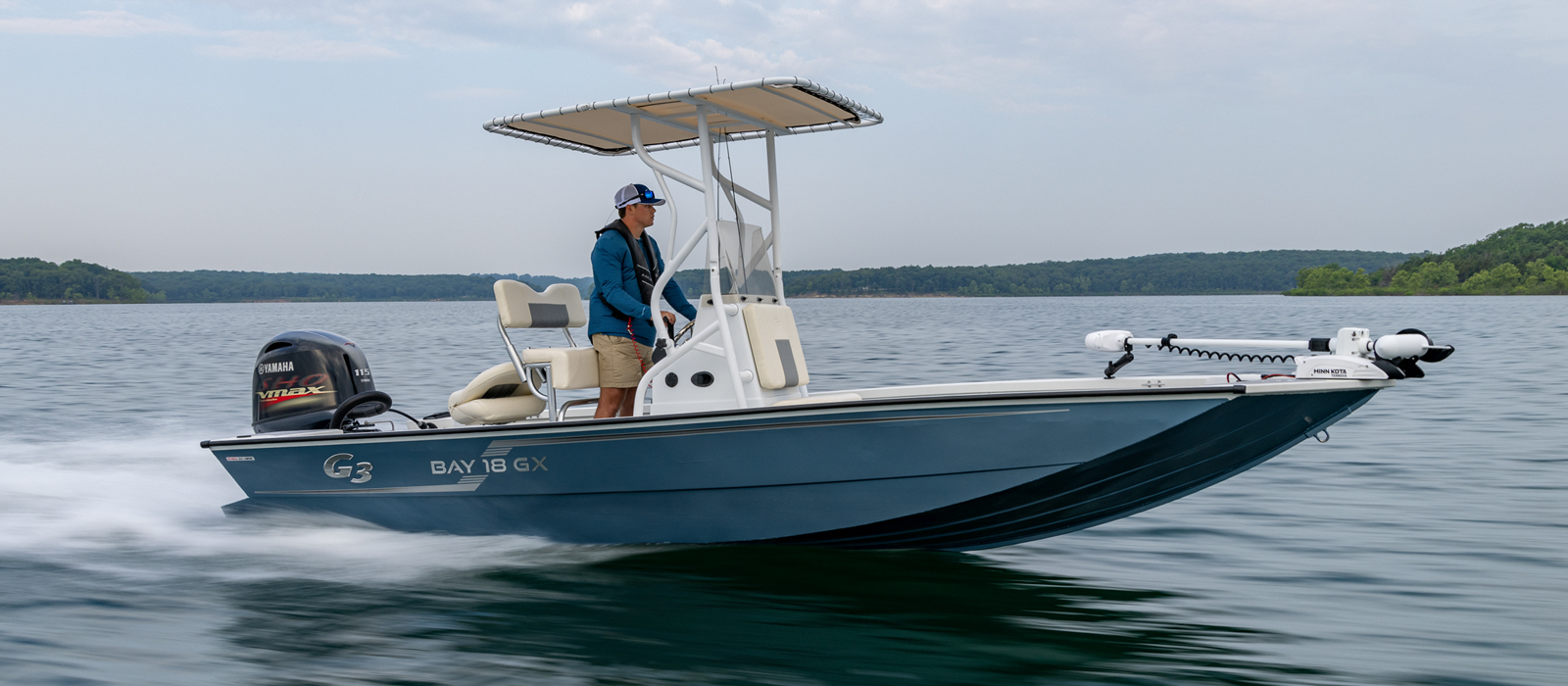
Top 5 Bay Boats Under $50K: Best Affordable Options for 2024
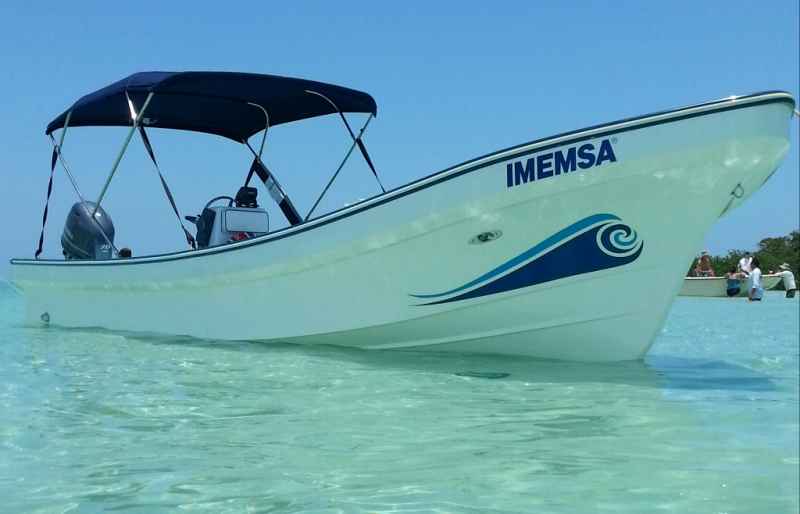
Panga Boats: A Comprehensive Guide to Their Features and Uses

Forged To Float: Metal Boats
- Celebrity Cruises
Celebrity Edge bow-shape
By John Bull , May 14, 2019 in Celebrity Cruises
Recommended Posts

There's some misconceptions here, even in "data" from the web. It is true that the longer the waterline length (so the "inverted" bow on these ships makes the waterline longer for a given overall length) gives a hull a faster "hull speed" or the most efficient speed the hull can be pushed through the water, that does not make the inverted bow "more efficient". It just means that the ship with the inverted bow has a higher optimum speed than the bow with the flared bow.
The trade off is that the inverted bow does not flare outwards as it goes up the way a "normal" bow does. This flaring increases the internal volume of the hull at higher levels, so when the flared bow digs into a wave, that increased volume provides increased buoyancy, and the bow rises to ride over the wave. A non-flared bow like the inverted bow does not do this, and the ship will dig deeper into waves and not ride over them. In fact, these bows are known as "wave piercers", as they will pierce through a wave and not ride over. This creates less pitching motion, but also results in a "wetter" bow, as the flare also serves to deflect water from an oncoming wave to the side, while the non-flared bow will take it on the forward part of the superstructure. There can be more "slamming" into the waves in place of the pitching.
Cruise lines have decided on fuel savings over ride and green water over the bow.

Link to comment
Share on other sites.

ipeeinthepool
9 minutes ago, chengkp75 said: There's some misconceptions here, even in "data" from the web. It is true that the longer the waterline length (so the "inverted" bow on these ships makes the waterline longer for a given overall length) gives a hull a faster "hull speed" or the most efficient speed the hull can be pushed through the water, that does not make the inverted bow "more efficient". It just means that the ship with the inverted bow has a higher optimum speed than the bow with the flared bow. The trade off is that the inverted bow does not flare outwards as it goes up the way a "normal" bow does. This flaring increases the internal volume of the hull at higher levels, so when the flared bow digs into a wave, that increased volume provides increased buoyancy, and the bow rises to ride over the wave. A non-flared bow like the inverted bow does not do this, and the ship will dig deeper into waves and not ride over them. In fact, these bows are known as "wave piercers", as they will pierce through a wave and not ride over. This creates less pitching motion, but also results in a "wetter" bow, as the flare also serves to deflect water from an oncoming wave to the side, while the non-flared bow will take it on the forward part of the superstructure. There can be more "slamming" into the waves in place of the pitching. Cruise lines have decided on fuel savings over ride and green water over the bow.
Thanks for the explanation, but I do have a couple questions about "optimum speed" and what it really means to the cruise ship industry. Exactly what is optimum speed? Does time matter to the cruise lines? Is it the cruising speed where the cruise ship consumes the least fuel? Do the ships typically operate at the optimum speed? Consider two similar ships one with a normal bow and one with an inverted bow. Consider the typical case for a cruise ship where the ship leaves one port and sails to the 12 hours to the next port. If the ship with the normal bow at a lower optimum speeds sails twelve hours and gets to the next port exactly on time and the inverted bow ship gets there an hour early and idles for the next hour, which ship would use less fuel? I wonder how the fuel consumption of the two ships compares if both ships are operating off the optimum speed. Given that time is also important to cruise lines, I wonder if they are really saving fuel with the inverted bow design or is this really similar to auto manufacturers putting tail fins on cars in the 50s and 60s.
1 hour ago, ipeeinthepool said: Thanks for the explanation, but I do have a couple questions about "optimum speed" and what it really means to the cruise ship industry. Exactly what is optimum speed? Does time matter to the cruise lines? Is it the cruising speed where the cruise ship consumes the least fuel? Do the ships typically operate at the optimum speed? Consider two similar ships one with a normal bow and one with an inverted bow. Consider the typical case for a cruise ship where the ship leaves one port and sails to the 12 hours to the next port. If the ship with the normal bow at a lower optimum speeds sails twelve hours and gets to the next port exactly on time and the inverted bow ship gets there an hour early and idles for the next hour, which ship would use less fuel? I wonder how the fuel consumption of the two ships compares if both ships are operating off the optimum speed. Given that time is also important to cruise lines, I wonder if they are really saving fuel with the inverted bow design or is this really similar to auto manufacturers putting tail fins on cars in the 50s and 60s.
It's not "optimum speed" it is the fastest speed that a hull can be pushed efficiently. To give an example, the QM2 is a much larger vessel than the old SS United States, but both could reach 30 knots (the SSUS nearly 38 knots). However, the QM2 needs only 86Mw of power in here propulsion to do this, while the smaller SSUS needed 180Mw (twice the power). The SSUS was pushing above her hull speed at 30+ knots, requiring all that power to do so, while the QM2 is operating likely close to her hull speed, so she can make that speed with less power.
"Optimum speed" is a moving target, as it changes with every passage between ports. Optimum speed is the minimum speed needed to get to port at the right time. Getting there early and then "waiting" will not save fuel, typically the opposite, and the longer the passage, the more fuel will be wasted.
Time is not that important to a cruise line, but the ability to make a higher speed when desired aids in making itineraries. Once an itinerary is made, the speed that the ship will travel at between ports is determined by the distance and the time allotted. So, the faster ship will not "get there" earlier and idle, it will merely slow down so that it makes a constant speed and arrives at the appointed time. Everyone notes here on CC the way that port times have been reduced over the last few years, and this is so the ships can sail at slower speeds over the same distances between the ports, to save fuel. The power to move a ship is an exponential relationship to the speed, not a straight line relationship, so the faster a ship goes, regardless of bow shape, the power (and hence the fuel consumption) goes up by a power (like squared or cubed) of the speed increase. For a cruise ship, steaming along at 14 knots (with a max speed of 20 knots, or about 70% speed) takes about 40% of the power and fuel, so the last 30% of speed more than doubles the fuel consumption.
Confusing the calculations is the fact that the diesel engines have their own point of maximum fuel efficiency, which is around 70-80% of max power. So, if your optimum speed needed to get to port on time results in a lower load on the diesels, you may lose some of your fuel savings. This is why cruise ships have multiple diesel engines, and often two different sizes of engines, so the engineers can optimize the power generation capacity to the power demand, getting as close to the optimum load on the diesels for the optimum speed the ship needs.
No, the cruise lines are very concerned about fuel consumption, especially with the new sulfur restrictions coming into effect in 2020-2021, which will drive marine fuel prices higher. A bow design is a major hydrodynamic decision, not like putting fins on cars. For ships with the same overall length, the ship with the longer waterline length (inverted bow) will require less power to push the ship at any speed up to hull speed, and that hull speed will be higher.

22 minutes ago, chengkp75 said: It's not "optimum speed" it is the fastest speed that a hull can be pushed efficiently. To give an example, the QM2 is a much larger vessel than the old SS United States, but both could reach 30 knots (the SSUS nearly 38 knots). However, the QM2 needs only 86Mw of power in here propulsion to do this, while the smaller SSUS needed 180Mw (twice the power). The SSUS was pushing above her hull speed at 30+ knots, requiring all that power to do so, while the QM2 is operating likely close to her hull speed, so she can make that speed with less power. "Optimum speed" is a moving target, as it changes with every passage between ports. Optimum speed is the minimum speed needed to get to port at the right time. Getting there early and then "waiting" will not save fuel, typically the opposite, and the longer the passage, the more fuel will be wasted. Time is not that important to a cruise line, but the ability to make a higher speed when desired aids in making itineraries. Once an itinerary is made, the speed that the ship will travel at between ports is determined by the distance and the time allotted. So, the faster ship will not "get there" earlier and idle, it will merely slow down so that it makes a constant speed and arrives at the appointed time. Everyone notes here on CC the way that port times have been reduced over the last few years, and this is so the ships can sail at slower speeds over the same distances between the ports, to save fuel. The power to move a ship is an exponential relationship to the speed, not a straight line relationship, so the faster a ship goes, regardless of bow shape, the power (and hence the fuel consumption) goes up by a power (like squared or cubed) of the speed increase. For a cruise ship, steaming along at 14 knots (with a max speed of 20 knots, or about 70% speed) takes about 40% of the power and fuel, so the last 30% of speed more than doubles the fuel consumption. Confusing the calculations is the fact that the diesel engines have their own point of maximum fuel efficiency, which is around 70-80% of max power. So, if your optimum speed needed to get to port on time results in a lower load on the diesels, you may lose some of your fuel savings. This is why cruise ships have multiple diesel engines, and often two different sizes of engines, so the engineers can optimize the power generation capacity to the power demand, getting as close to the optimum load on the diesels for the optimum speed the ship needs. No, the cruise lines are very concerned about fuel consumption, especially with the new sulfur restrictions coming into effect in 2020-2021, which will drive marine fuel prices higher. A bow design is a major hydrodynamic decision, not like putting fins on cars. For ships with the same overall length, the ship with the longer waterline length (inverted bow) will require less power to push the ship at any speed up to hull speed, and that hull speed will be higher.
Thanks again

Zonkers!! Great info.

On 5/14/2019 at 8:18 AM, Xport said: I disembarked Edge's Transatlantic yesterday morning in Southampton after having also spent a week aboard in the Caribbean during March... http://www.rclcorporate.com/celebrity-edges-eye-pleasing-bow-goes-back-to-the-future/ While I'm not sure I would necessarily agree with Royal Caribbean's assessment that Edge's bow shape is eye-pleasing [and miss the helipad of her Celebrity sisters], it does--in combination with new technologies [among them, a system that generates a "carpet" of drag-reducing microbubbles]--create an consistently smooth ride through frequent high winds/periodic high seas... Captain Costas indicated that Edge is proving to be extremely fuel efficient. A fire boat--with water cannons creating quite a fountain effect--provided an escort into Southampton port early yesterday morning to welcome Edge to The UK for the first time... It was quite a memorable experience; many thanks!
When I see that bow I wonder about how much reserve buoyancy it has. That's the ability of the bow to rise above a big wave as opposed to plowing through it. The traditional forward-leaning flared bow has a lot of extra lift when hitting a large wave.
That goes back to my days on sailboats. A bow that didn't have a good amount of reserve buoyancy was known as a "wet boat" as waves frequently washed over the bow onto the deck.

so,ton saint
3 hours ago, bobndee said: When I see that bow I wonder about how much reserve buoyancy it has. That's the ability of the bow to rise above a big wave as opposed to plowing through it. The traditional forward-leaning flared bow has a lot of extra lift when hitting a large wave. That goes back to my days on sailboats. A bow that didn't have a good amount of reserve buoyancy was known as a "wet boat" as waves frequently washed over the bow onto the deck.
Have just seen Edge in Southampton for the first time what a beautiful looking ship, iam more of a traditional person myself having sailed the pond many times on the old RMS Queen Mary as a crew member, am looking forward to Apex next year i think she is doing five cruise from So,ton, she certainly puts her parents company ships in the dark.

Germancruiser
so, ton saint- amazing- you sailed the old RMS Queen Mary- that really must have been something! You should write a book or something about it! There are many ship buffs out there- as I am - maybe that´s why i love QM2! At least she is an ocean liner with a nod to the old times..!
CGTNORMANDIE
1 hour ago, Germancruiser said: so, ton saint- amazing- you sailed the old RMS Queen Mary- that really must have been something! You should write a book or something about it! There are many ship buffs out there- as I am - maybe that´s why i love QM2! At least she is an ocean liner with a nod to the old times..!
Some of us have experienced the old Queens...amazing. You would have loved watching the Elizabeth sailing by in the opposite direction of the Mary in mid ocean. Now that was really something. I am not a big fan of the reverse bow...but I will abide by it if it boosts fuel efficiency.
Oh yes- that would have been a sight so see. I was on board the QM2, when for the first time the three Queens- QV- QM2 and the old QE2- met in New York! 2008 i thing it was! Wonderful experience!
4 hours ago, Germancruiser said: Oh yes- that would have been a sight so see. I was on board the QM2, when for the first time the three Queens- QV- QM2 and the old QE2- met in New York! 2008 i thing it was! Wonderful experience!
Hi yes they were the days, yes you could see the LIZZIE on the horizon midway, at a steady 27 knot,s translantic then was four day,s 17 hours,but now QM 2 as you know is more like six day,s, with that other greyhound SS UNITED STATES, well say no more three days ten hours say no more the blue ribbon girl.
Oh my- only three days for a TA- faaaaaaaaaar to short! LOL. In them days ment as a competition to flying- but even that was to long for the Liners to survive!
They really should scrape the United States- such a waste, they let her rot for some 40 years now- so many tried to save her and always turned back. A swift ending would be better then let her layed up there.
Reminds me of Fedship.

5 hours ago, Germancruiser said: Oh my- only three days for a TA- faaaaaaaaaar to short! LOL. In them days ment as a competition to flying- but even that was to long for the Liners to survive! They really should scrape the United States- such a waste, they let her rot for some 40 years now- so many tried to save her and always turned back. A swift ending would be better then let her layed up there.
Hi all i know iam going of the topic but if you go into www.queenmaryassociation.com its were the old crew have a reunion four times a year,but going back farther germancruiser my father shoveled coal in the old berengaria formally the ss Imperator an old german translantic liner transferred to cunard after the war, her sister was the vaterland renamed leviathan taken over by the USA.
.thumb.jpg.6ec1a73ddcd26b1a5956e140689a3e6f.jpg)
On 5/15/2019 at 5:52 AM, chengkp75 said: There's some misconceptions here, even in "data" from the web. It is true that the longer the waterline length (so the "inverted" bow on these ships makes the waterline longer for a given overall length) gives a hull a faster "hull speed" or the most efficient speed the hull can be pushed through the water, that does not make the inverted bow "more efficient". It just means that the ship with the inverted bow has a higher optimum speed than the bow with the flared bow. The trade off is that the inverted bow does not flare outwards as it goes up the way a "normal" bow does. This flaring increases the internal volume of the hull at higher levels, so when the flared bow digs into a wave, that increased volume provides increased buoyancy, and the bow rises to ride over the wave. A non-flared bow like the inverted bow does not do this, and the ship will dig deeper into waves and not ride over them. In fact, these bows are known as "wave piercers", as they will pierce through a wave and not ride over. This creates less pitching motion, but also results in a "wetter" bow, as the flare also serves to deflect water from an oncoming wave to the side, while the non-flared bow will take it on the forward part of the superstructure. There can be more "slamming" into the waves in place of the pitching. Cruise lines have decided on fuel savings over ride and green water over the bow.
Thank you very much. You have taken the conversation past "Do you like the bow shape on Edge" with some good information. You add a lot of value to these boards with your knowledge. Much appreciated!

The Captain of the Constellation gave a lecture on navigation during the cruise last week. He said (although I may have mis-interpreted what he said) that a lot of ships are long and narrow and have an underwater cross section that approximates the letter V. Such ships can usefully have a bulbous bow. Modern cruise ships typically are quite wide and have a flat bottom. That means that having a flat (and non-bulbous) bow makes sense.
Perhaps one of the ship experts on this site can explain the merits of ships with distinct keels versus those with flat bottoms and also how those shapes relate to bulbous bows.
2 hours ago, Chanbre said: The Captain of the Constellation gave a lecture on navigation during the cruise last week. He said (although I may have mis-interpreted what he said) that a lot of ships are long and narrow and have an underwater cross section that approximates the letter V. Such ships can usefully have a bulbous bow. Modern cruise ships typically are quite wide and have a flat bottom. That means that having a flat (and non-bulbous) bow makes sense. Perhaps one of the ship experts on this site can explain the merits of ships with distinct keels versus those with flat bottoms and also how those shapes relate to bulbous bows.
I don't believe that any ship built in the last century and a half has had a v-shaped hull, or a "distinct" keel. Every ship is flat bottomed, and most have bulbous bows, including most cruise ships. There is no wider or more flat bottomed than a supertanker, and nearly all of these have a bulbous bow. The purpose of a bulbous bow is to create a secondary bow wave that negates the principal bow wave, decreasing the drag of the hull through the water. Also, without a bulb, most ships will have their bow "rise up" onto the bow wave, sinking the stern deeper and increasing drag.
Here is a picture of Oasis of the Seas, the widest cruise ship around, and see the flat bottom and a bulbous bow. Yes, the bow is v-shaped, but so is every ship with a flared bow (98% of ships today), but 80% of the ship's length is flat bottom.

I sure will check the site so,tonsaint. Oh my , Vaterland, Imperator, Bismark - those were wonderful looking ships. I have old postcards from my great grandfather from those ships- he was a ship buff - like me- maybe a inheritens thing! LOL! Leviathan, Majestic and Berengaria- as they were later known. Thx and greetings
10 hours ago, chengkp75 said: I don't believe that any ship built in the last century and a half has had a v-shaped hull, or a "distinct" keel. Every ship is flat bottomed, and most have bulbous bows, including most cruise ships. There is no wider or more flat bottomed than a supertanker, and nearly all of these have a bulbous bow. The purpose of a bulbous bow is to create a secondary bow wave that negates the principal bow wave, decreasing the drag of the hull through the water. Also, without a bulb, most ships will have their bow "rise up" onto the bow wave, sinking the stern deeper and increasing drag. Here is a picture of Oasis of the Seas, the widest cruise ship around, and see the flat bottom and a bulbous bow. Yes, the bow is v-shaped, but so is every ship with a flared bow (98% of ships today), but 80% of the ship's length is flat bottom.
Thank you for that explanation and for giving some extra details to add to my understanding of the topic.
On 5/18/2019 at 12:05 AM, Germancruiser said: I sure will check the site so,tonsaint. Oh my , Vaterland, Imperator, Bismark - those were wonderful looking ships. I have old postcards from my great grandfather from those ships- he was a ship buff - like me- maybe a inheritens thing! LOL! Leviathan, Majestic and Berengaria- as they were later known. Thx and greetings Michael
i see the fourum is quiet, though iam well past my sell by date i still do a little job with the cruise ships in so,ton, i have my licence to transfer passengers to various cruise ships with my company i take 8 pax and cases down to all cruise ships , saturday we had five ships in port
indy of the sea
Sapphire princess
and sunday Arcadia celeb silhouette and Queen Vic
have you a cruise booked, this year we are going back to Barbados with virgin doing a stay and cruise with Carnival facination
and a week in Barbados my favourite island, take care
31 minutes ago, so,ton saint said: Hi mike i see the fourum is quiet, though iam well past my sell by date i still do a little job with the cruise ships in so,ton, i have my licence to transfer passengers to various cruise ships with my company i take 8 pax and cases down to all cruise ships , saturday we had five ships in port Braemar azura indy of the sea Brittania Sapphire princess and sunday Arcadia celeb silhouette and Queen Vic have you a cruise booked, this year we are going back to Barbados with virgin doing a stay and cruise with Carnival facination and a week in Barbados my favourite island, take care HOWARD
i see the mein schiffs are doing well do you like the shape of there products or stay as they are, my last cruise was the old Celebrity galaxy now Marella Explorer well travelled but a very good ex millennium cruise ship.
What a wonderful idea to keep in touch with ships and great opportunity to get very close to the ships! I usually use South Coast Chauffeurs to get to and from the ship in Soto!
The Mein Schiff´s are huge succes I agree- not for me however- never- ever would i set foot on a ship with only Germans as passengers! Much more interessting to meet foreigners and talking to them...! Germans can be a pain in the backside on holiday! I did that once- on the old Berlin of Deilman - Reederei! NEVER EVER!
Please sign in to comment
You will be able to leave a comment after signing in
- Welcome to Cruise Critic
- Hurricane Zone 2024
- Cruise Insurance Q&A w/ Steve Dasseos of Tripinsurancestore.com Summer 2024
- New Cruisers
- Cruise Lines “A – O”
- Cruise Lines “P – Z”
- River Cruising
- Cruise Critic News & Features
- Digital Photography & Cruise Technology
- Special Interest Cruising
- Cruise Discussion Topics
- UK Cruising
- Australia & New Zealand Cruisers
- Canadian Cruisers
- North American Homeports
- Ports of Call
- Cruise Conversations
Announcements
- New to Cruise Critic? Join our Community!
- How To: Follow Topics & Forums (Get Notifications)
Write An Amazing Review !

Click this photo by member XFrancophileX to share your review w/ photos too!
Parliament, Budapest
Features & News

LauraS · Started Wednesday at 08:19 PM
LauraS · Started Wednesday at 04:07 PM
LauraS · Started Tuesday at 05:50 AM
LauraS · Started Monday at 08:40 PM
LauraS · Started August 21

Cruise Planning
Find a cruise, popular ports, member reviews.
© 1995— 2024 , The Independent Traveler, Inc.
- Existing user? Sign in OR Create an Account
- Find Your Roll Call
- Meet & Mingle
- Community Help Center
- All Activity
- Member Photo Albums
- Meet & Mingle Photos
- Favorite Cruise Memories
- Cruise Food Photos
- Cruise Ship Photos
- Ports of Call Photos
- Towel Animal Photos
- Amazing, Funny & Totally Awesome Cruise Photos
- Write a Review
- Live Cruise Reports
- Member Cruise Reviews
- Create New...

Exploring the Bow of a Ship: Anatomy and Function
One of the most exciting parts of any cruise is exploring all the different areas on board the ship. While the views of open water and tropical destinations are undoubtedly captivating, there is nothing quite like taking in the enormity and complexity of the vessel itself, including the bow of a ship.
You probably already know about the starboard side and the port side, but today, we will take an in-depth look at one of the most interesting areas of any modern-day cruise ship design – the bow of the ship.
Not only will we explain everything you need to know about the anatomy and function of the bow of a ship, but we will also explore some of the amenities and activities you can enjoy at the bow. So, let’s get started!
In This Article:
What is the bow of a ship .
The conventional bow of a ship is at the very front of the vessel. This part of the ship serves many vital functions, and it is home to some of the most essential pieces of equipment on board the entire ship. In fact, it is often seen as the operational heart of the whole ship, which explains why it is where you will find the ship’s main navigational equipment and control center.
It is also where you will find some of the most breathtaking and exciting views for cruise ships. It is an area that many passengers gravitate to, as there is nothing quite like being at the very front of a ship as it heads towards a seemingly endless horizon.
Below the areas where passenger and crew members can explore, the sharply angled bow shape is designed to glide through the water with minimal resistance. A conventional bow helps cut through the water so the entire ship can move faster and more efficiently, even in rough seas.
There are multiple types of bow shape designs: bulbous bow, axe bow, and inverted bow, to name a few. Cruise ships usually have a knife-edge bow or flared bow.
What Is the Anatomy of the Bow of a Ship?
To properly understand the significance and purpose of the bow, you need to know what is located there. Here is what can be found at the bow of a typical cruise ship :
While the bridge is not typically located at the absolute front of the ship, there is some debate on whether it is technically part of the bow. It is situated close to the front of one of the upper decks.

This is because this part of the ship provides the navigational crew with an unobstructed view of the horizon and the ship’s surroundings. The bridge is the maritime term for a ship’s navigational center, where you will find the captain and other high-ranking navigation officers. It houses the ship’s primary navigation and communications equipment and the control systems used to guide the ship.
The Forecastle
This is the term used to describe the forward part of the ship. It tends to sit above the main deck, providing a better view. While it had a more functional purpose in the past, it acts more as an observation deck for passengers on modern ships. This is because it provides outstanding views of everything ahead of the ship.
It provides an excellent opportunity for photographs, but given the popularity of the 1997 hit Titanic , many passengers will head to the forecastle to recreate the iconic “I’m flying” scene.
Some ships will even feature infinity pools, hot tubs, and other amenities guests can enjoy at the forecastle while they look out into the open water and incoming waves.
Forward Observation Lounges
Most modern ships will also feature observation lounges on higher decks near the ship’s bow. Just like the forecastle, the main attraction of these lounges is the unobstructed views they provide of the horizon. They will often feature large windows and outward-facing chairs where guests can comfortably take in the view and enjoy a cocktail.
The Anchor and Bow Sprit
Viewing the ship from land, you can see the anchor extending from the side of the ship’s bow . This is also where the bowsprit of the ship can be found, which is a horizontal spar that supports and holds the anchor in place.

Helicopter Deck and Navigation Equipment
For most cruise ships, the bow is also where you can find a landing space for helicopters, known as the helideck. While this is only really used for emergencies, like medical evacuations, it is still an essential feature of the bow.
Bulbous Bow
Below the waterline, you can also find a protruding bulb at the bow of most cruise ships. The bubble helps break the friction between the water and the upper parts of the ship’s hull and bow. Its primary purpose is to make the ship more fuel efficient, so they are a common sight on most larger vessels.
What Are the Main Functions of the Bow?
Now that you have a basic understanding of the anatomy of the bow, we can explore the essential functions it serves.
Navigation and Maneuverability
As we discussed, the bow is central to the ship’s navigation. This is where you will find all the most important navigation equipment, including the ship’s radar, sonar, satellite receivers, and communications hubs.

While most of this equipment is located within the ship’s bridge, some components of the equipment are located on exterior surfaces, like satellite dishes and radar antennas. The reason this part of the ship is home to all of this equipment is for the simple fact that it offers the best views of the path ahead of the ship.
Secondary propulsion systems, like bow thrusters , are also located at the front of the ship. These are used to navigate tight spaces, like ports and channels, with efficiency and accuracy.
Stability, Balance, and Weight Distribution
The bow design is also critical for the overall stability and balance of the ship. This is why the design is so streamlined towards the bottom of the bow. The curved design helps the vessels break through the water efficiently, even in rough water.

As mentioned, it is also where the ship’s primary anchoring system is located, so the bow serves a central role during docking procedures. This heavy equipment is not located at the bow by chance; it is because it helps with weight distribution and keeping the ship balanced.
Safety Equipment Deployment
You may have also noticed that the ship’s bow is home to a significant amount of safety equipment, including numerous lifeboats. This allows passengers and crew members to safely evacuate in an emergency.
Passenger Enjoyment
Today, the bow also plays a vital role in scenic cruising, as it offers some of the best views of the entire ship. This explains why many ships host themed parties and events at the bow during all times of the day. It also explains why many people head to the bow with cameras or celebrate unique moments, like marriage proposals.
FAQs on Cruise Ship Bow
Is the bow of a cruise ship safe .
Yes. Cruise lines always prioritize the safety of passengers, so all areas that are not restricted in access are made as safe as possible. While visiting any part of the bow, you will notice posted guidelines and members of the ship’s crew. Handrails and non-slip surfaces are common at the ship’s bow, especially on outdoor observation decks.
If you are nervous about visiting the outside decks at the ship’s bow, consider speaking with a crew member about a guided tour.
Can any passenger visit the bow of the cruise ship?
While each cruise line is different, most make at least portions of the bow design open to all passengers. Access to certain lounges may be restricted, especially during certain events, but the main observation deck should be available to all passengers.
That said, they may close the outdoor portion of the observation deck if the weather conditions would make it dangerous. Again, all cruise lines prioritize passenger safety, so access to any part of the ship always depends on whether or not it is safe to enter.
Final Words
The bow of a cruise ship serves several vital roles in the safe and efficient operation of a ship. Aside from its central role in navigation and stability, it also offers passengers a front-row seat to some of the best views on the ship.
Read Also: How Ship Draft Affects a Ship’s Performance
Now that you know more about the bow and its important functions, take some time out of your next cruise vacation to visit this area. Take in the breathtaking views and marvel at the incredible amount of engineering that went into designing this unique part of the ship.
Related Posts
Leave a reply cancel reply.
Your email address will not be published. Required fields are marked *
More From Forbes
5 things to know about america’s newest cruise line.
- Share to Facebook
- Share to Twitter
- Share to Linkedin
The new cruise line launched in 2021.
Atlas Ocean Voyages has certainly made a splash with its triad of superyachts that immediately entered the Polar expedition market after the line launched its first sailing in 2021. Typically, cruise lines test out more tried-and-true destinations like the Caribbean or the Mediterranean when they start. Not so with Atlas though, which dived in “bow first” into the Antarctic market with luxury sailings at a lower price point than the competition.
That’s what set travel advisors a-flurry. They were used to selling luxury, once-in-a-lifetime dream vacations at the Poles for five digit-starting prices, a number this cruise line has slashed significantly.
These days, Atlas Ocean Voyages has expanded beyond the typical Polar trips, but to many travelers, says Chris Gray Faust, executive editor for Cruise Critic, it still remains an unknown brand.
Here are five things to know about America’s newest cruise line.
A fleet of three, and just three
Atlas Ocean Voyages has three ships, which it calls super yachts, in its fleet.
Atlas launched with World Navigator in late 2021, a ship that can hold 196 passengers (far fewer than its luxury competitors like Seabourn or Regent Seven Seas). All ships in the fleet have almost a 1-to-1 staff to guest ratio. The line has continued the same trend with World Traveller, which debuted in 2022, and its newest vessel, World Voyager. It began sailing late last year.
Today’s NYT Mini Crossword Clues And Answers For Thursday, August 29th
Innovationrx: myocarditis from covid-19 is much more severe than from vaccination, bitcoin prices fell below $58,000 as various factors fueled losses.
Its fleet is all purpose-built expedition vessels, something that competitor lines have added after testing the marketplace, comprising Polar Category C- and Ice Class 1B-certified ships. And these aren’t the expedition ships of years past, they look more like billionaire yachts and are built to withstand environmental pressures in the same way those money makers withstand market ups and downs.
Atlas has ships in the Polar regions almost the entire year.
Atlas Ocean Voyages is the only luxury cruise line to offer Polar expeditions on almost a year-round basis with ships rotating between the Poles. It does not sail during April or October to either region. This past winter season, its entire fleet was operating expedition sailings in Antarctica. No other cruise line has doubled down in such a way.
This year, it has two of its super yachts in the Arctic. Its goal, say executives, is to take people to the polar edges of the Arctic and the Antarctic without charging what the competition does, but without missing out on the premium that such an exclusive trip would cost. That sweet spot is unique in expedition cruising.
A guest room aboard Atlas Ocean Voyages
It is also offering several fly-in options to the seventh continent so that queasy travelers do not need to endure the sometimes-rocky Drake Passage. Starting in the 2025-2026 season, the line will double the number of fly-in options.
Operating smaller cruise ships also gives it an edge in the buyout world of incentive and corporate groups that often book bucket-list vacations as a reward for employees. But, it takes time to gain a foothold in the market.
“It is always a bit of a gamble for us starting out with a cruise line we haven’t chartered previously,” says Jeff Gundvaldson, president and owner of BrandGVacations. “After completing three full-ship charters, with several more on the books, we couldn’t be happier. Our guests absolutely love the design of the ship and her cabins as well as the food and service levels.”
Smaller ships can visit niche ports that larger cruise lines cannot access.
The ships can reach the Polar regions as well as its growing roster of cultural immersion sailings through Iceland, Northern Europe, South America and the Caribbean. These yachts can squeeze into smaller ports and waterways , like the “Corinth Canal in Greece and Guadalquivir River in Spain,” according to the line’s website.
Atlas is a private company with no imminent plans to take the business public and no current plans to grow its fleet.
For now, executives say, the focus is on growing technology and online partner booking systems as well as expanding outreach to travel agents.
An epicurean focus
The grab-and-go market is complimentary and open 24 hours a day.
Its polar sailings are a mainstay of the brand, and they do not skimp on food and beverage (including a unique grab-and-go concept that is open 24 hours a day). But, it is the mid-season, Mediterranean sailings that the young line has turned into a foodie escape.
These cruises are branded “Epicurean Expeditions” and bring aboard well-known chefs and experts from notable restaurants, magazines and TV programs to interact with guests. They vary from sailing to sailing, which is one of the reasons that some travelers choose to do back-to-back itineraries to see the onboard programming and not just the ports of call.
The onboard cuisine often includes local recipes from the day's port of call.
Recent sailings have included food expert Mara Papatheodorou, contributing editor to Bon Appetit magazine, and chocolate expert Julieta Davey, also known as Mamá Cacao.
Other sailings hosted names like Top Chef Brazil winner Luciana Berry, who appears on Bravo, and Peter Campbell, who has had stints on The Food Network and a master pizza chef.
Their expertise not only provides entertainment and value to passengers, but it also helps the cruise line seek out unique experiences for its customers, too.
Many of the presentations and activities, including foodie "cookoffs" between guests take place in ... [+] the lounge.
Activities include live cooking demonstrations, guest lectures, guided port visits to local markets, culinary competitions with guidance from the onboard experts and the chance to chat one-on-one over a meal or in the bar with leaders in the food and beverage industry.
A new partnership with Academia Barilla brings its famous Chef Marcello Zaccaria, who has been personal chef to celebrities and diplomats, aboard select sailings to share everything he knows about pasta from how to cook it properly to what to pair it with during each meal.
Earlier this year, Atlas started its “Cultural Expeditions,” which it says will follow the same type of immersive experience (with onboard experts) as its culinary sailings.
Small ships, big aspirations (especially for sustainability)
The pool deck has two whirlpools and is ringed by a jogging track one deck above it.
While the three super yachts are small (fewer than 200 passengers), they offer plenty of private space with decks at the front and back of the ship for those that don’t want to sit by the main pool.
The size of a smaller ship also allows it the ability to call on niche destinations that the bigger lines cannot visit (even luxury brands like Seabourn and Silversea).
Another element that has been a part of Atlas from the start is having a zero-waste operation in the kitchens. For example, things like onion skins might be turned into onion powder used in sauces for other dishes. Ideally, each sailing would disembark with minimal fruit and vegetables remaining.
Outdoor dining offers a second restaurant option.
Historical data, like with airlines, helps the cruise line plan for the percentage of different food items to provision for a particular sailing, depending on the audience, destination or length of the cruise. This prevents waste of food items that could otherwise go bad.
Breakfast and lunch are served buffet style, and since the buffets are heated or chilled in different areas, the cruise line can share leftover dishes with staff in addition to their regular menus. This is a popular perk for cruise staff, but also helps reduce waste.
Atlas Ocean Voyages is focused on operating a sustainable cruise line.
Any food waste gets sent to the pulper, which like on other ships, reduces it to a mulch-like substance that can be used as compost. It really is a zero-waste process. Bones are the only thing that cannot be put in the pulper.
It is not just above deck where the cruise line pays attention to the environment, but below deck, too. The ships are built to respect the underwater life by using a hydro-jet propulsion system that does not disturb marine life, giving passengers the chance to follow marine migrations on some voyages. This is similar to what Celebrity uses in the Galapagos, for example.
More inclusions than expected
Drinks, meals and entertainment are all included in the cruise fare. Cruise directors do double duty ... [+] as performers on many evenings.
Since this line tends to price lower than other smaller ships, the expectation from many travel advisors was that there would be fewer inclusions, but not so says Gray Faust. Atlas includes a long list of extras for all cabins like free minibars and all-hours room service (alcohol is part of the deal), a guided culinary excursion on each sailing and prepaid gratuities. While these might vary by itinerary, the idea is that the cruise line offers more for the discerning traveler than what others might.
The addition of some shore excursions and gratuities puts it in the window of lines like Viking, which have taken the small-ship market by storm in an effort to bring a more exclusive experience to sailors.
Some activities are complimentary, but others carry a fee.
Atlas does not provide complimentary shore excursions in each port of call, however. They sell options of varying lengths and price points. On Polar expeditions, its Zodiac landings are included, but additional activities like kayaking and overnight camping are not.
Onboard entertainment is another area that may surprise. There is a theater, but it is used more for presentations rather than revue shows although live entertainment is a nightly event in the ship’s bars and lounges.
A “second guest sails free” promotion offered outside of peak Polar sailing season has proven popular as Atlas works to build its name. It end Sept. 30 although executives say another promotion will replace it.
An evolved experience
Zephyr Lounge is an outdoor deck popular throughout the day.
When the brand first launched, it had a few service hiccups. But, that does not seem to be the norm anymore, says Gray Faust.
“When Atlas launched in 2021, it positioned itself more as a top-of-the-line luxury brand, which meant it was competing with well-established cruise lines that have been providing amenities such as caviar on demand and butler service for decades. That's a high bar of entry, particularly when we've seen other companies, such as Ritz-Carlton and, soon, Four Seasons, enter that space.”
She noted occasional service hiccups, but that the line has been making strides and correcting that fairly quickly.
Atlas ships sail in the Polar regions almost all year.
Don Bucolo of EatSleepCruise.com agrees, saying that he has noticed more diverse menus, better food flavor and improved service after sailing the line for the second time.
“We were amazed how a few crew members we met on our first sailing remembered us and quickly recalled our drink orders,” says Bucolo. “That level of detail is something you rarely find on larger cruise ships.”
According to Gray Faust, the line hired key industry veterans in 2022 to help with execution.
Atlas executives say that “consistency in execution across all destinations and yachts” is the focus before adding capacity.
There is also a new loyalty program , Atlas Yacht Club, which started earlier this year. Members earn cruise discounts, onboard credits and welcome gifts based on the number of nights they sail.
Atlas yachts have numerous outdoor decks.
“Prices and value have started to build a cadre of loyal guests; meanwhile, the line has worked hard to improve its service and onboard product,” Gray Faust adds.
She praises the onboard amenities that are a standout for small expedition shops. They include things like L’Occitane toiletries in the showers with fantastic pressure and multi-head nozzles, more than one dining option each night (all included) and plentiful power outlets.
While noting great value, Bucolo’s shares that the atmosphere is more relaxed and less stuffy than other more expensive, luxury cruise lines.
Atlas specializes in expedition sailings.
Atlas Ocean Voyages seems to have tapped into a void in the cruise space where price and exclusivity meet bucket-list itineraries. Only time will tell if this strategy will work, but according to Gray Faust, the proof is in the pudding. This affordable approach to expedition luxury is something the cruise industry was missing.
Gray Faust says: “the expedition cruising landscape is more crowded than ever, but Atlas does seem to be carving out a niche for value and giving passengers an excellent trip, at an affordable price.”

- Editorial Standards
- Reprints & Permissions
Join The Conversation
One Community. Many Voices. Create a free account to share your thoughts.
Forbes Community Guidelines
Our community is about connecting people through open and thoughtful conversations. We want our readers to share their views and exchange ideas and facts in a safe space.
In order to do so, please follow the posting rules in our site's Terms of Service. We've summarized some of those key rules below. Simply put, keep it civil.
Your post will be rejected if we notice that it seems to contain:
- False or intentionally out-of-context or misleading information
- Insults, profanity, incoherent, obscene or inflammatory language or threats of any kind
- Attacks on the identity of other commenters or the article's author
- Content that otherwise violates our site's terms.
User accounts will be blocked if we notice or believe that users are engaged in:
- Continuous attempts to re-post comments that have been previously moderated/rejected
- Racist, sexist, homophobic or other discriminatory comments
- Attempts or tactics that put the site security at risk
- Actions that otherwise violate our site's terms.
So, how can you be a power user?
- Stay on topic and share your insights
- Feel free to be clear and thoughtful to get your point across
- ‘Like’ or ‘Dislike’ to show your point of view.
- Protect your community.
- Use the report tool to alert us when someone breaks the rules.
Thanks for reading our community guidelines. Please read the full list of posting rules found in our site's Terms of Service.
Experts puzzle over why Bayesian yacht sank. Was it a 'black swan event'?

The Bayesian set off on a leisurely cruise around Italy's southern coast on a sunny day in late July.
The luxurious super yacht − which boasted one of the largest masts in the world and carried a crew of business moguls, including British tech tycoon Mike Lynch and his family and a chair of Morgan Stanley − set sail from the Amalfi Coast, bound for Sicily.
Less than a month later, the ship had sunk 160 feet under the water , leaving its cook dead and six of its passengers, including at least two Americans, missing and prompting a massive search that has drawn international attention.
Now, experts are trying to piece together why in the early hours Monday the Bayesian was quickly pulled under the waves amid a storm that saw at least one tornado spin up over the water.
Breaking news to start your day smart. Sign up for USA TODAY's Daily Briefing newsletter.
A perfect storm led to Bayesian sinking, experts say
The combination of unlikely factors that could have contributed to the ship's fate constituted a "black swan event," Matthew Schanck, chairman of the Maritime Search and Rescue Council, told USA TODAY.
The Bayesian was well-built: A 2008 product of Italian ship maker Perini, it was constructed in accordance with international maritime standards and commercially certified by the U.K.'s Maritime and Coastguard Agency, according to Schanck.
The bout of bad weather that swept the area when the ship went down was also out of the ordinary in the northern Mediterranean, "which isn't renowned for prolonged, significant stormy weather," he said.
"The fact that those two elements have then resulted in the foundering of a super yacht is pretty extraordinary," Schanck said. "These things don't happen every day."
After the ship sank just before 5 a.m. local time, 15 people, including a 1-year-old, were pulled from the water. Some were rescued from a life raft by the crew of a ship docked nearby.
Ricardo Thomas, the ship's cook and a native of Antigua, was found dead, according to authorities.
As of Tuesday, six people were missing, including Lynch and his 18-year-old daughter. Several missing passengers were involved in Lynch's trial on fraud charges, including Jonathan Bloomer, a Morgan Stanley chair who served as his character witness, and one of Lynch's attorneys. Lynch, accused of fraud after he sold his company to electronics giant Hewlett-Packard, was acquitted of all charges weeks ago.
Who is Mike Lynch? UK entrepreneur among those missing after superyacht sinks off Sicily
Tornado formed over unusually hot water
Storms in the area that night may have whipped up a water spout, a tornado over the water , according to local meteorologists.
It was likely triggered by the water's unusual warmth, said Rick Shema, a certified consulting meteorologist who served in the Navy.
"The water spout was an uncommon occurrence," he said. "But again, these things happen, especially in warmer water."
At 83.7 degrees, water in the area was more than 3 degrees hotter than average on the day the Bayesian sank, likely the result of climate change, Shema said.
"Hurricanes can form at 80 degrees. This was almost four degrees higher than that," he said.
The water spout may have spun up when cooler air dropped from mountainous places nearby onto the hot water, he said. "A water spout is a vortex, basically like a tornado, spinning real fast, sucking up water and moisture as the column rises," he said.
Although water spouts only reach around 120 mph, as compared with tornadoes on land, which can reach up to 300 mph, "you don't need 200 mph to sink a ship," he said.
"Even an average tornado, 120 miles an hour, that's a lot of wind," he said, "which would heel the boat over for sure."
Water spouts spring up suddenly, Shema said. Before they strike, winds can be slow, but "once the water spout comes over, bam, it's on," he said.
Before sunrise, the ship's crew may not have seen the water spout coming. "The visibility was probably a big factor," he said.
With the windows of the yacht opened, as they likely were in the hot weather, the water spout could have triggered water that flooded through the portholes, Shema said, causing the ship to sink.
Tragedy strikes: Scramble to find survivors after Bayesian yacht sinks off Sicily coast
Search continues, but shift to recovery phase approaches
Italian authorities said the Bayesian was probably at anchor when the storm struck, meaning it couldn't maneuver and ride the waves, according to Mitchell Stoller, a captain and maritime expert witness. Other ships in the area that turned on their engines rode out the storm, he said.
"When you're at anchor and you see weather, you start your engine and you put the wind on the bow. You don't let it get on the side," he said.
Schanck said another key question concerns the position of the keel, a heavy weight underneath the boat that acts as a counterbalance to keep it upright, when the ship sank. When lifted, "that's going to affect the stability of the vessel, because, obviously, you've now raised the center of gravity of that vessel," he said.
The Bayesian was floating over 160 feet of water at the time, deep enough that the keel would likely be deployed. But the fact that "the vessel heeled over so heavily makes me question that," Schanck said.
The cause of the disaster may not be known until the ship can be examined in more detail, experts say. Prosecutors in a nearby town have already opened an investigation.
Schanck said investigators will have plenty to work with once the operation moves into a recovery phase.
"The vessel is intact and in good condition on the seabed," he said. "There's a lot of eyewitness accounts from other vessels in the area and the shore."
As the search entered its second day on Tuesday, the rescue effort may shift in that direction soon. "I suspect, later on, today or tomorrow, we'll probably see some mention of a recovery operation being stated," Schanck said.
The decision to would depend on whether rescuers find signs of life in the ship and air pockets or survivable spaces, Schanck said. At this point, survivors on the water's surface looks unlikely. "My professional opinion is that the casualties will be located within the vessel," he said.
"There is a risk versus benefit in all maritime search and rescue incidents," he said. "Where we start transitioning to a recovery phase, that line shifts."
Contributing: Reuters
Cybele Mayes-Osterman is a breaking news reporter for USA Today. Reach her on email at [email protected]. Follow her on X @CybeleMO.

IMAGES
VIDEO
COMMENTS
The ULSTEIN X-BOW®, the inverted bow concept, redefined marine engineering. The bow concept was launched in 2005, together with the first shipbuilding contract, and gained immediate interest from shipowners. The X-BOW hull line design has been tried in most weather conditions. Read more →.
The Ulstein X-Bow (or just X-BOW) is an inverted ship's bow designed by Ulstein Group to improve handling in rough seas, and to lower fuel consumption by causing less hydrodynamic drag. [1] It is shaped somewhat like a submarine's bow. [2]Bourbon Orca anchor tug, shown in 2012, was the first ship built with an Ulstein X-Bow in 2006. Norwegian offshore support vessel Siem Moxie.
Parabolic and Cylindrical Bows. Axe Bows. Inverted Bow. Ram Bow. Conclusion. We will discuss a very important part of a ship or a boat - Bow. Ships and boats face immense resistance on the water for the simple fact that compared to air, water produces more drag when moved through. Hence the ships need to be designed in such a manner that the ...
The arrival of AIDA Cruises' AIDAprima in Hamburg in February is the start of a new dynasty. The 3,268-guest ship and a coming sister AIDAperla sport an almost vertical bow design and a covered front deck. The cheeky way AIDA chose to introduce the new look was to paint big puckered red lips around the bow. Four similar, but larger 5,000 ...
The X-BOW® - an iconic feature of the new Greg Mortimer ship - is an inverted bow which allows for more gentle sea crossing and faster transit speeds through rough sea crossings. ... Changing something as fundamental as a ship's bow shape is a concept that has been years in the making. From development plans to on-water testing, through ...
The X-BOW hull design - also dubbed the "inverted bow concept" by creators Ulstein - was trialled in Aurora Expedition's Greg Mortimer, which was the first passenger cruise ship to use the technology in October 2019 for an expedition to Antarctica. Go deeper with GlobalData. Reports.
The TWIN X-STERN® is the latest addition to the innovative designs of X-BOW® and X-STERN® that enhance fuel efficiency and operability. Its unique features distinguish it from others, and its exceptional quality lies beneath the waterline. Ulstein is a third-generation family-owned company and an internationally renowned provider of ship ...
The X-BOW® not only ranks as one of the most visual representations of forward-thinking in ship design and one of the most functional. The X-BOW vessels in operation or under construction range from expedition cruise vessels for polar voyages to flexible, efficient, agile offshore wind service vessels or powerful workhorses in the offshore oil & gas segment.
The X-BOW hull design - also dubbed the "inverted bow concept" by creators Ulstein - was trialled in Aurora Expedition's Greg Mortimer, which was the first passenger cruise ship to use the technology in October 2019 for an expedition to Antarctica.
Nov 07, 2017. |. Lindblad Expeditions Holdings ordered an expedition ship from Norwegian shipyard Ulstein Group for delivery in 2020, with an option for two more vessels. The ship will have 69 ...
The flare of the traditional bow (wider at the top), means that as the bow enters a sea, more volume (buoyancy) is under water than before, so there is more force to bring the bow up out of the sea. The reverse bow does not do this, so ships with this bow will not pitch as much, but will be considerably "wetter" forward, taking seas over the ...
There are multiple types of bow shape designs: bulbous bow, axe bow, and inverted bow, to name a few. Cruise ships usually have a knife-edge bow or flared bow. What Is the Anatomy of the Bow of a ...
Australian-based Aurora Expeditions has ordered its latest expedition cruise ship, the first such ship to feature Norwegian designer Ulstein's ... The X-Bow inverted bow concept was conceived in ...
Created by the Norwegian Ulstein Group in 2005, the inverted X-Bow — whose farthest forward point is close to the waterline rather than at the top of the hull — has been successfully used on ...
2. Bourbon Mistral, Type PX105. M/V Bourbon Mistral. Photo: Ulstein Group. In January 2007, the Bourbon Mistral was delivered to Bourbon Offshore Norway and was the first platform supply vessel to ...
Most cruise ships have a bulbous bow just below the water's surface looking like a submarine-like structure extending forward. The ramrodding element creates a better flow of water around the bow and hull for reduced drag and increased fuel efficiency. In the case of the AIDAprima, its smaller bulbous section does not extend beyond and is ...
This is already starting to appear onboard many vessels — Celebrity Cruises' Celebrity Edge has a parabolic ultra bow; Norwegian Cruise Line's (NCL) upcoming Leonardo-class ships feature an inverted bow; and Lindblad Expeditions' 2020 National Geographic Endurance uses the X-Bow, which was patented in 2006 by Norway's Ulstein Group.
A normal bow, as what we would call it, has developed from its predecessor which was a vertical bow. The angle at which the ship stem makes with the waterline is called the rake. A vertical, or unraked bow having a straight edge is known as a plumb bow. These bows have maximum waterline besides an X-Bow or an Inverted Bow.
A prominent inverted bow provides improved fuel efficiency and ensures a smoother ride with softer motions in head seas. The inverted bow serves another key function. On a ship with a traditional bow, the guests will have to lean over the side of the ship and look backwards down towards the waterline.
And maximizing the waterline length increases the design hull speed. The reverse bow, however, has less reserve buoyancy than a normal bow, meaning that the ship will not pitch in oncoming seas, but will tend to pierce through them. The flare of the traditional bow (wider at the top), means that as the bow enters a sea, more volume (buoyancy ...
Part of a Ship: The Bow. The bow is the forward part of a ship's hull, designed to cut through the water as a vessel moves forward. Being the most forward point of a ship when it is underway, the bow plays a crucial role in reducing resistance and ensuring smooth navigation. In addition, a ship's bow has to maintain sufficient height to prevent ...
There's some misconceptions here, even in "data" from the web. It is true that the longer the waterline length (so the "inverted" bow on these ships makes the waterline longer for a given overall length) gives a hull a faster "hull speed" or the most efficient speed the hull can be pushed through the water, that does not make the inverted bow "more efficient".
The conventional bow of a ship is at the very front of the vessel. This part of the ship serves many vital functions, and it is home to some of the most essential pieces of equipment on board the entire ship. In fact, it is often seen as the operational heart of the whole ship, which explains why it is where you will find the ship's main ...
Atlas Ocean Voyages has three ships, which it calls super yachts, in its fleet. Atlas Ocean Voyages. Atlas launched with World Navigator in late 2021, a ship that can hold 196 passengers (far ...
After the ship sank just before 5 a.m. local time, 15 people, including a 1-year-old, were pulled from the water. Some were rescued from a life raft by the crew of a ship docked nearby.